|
|

|
Saturday 28 April 2018
Guilty M Lud........With not much reporting to do after yesterday’s excursion we could expect an early start today particularly as the next planned trip takes us well into the mountains again towards an iconic location. With a bit of breathing space, I manage to do a search for accommodation now rather than waste time later. I pass the results on the Katoon and she makes a phone call. For the third time running we have our accommodation pre-booked. While it seems hard to explain why we haven’t tried this before, I’m just as guilty for unnecessary time wasting. I should explain however that we are not booking using any booking system, simply finding accommodation online and making a call. I’m pretty sure that rates quoted online are usually inflated for foreign tourists, which is why I ask Katoon to make the call. At our selected resort we’re quoted 599 baht; while online booking agents are asking 700. Not long after 10am we’re ready to depart but there’s unfinished business in Li district.
Three Kruba Monument........The Three Kruba Monument is located in the center of Li town. Kruba in northern dialect translates as ‘Patron Saint’. The three Krubas are, in the centre Kruba Sriwichai while to the left is Kruba Arpichai Kow Phi and to the right, Kruba Chaiyawongsa Pattana. Clearly these Saints are held in great reverance and there are annual cerimonies held as this monument.
Guilty M Lud........With not much reporting to do after yesterday’s excursion we could expect an early start today particularly as the next planned trip takes us well into the mountains again towards an iconic location. With a bit of breathing space, I manage to do a search for accommodation now rather than waste time later. I pass the results on the Katoon and she makes a phone call. For the third time running we have our accommodation pre-booked. While it seems hard to explain why we haven’t tried this before, I’m just as guilty for unnecessary time wasting. I should explain however that we are not booking using any booking system, simply finding accommodation online and making a call. I’m pretty sure that rates quoted online are usually inflated for foreign tourists, which is why I ask Katoon to make the call. At our selected resort we’re quoted 599 baht; while online booking agents are asking 700. Not long after 10am we’re ready to depart but there’s unfinished business in Li district.
Three Kruba Monument........The Three Kruba Monument is located in the center of Li town. Kruba in northern dialect translates as ‘Patron Saint’. The three Krubas are, in the centre Kruba Sriwichai while to the left is Kruba Arpichai Kow Phi and to the right, Kruba Chaiyawongsa Pattana. Clearly these Saints are held in great reverance and there are annual cerimonies held as this monument.
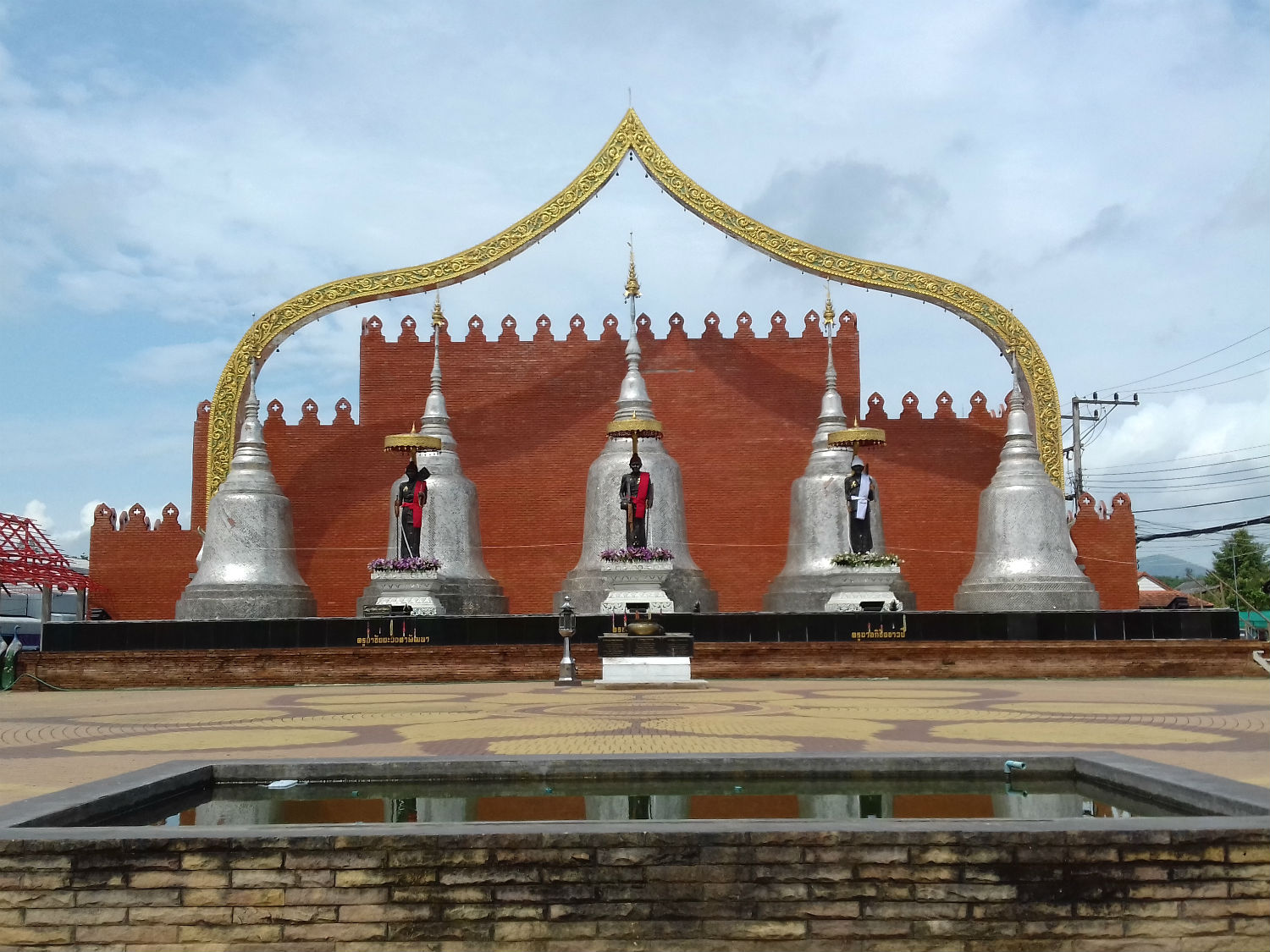
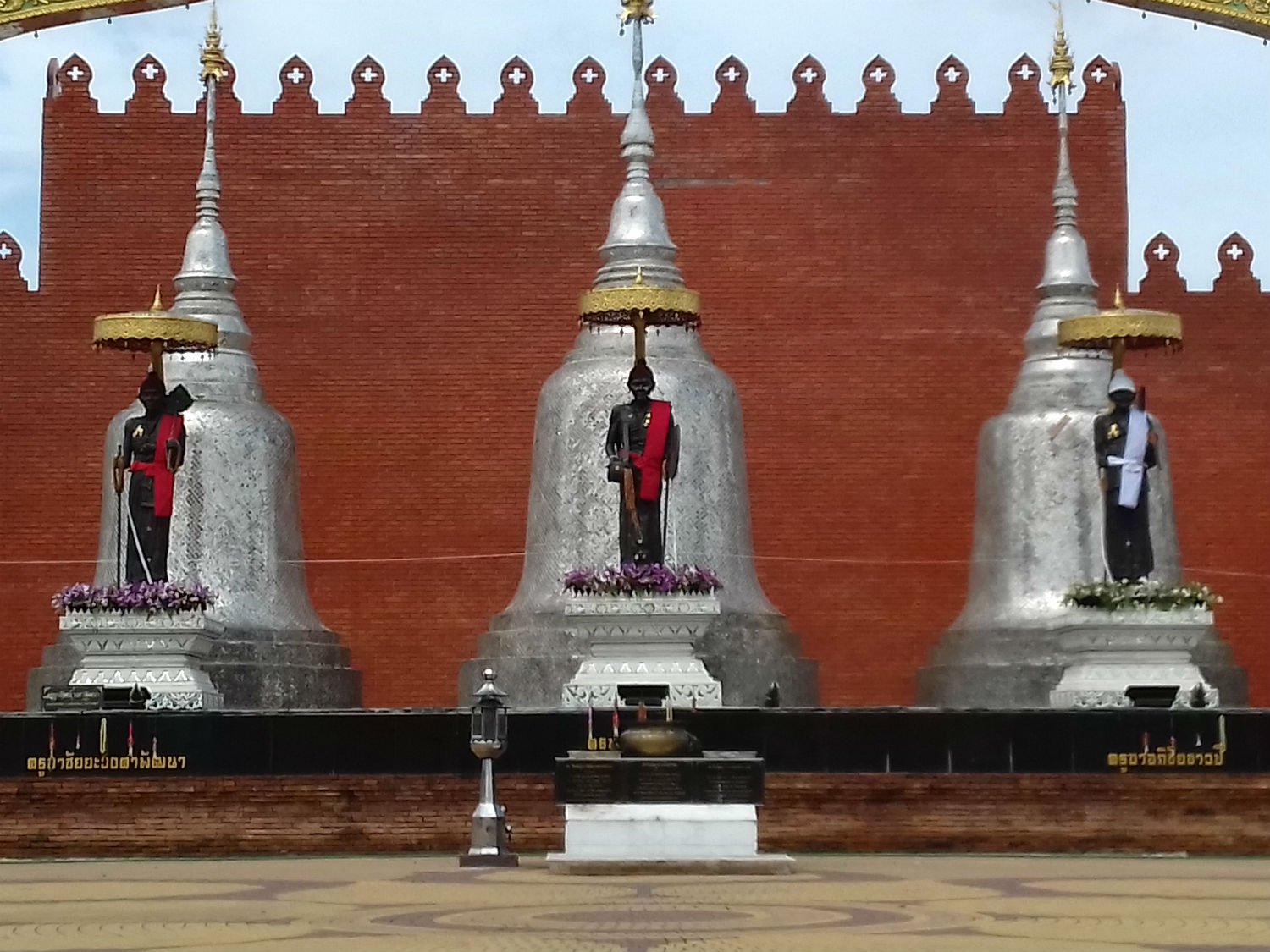
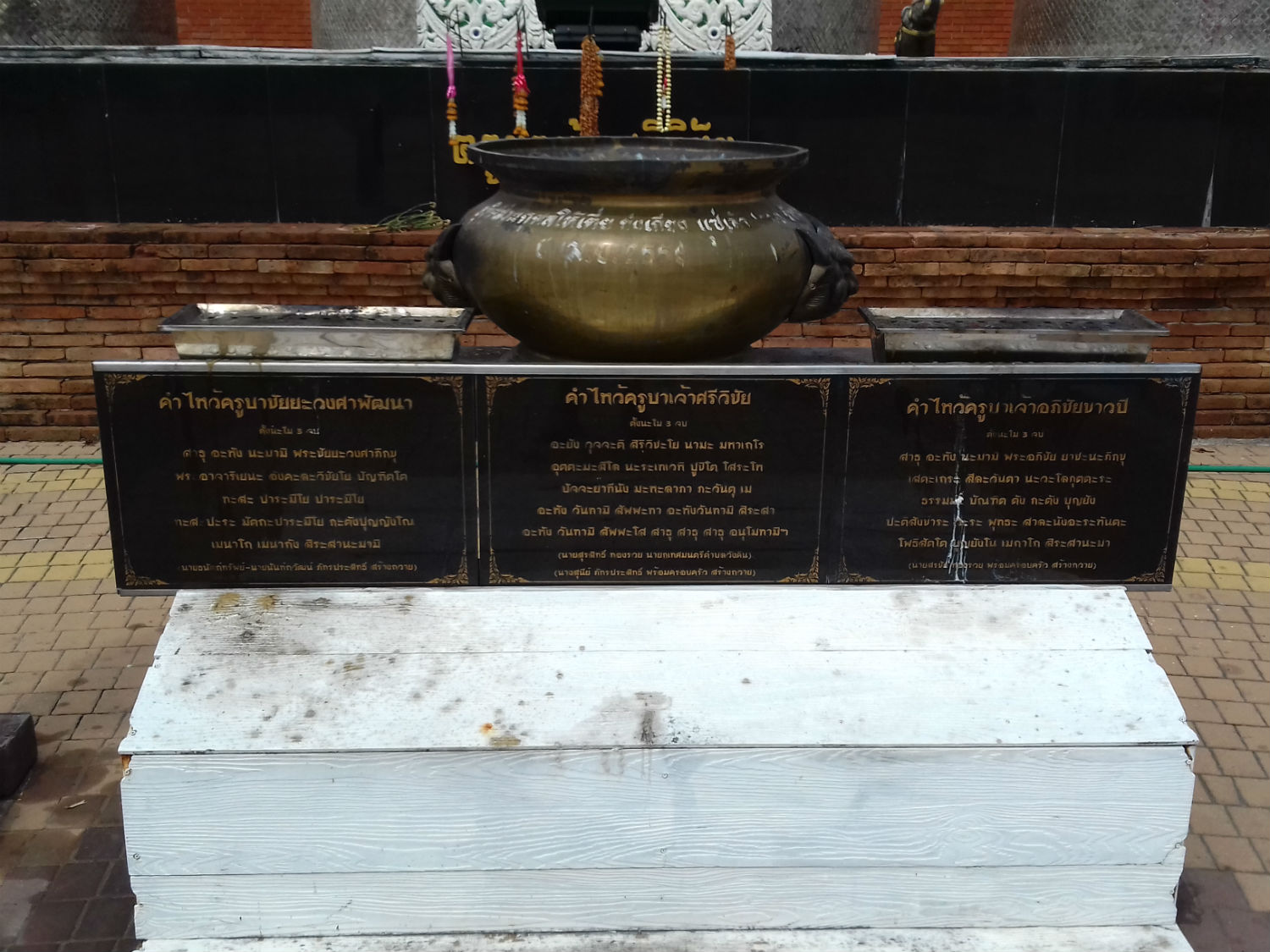 Three Kruba Monument, Li District, Lamphun Province
Three Kruba Monument, Li District, Lamphun Province
Then in a district I wasn’t expecting to find anything of historical interest there are more temples.
Wat Phra That Duang Diao........Wat Phra That Duang Diao is back along Highway 106 on the left. The approach is through an arch carved with elephant figures which gives a clue as to its origin. Remembering the story of Queen Chamathewi’s royal elephant, I shouldn’t be surprised that the chedi here contains some of its remains. As I wander around the large compound, the covered perimetre wall is beautifully adored with mural paintings that unlike those in temple halls seem to tell a story of historical significance. Although dates are left to the imagination, the story goes back to the time of Queen Chamathewi and the Hariphunchai Kingdom. The royal elephant takes centre stage and although it’s impossible to separate myth from fact, the murals clearly show that Li was an important frontier town at that time repelling invading armies from the south. This has left me wondering again about life during those times.
Wat Phra That Duang Diao........Wat Phra That Duang Diao is back along Highway 106 on the left. The approach is through an arch carved with elephant figures which gives a clue as to its origin. Remembering the story of Queen Chamathewi’s royal elephant, I shouldn’t be surprised that the chedi here contains some of its remains. As I wander around the large compound, the covered perimetre wall is beautifully adored with mural paintings that unlike those in temple halls seem to tell a story of historical significance. Although dates are left to the imagination, the story goes back to the time of Queen Chamathewi and the Hariphunchai Kingdom. The royal elephant takes centre stage and although it’s impossible to separate myth from fact, the murals clearly show that Li was an important frontier town at that time repelling invading armies from the south. This has left me wondering again about life during those times.
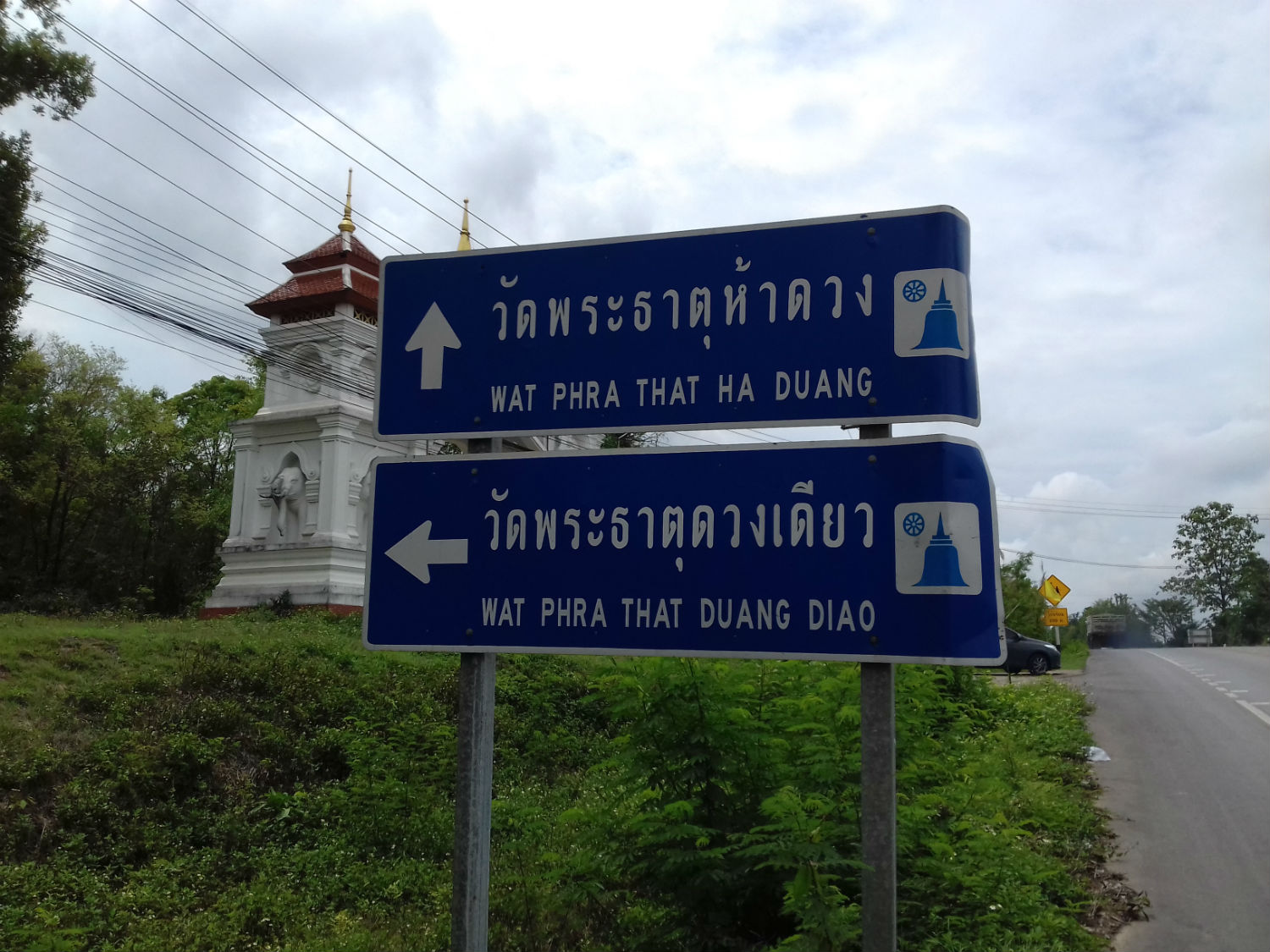
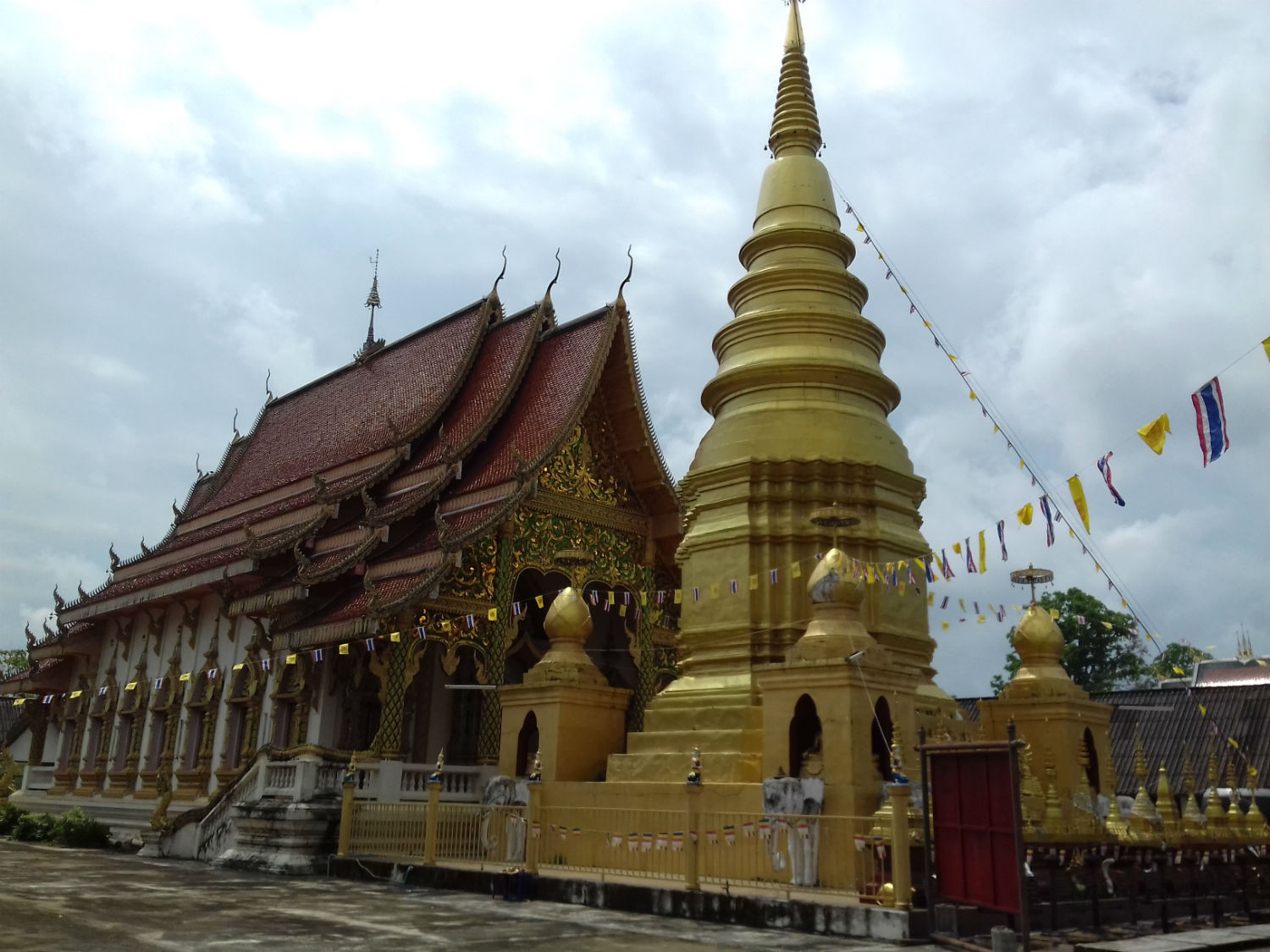
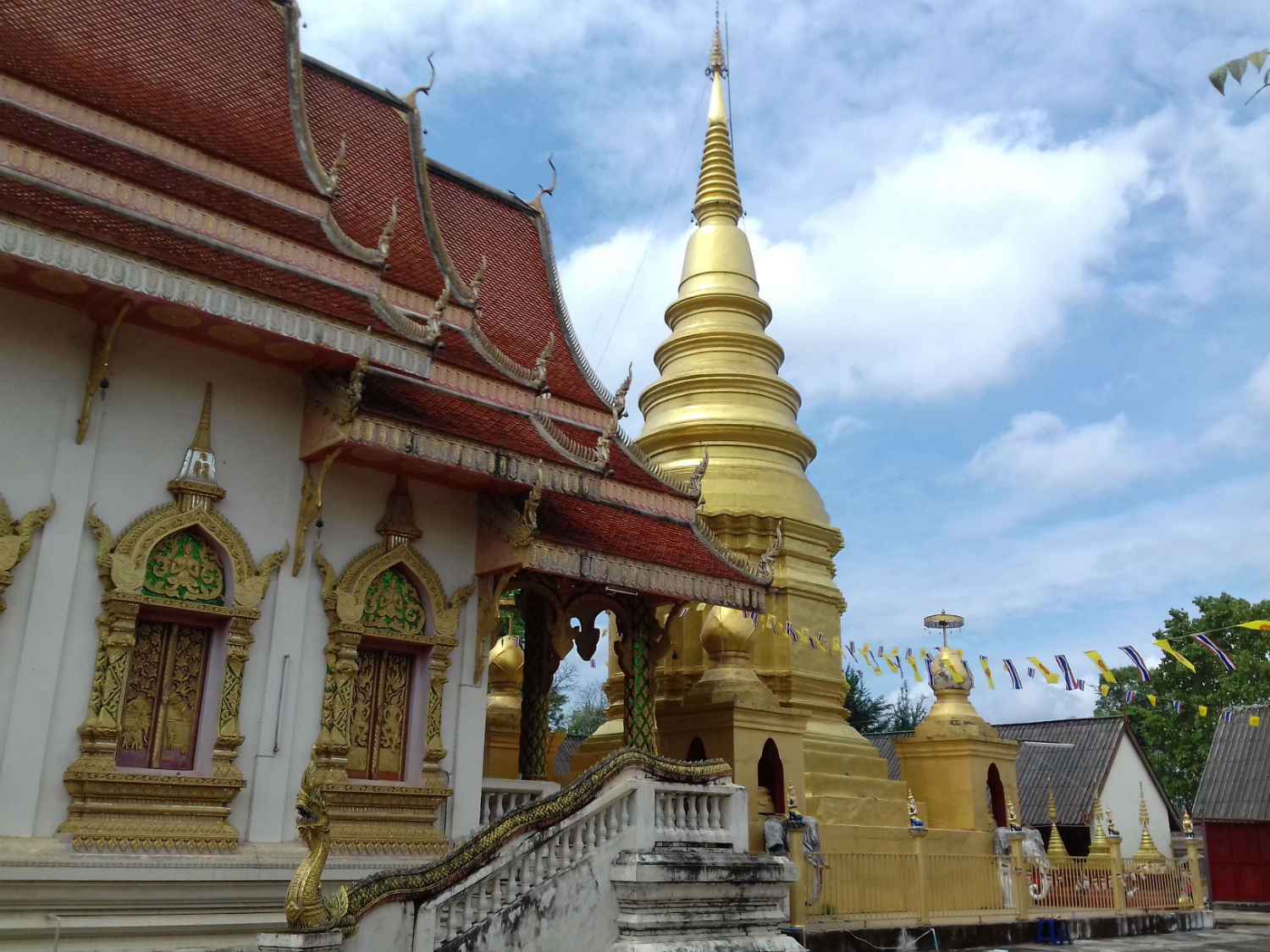
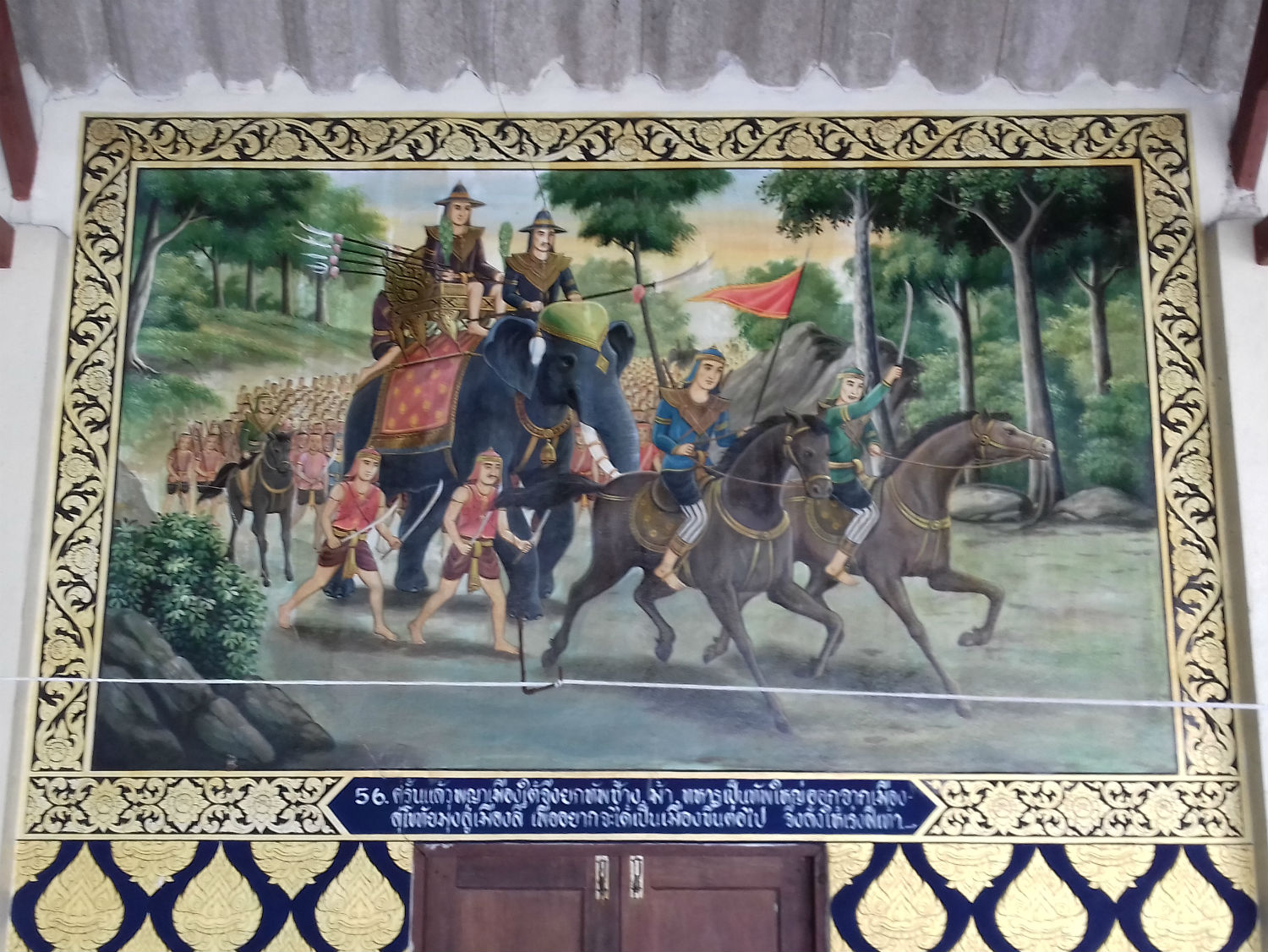
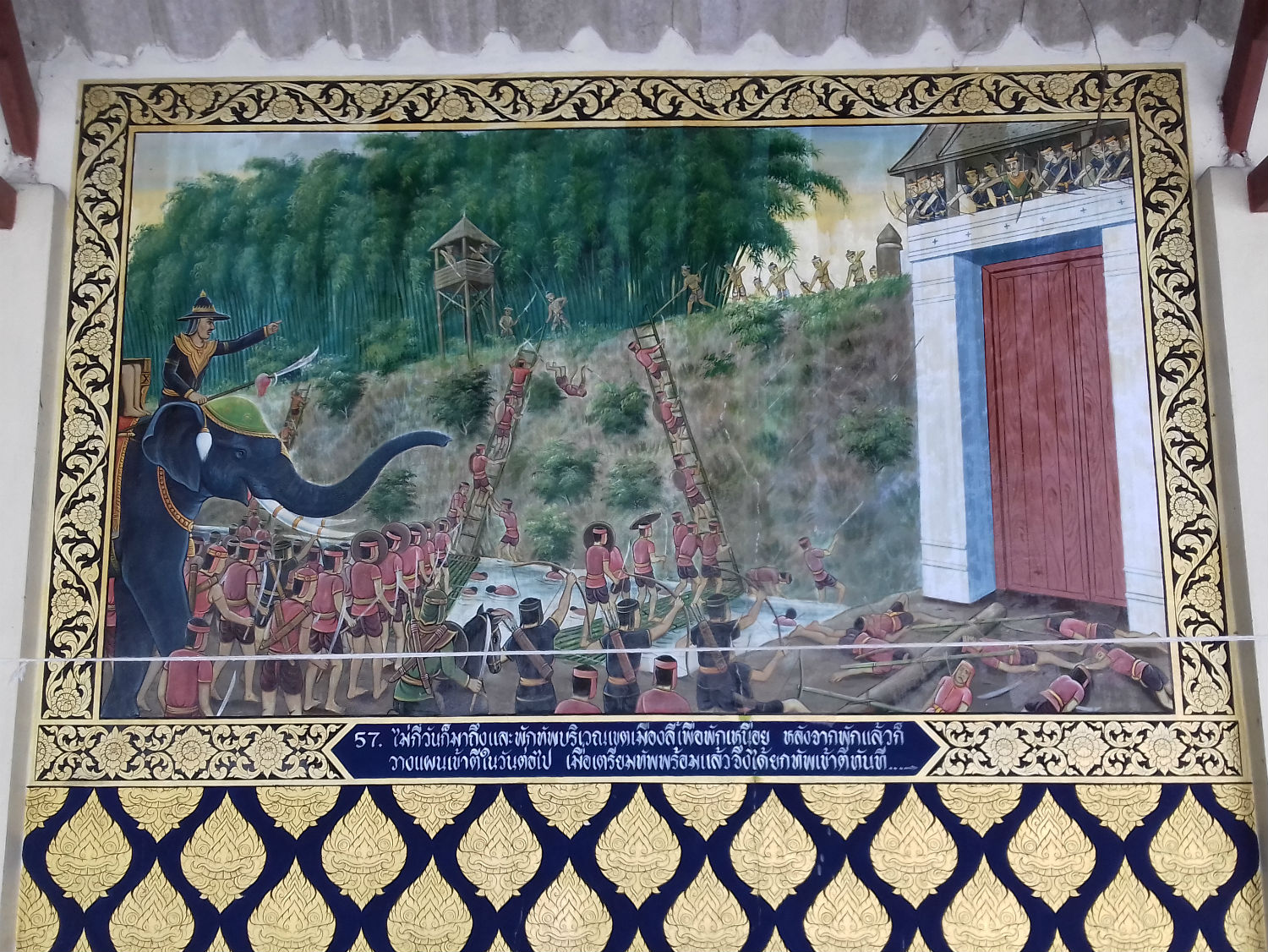
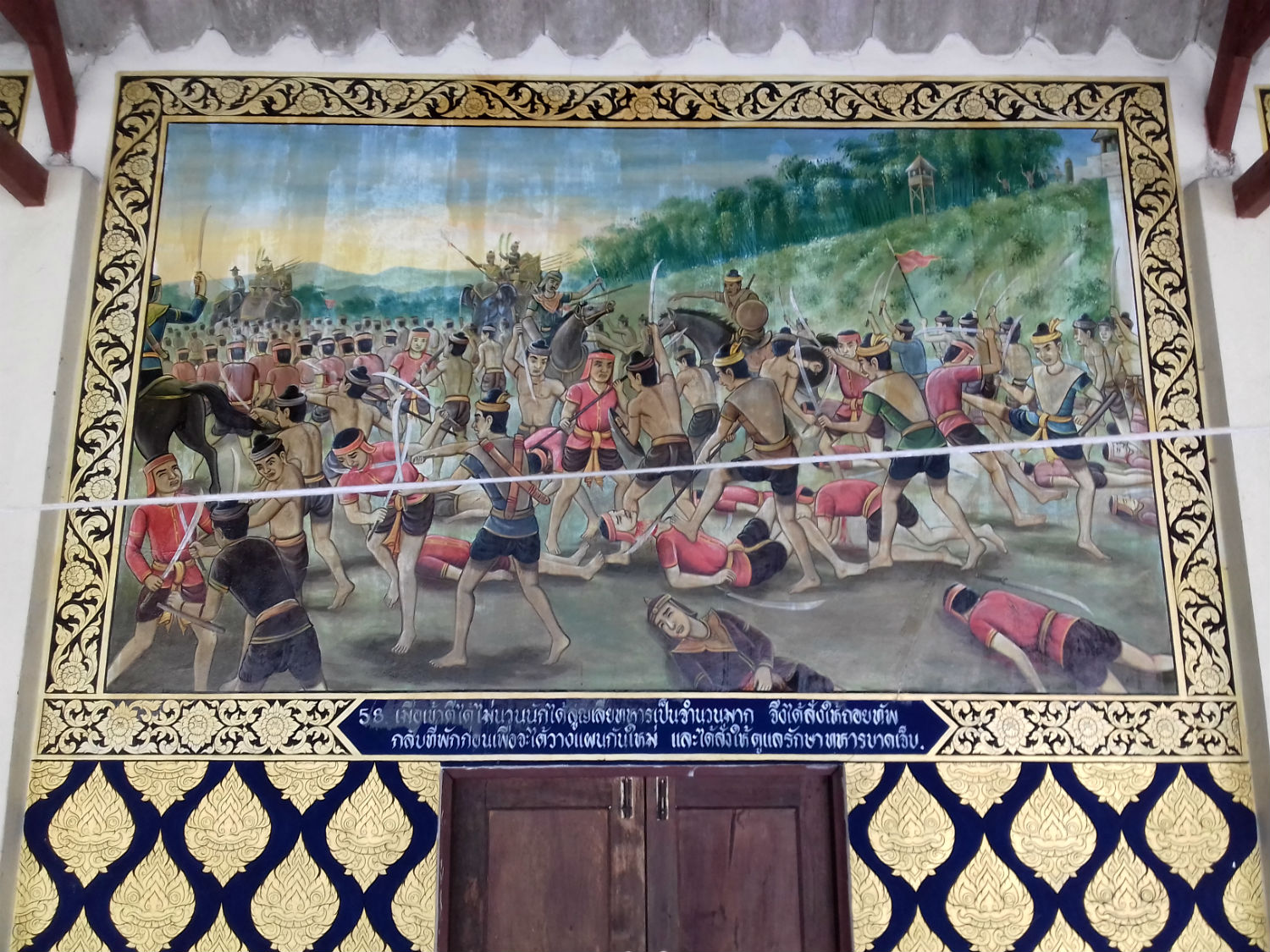
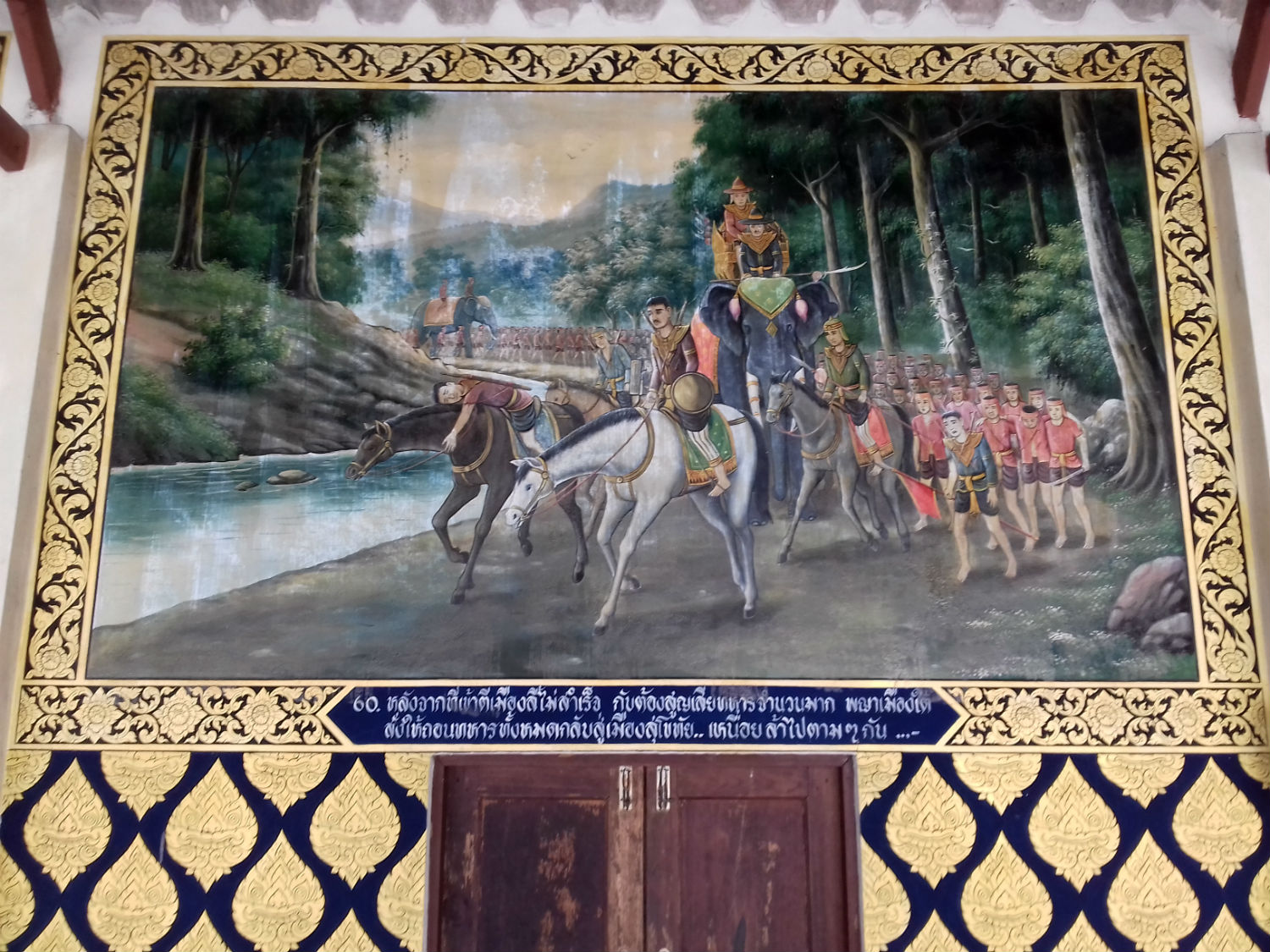
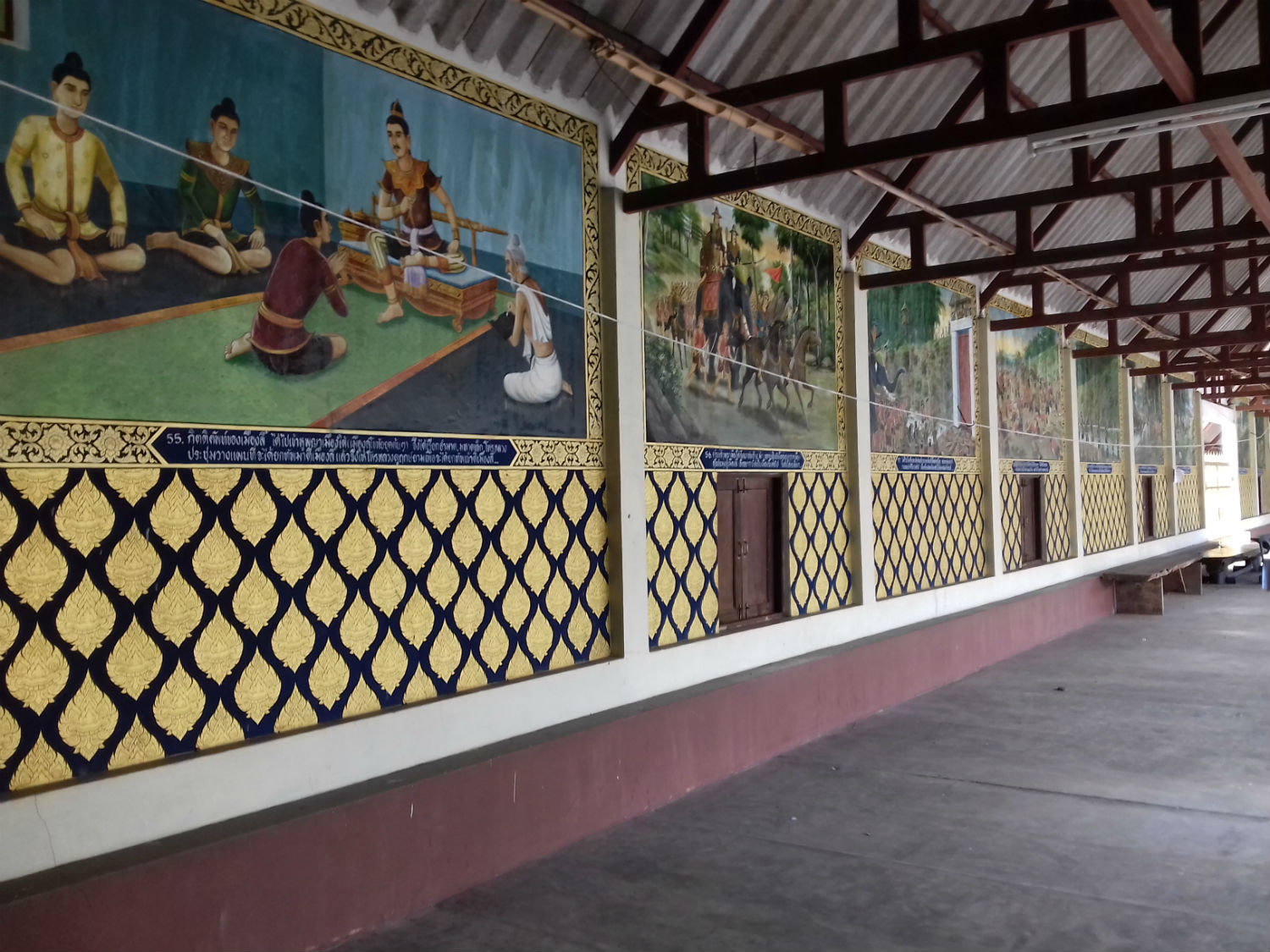
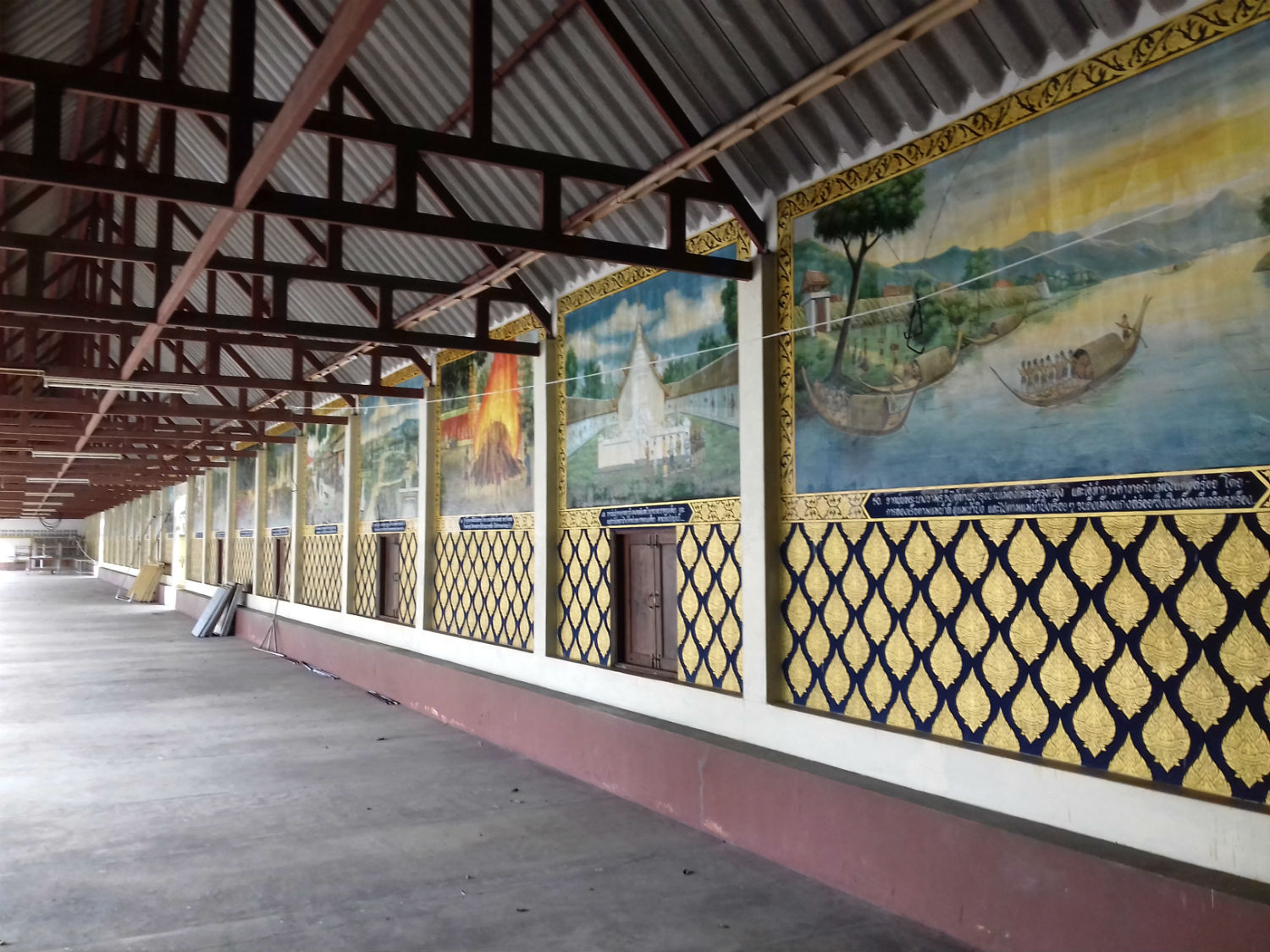
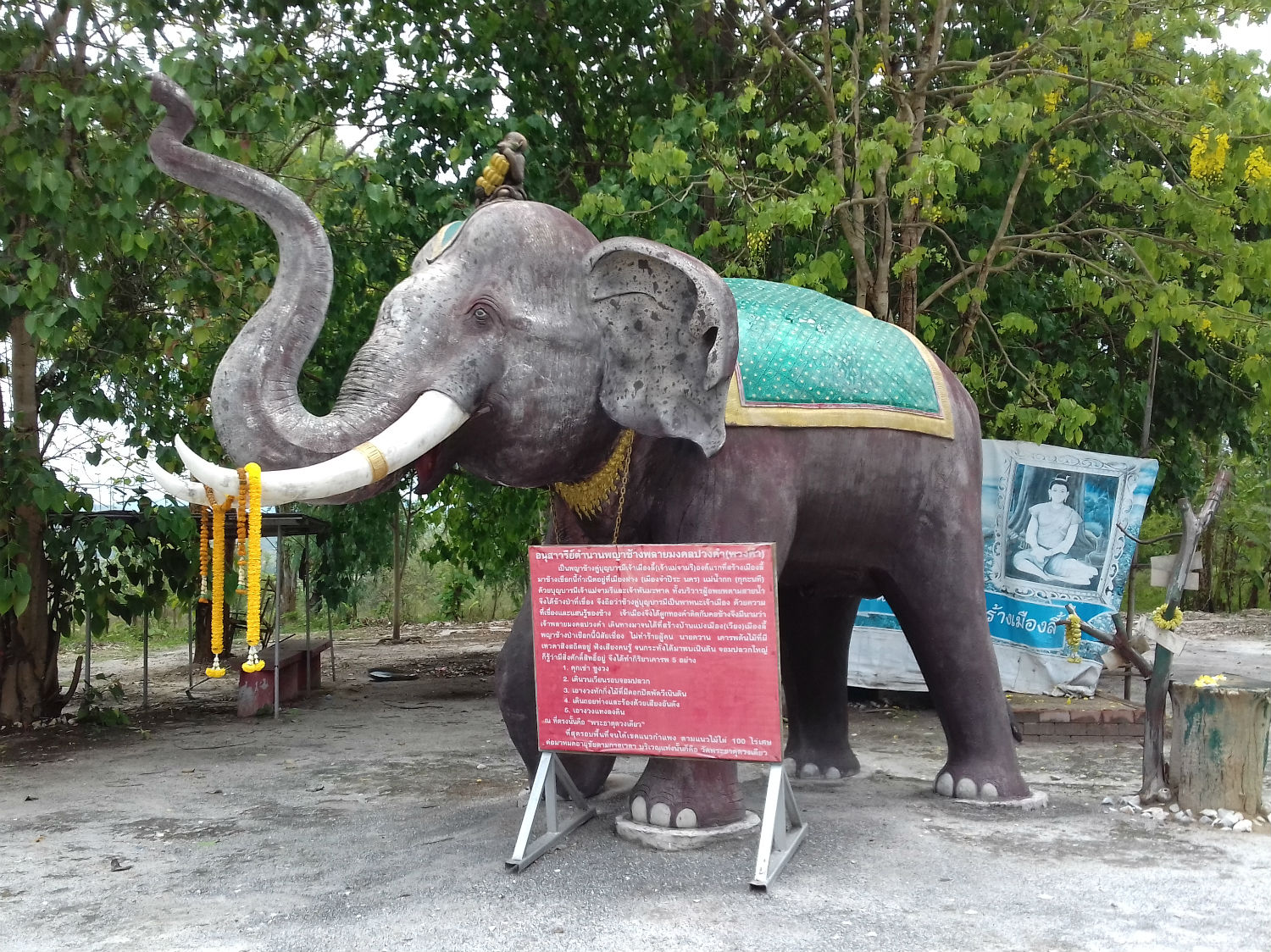
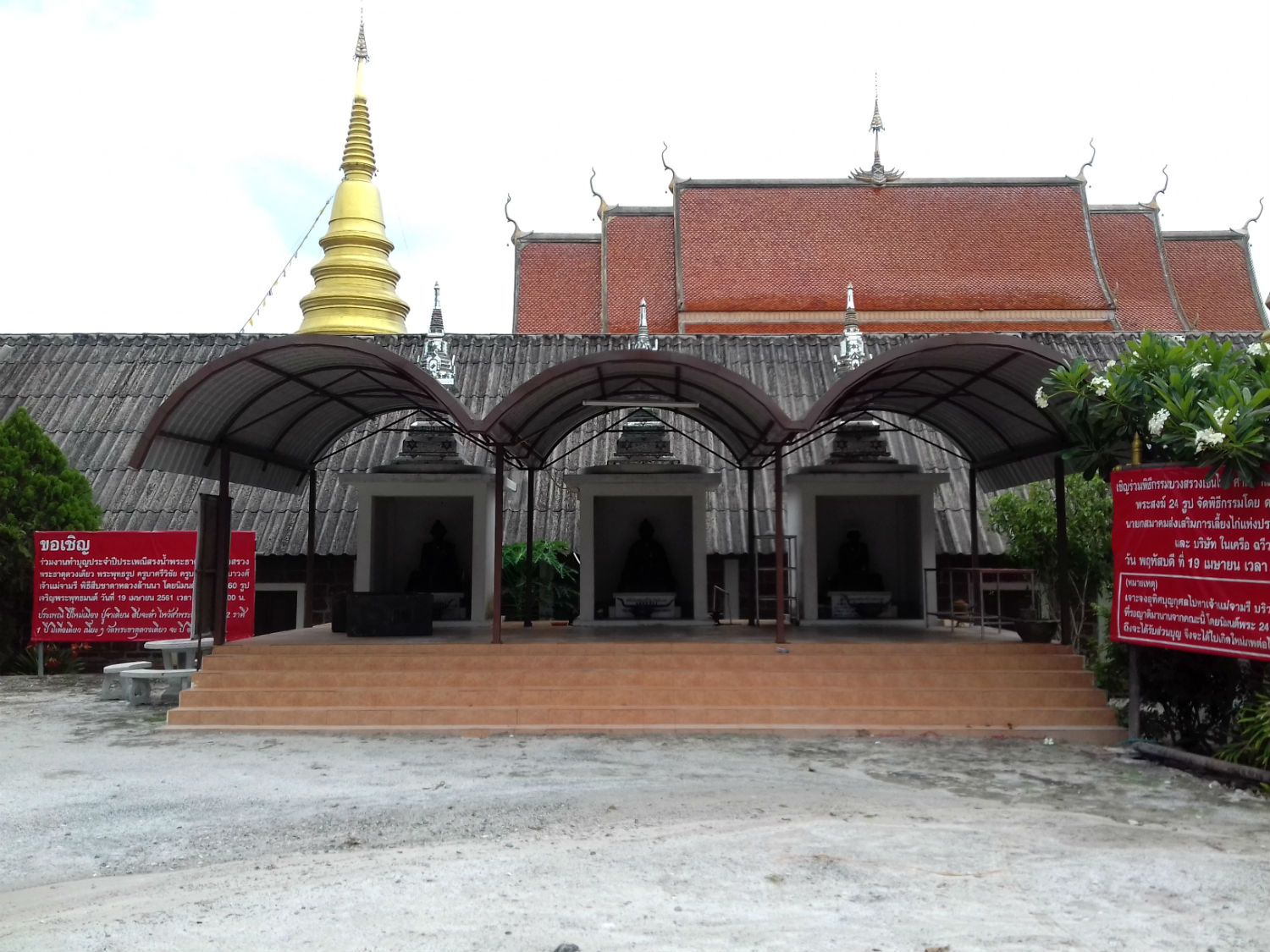
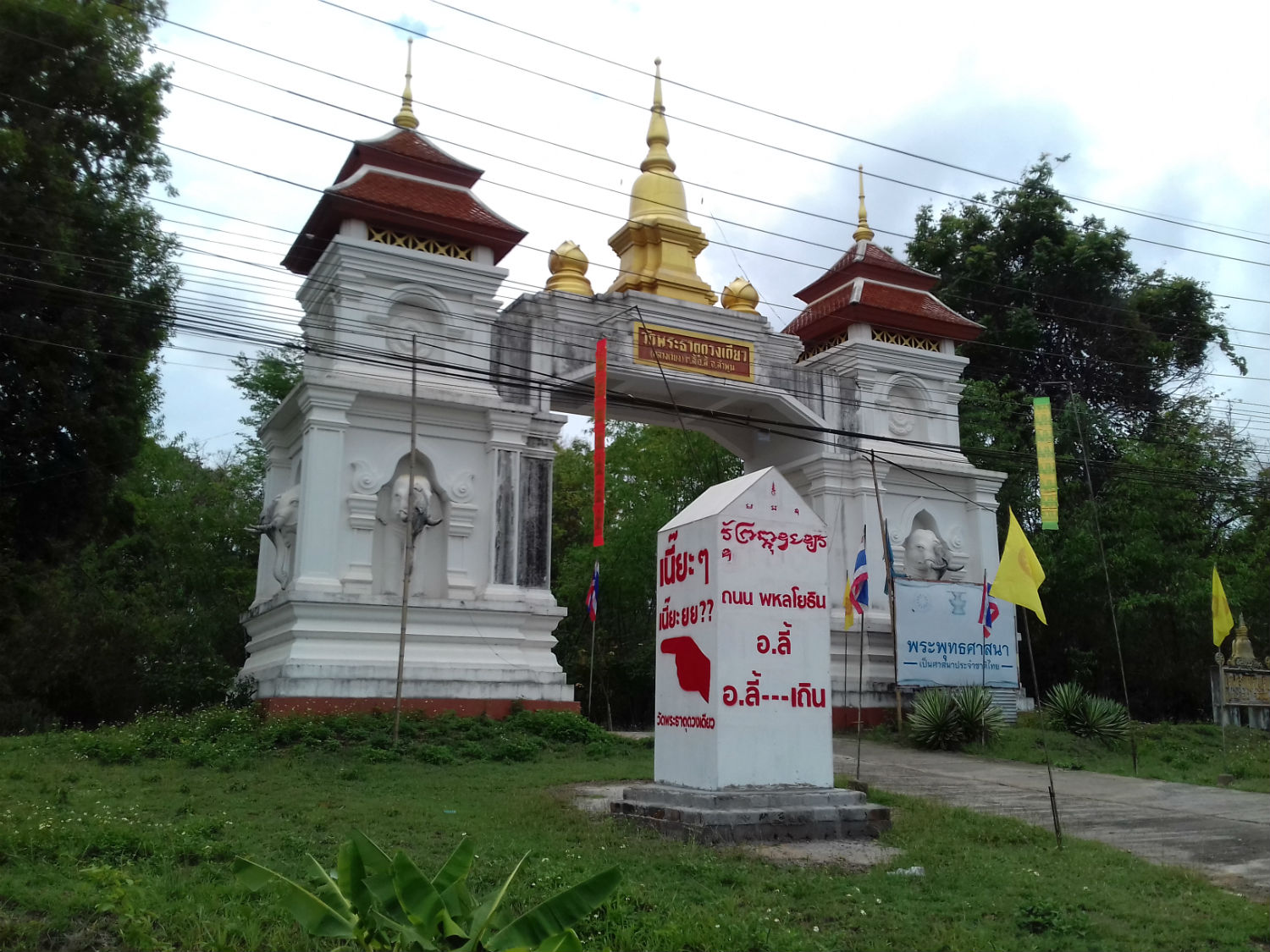 Wat Phra That Duang Diao, Li District, Lamphun Province
Wat Phra That Duang Diao, Li District, Lamphun Province
Wat Phra That Ha Duang........Wat Phra That Ha Duang is just a couple of kilometres further along the 106 also approached through an arch in gold and silver on the left of the road. Katoon informs me that this temple and the last we visited are the only two remaining from the Hariphunchai Kingdom suggesting that there must have been quite a large garrison here then. It’s known that Queen Chamathewi came here to pay tribute. It’s also clear that the area was abandoned for a very long time. Presumably after Lanna became a vassal state of Siam there was no longer the need for a garrison. It’s probably only in the last 100 years that some resettlement has taken place here and the beautiful structures we see onsite today added on top of original bases built from laterite blocks.
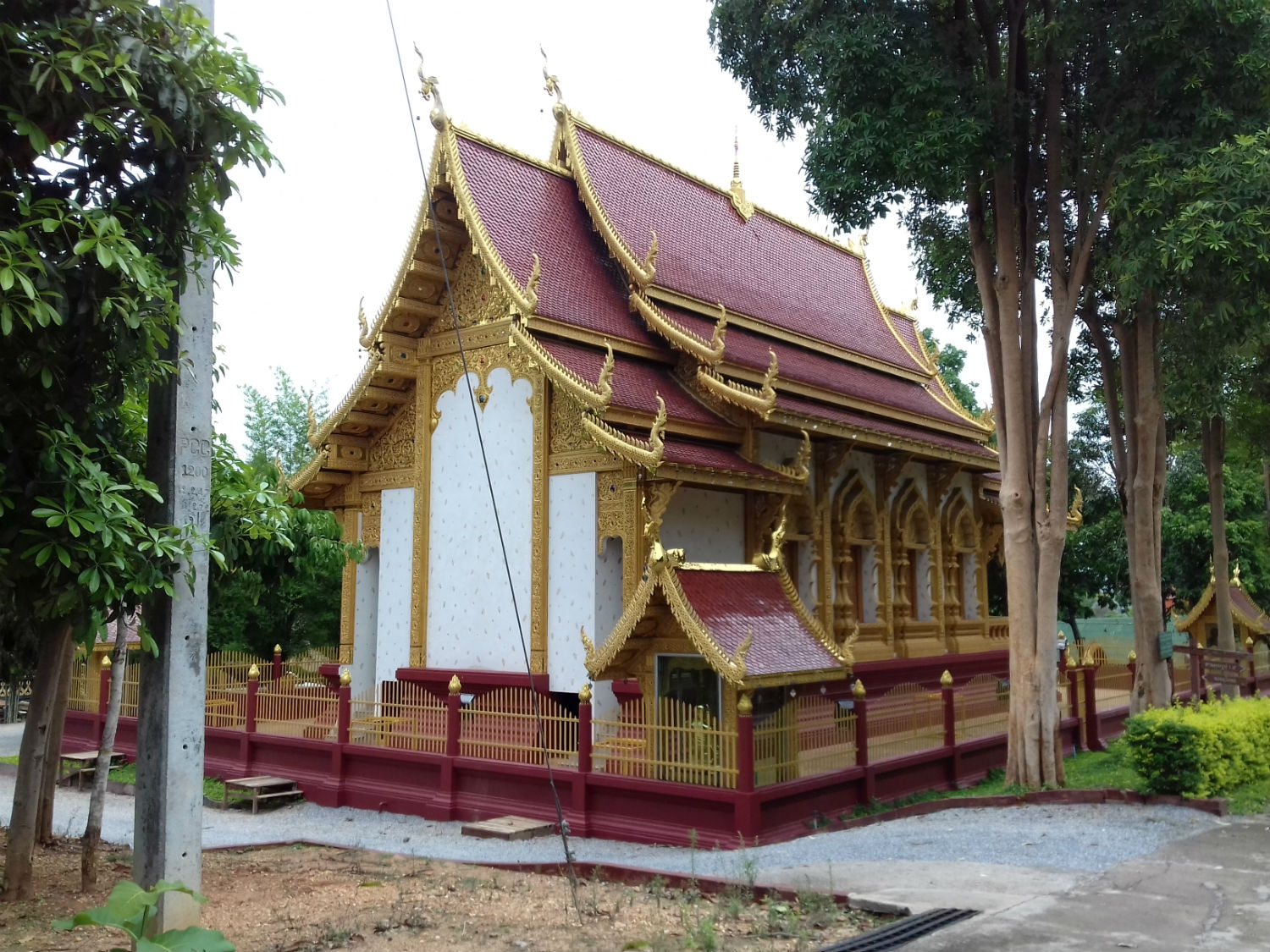
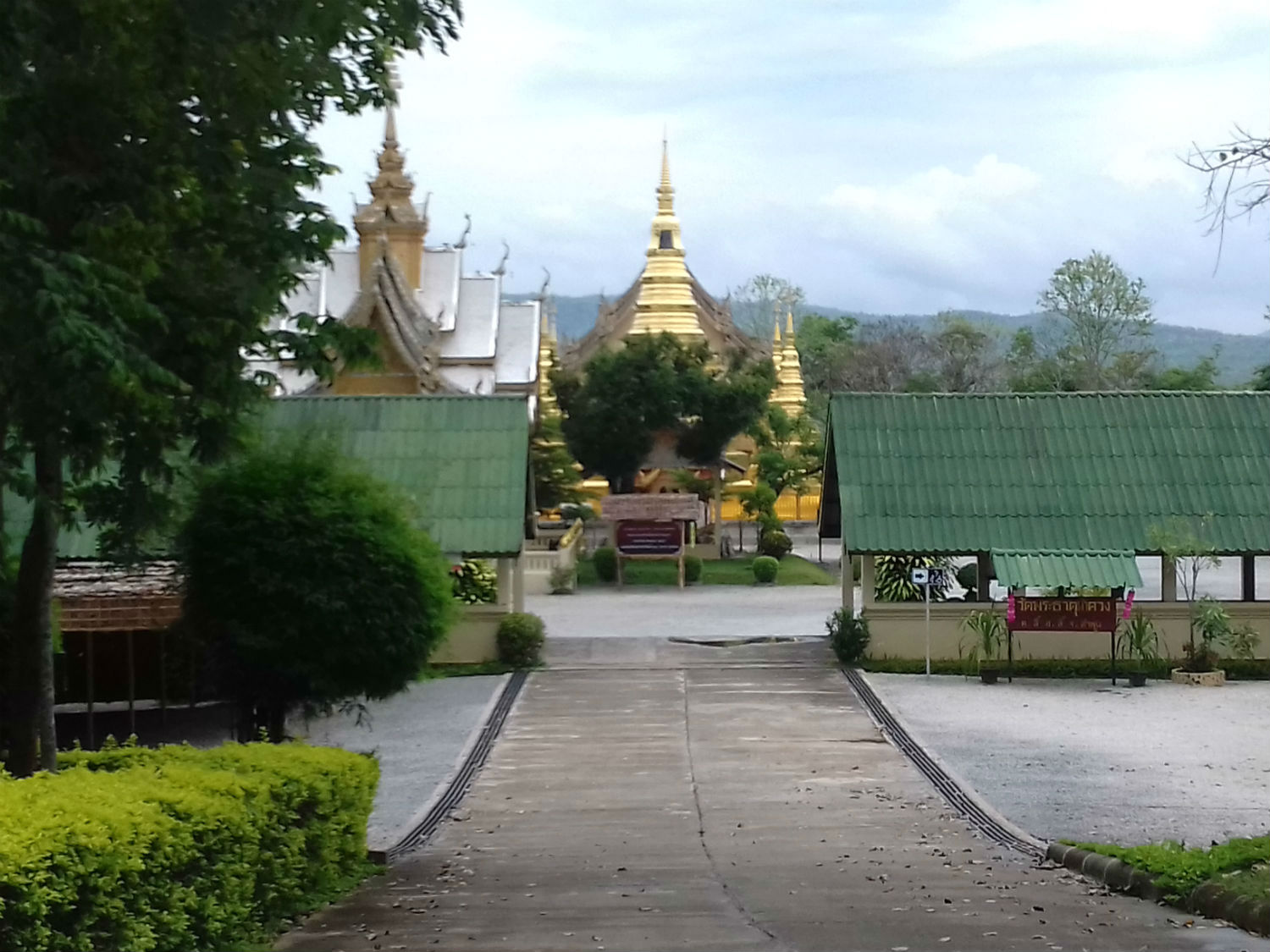
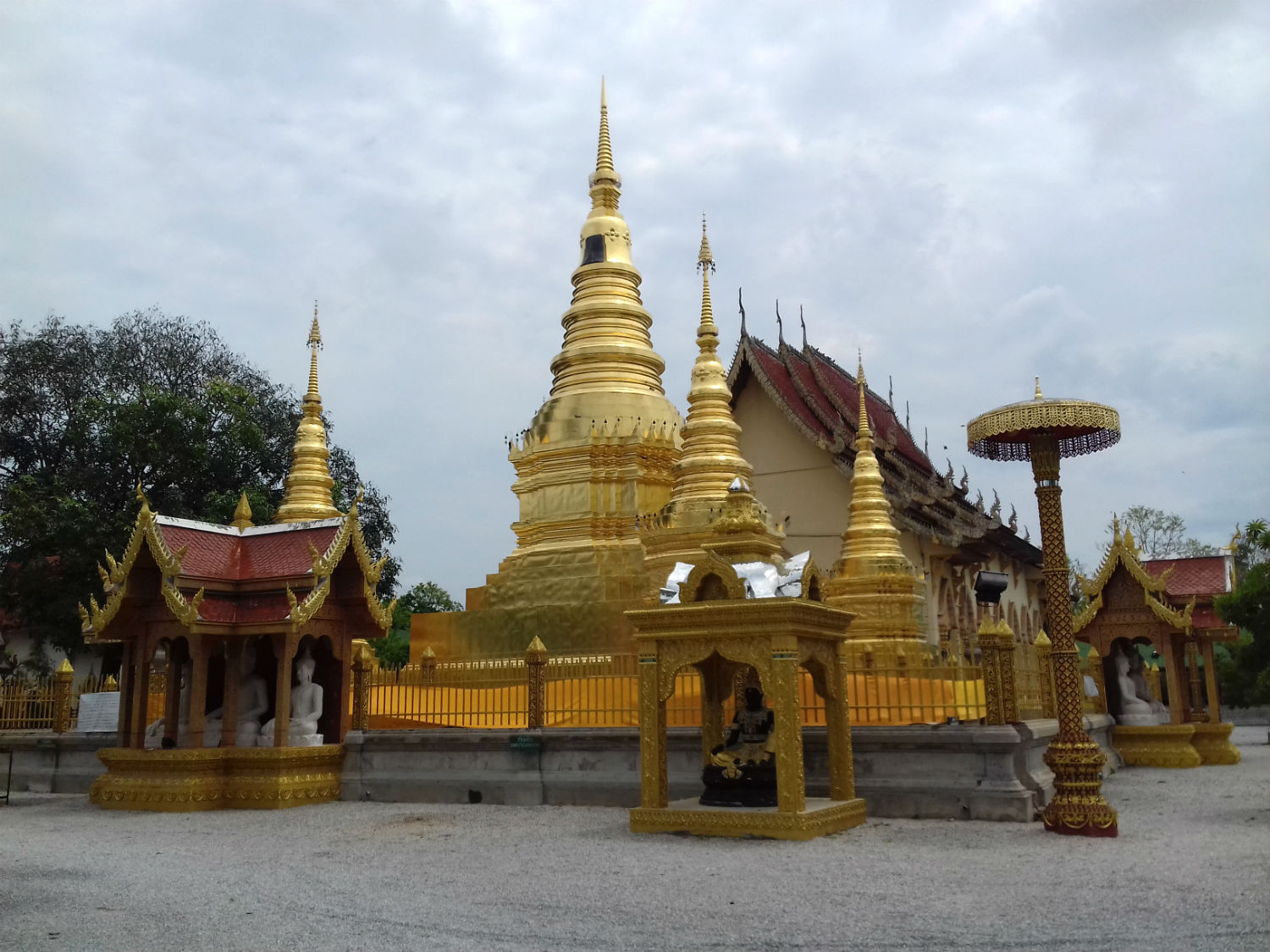
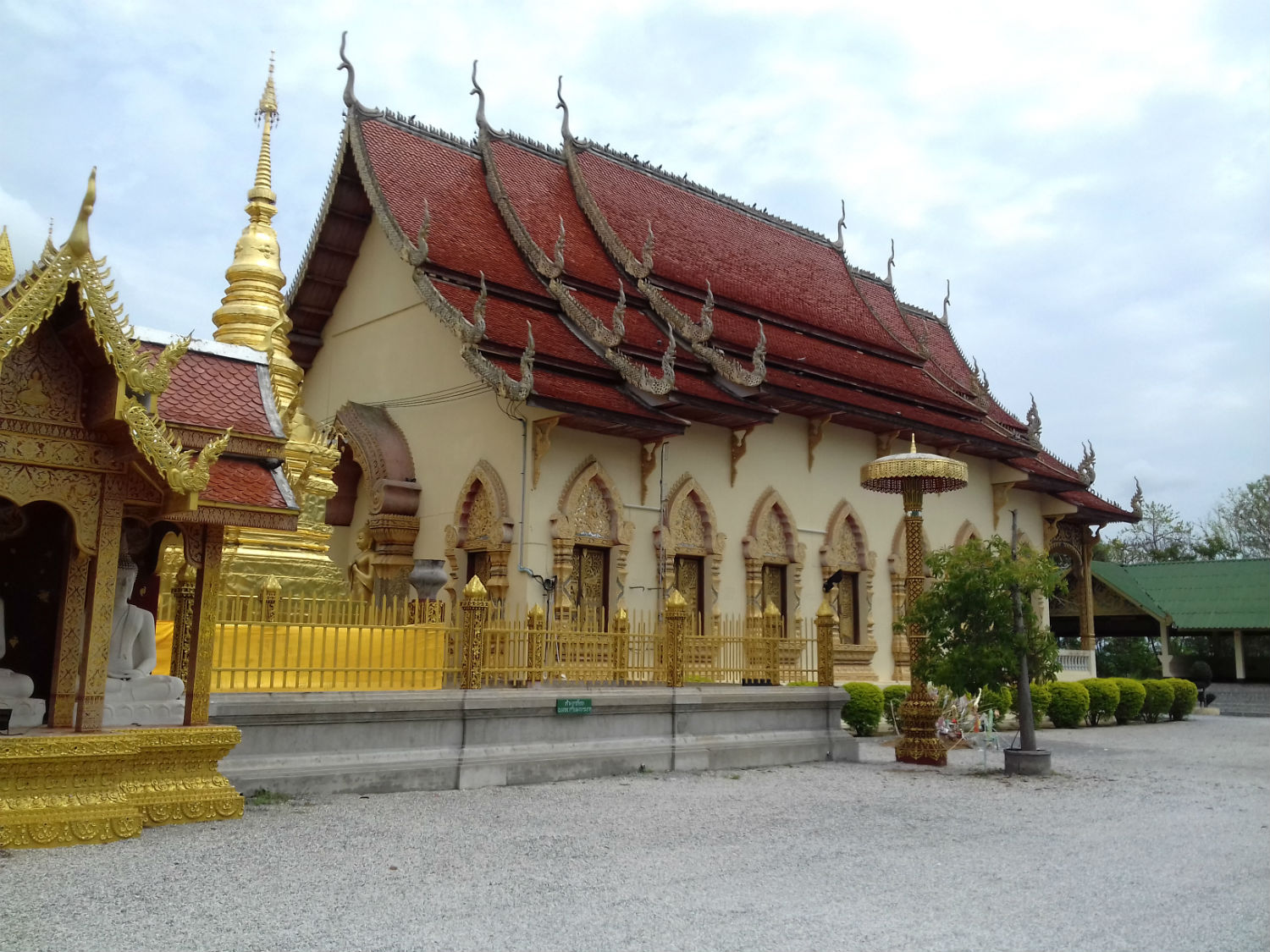
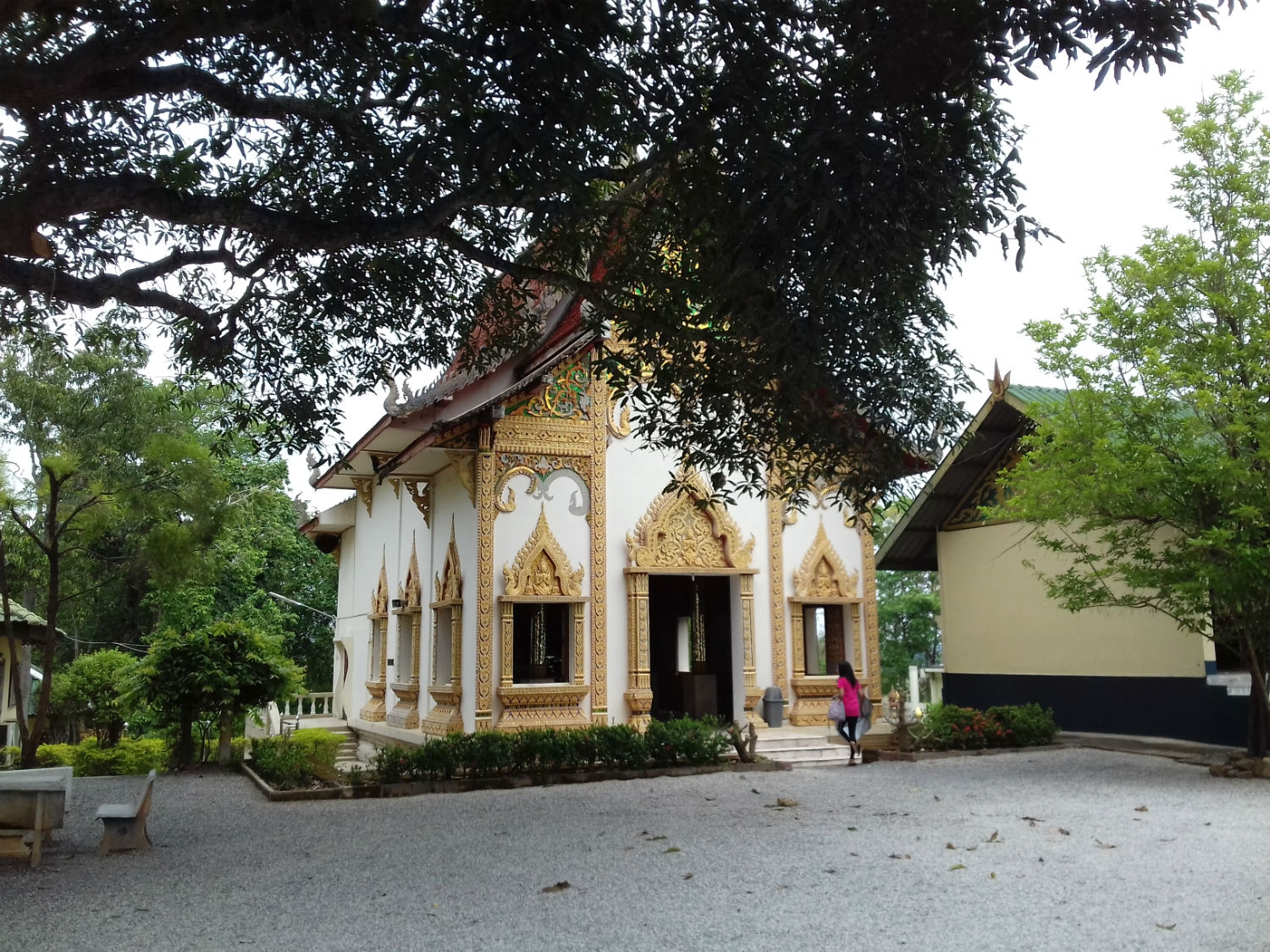
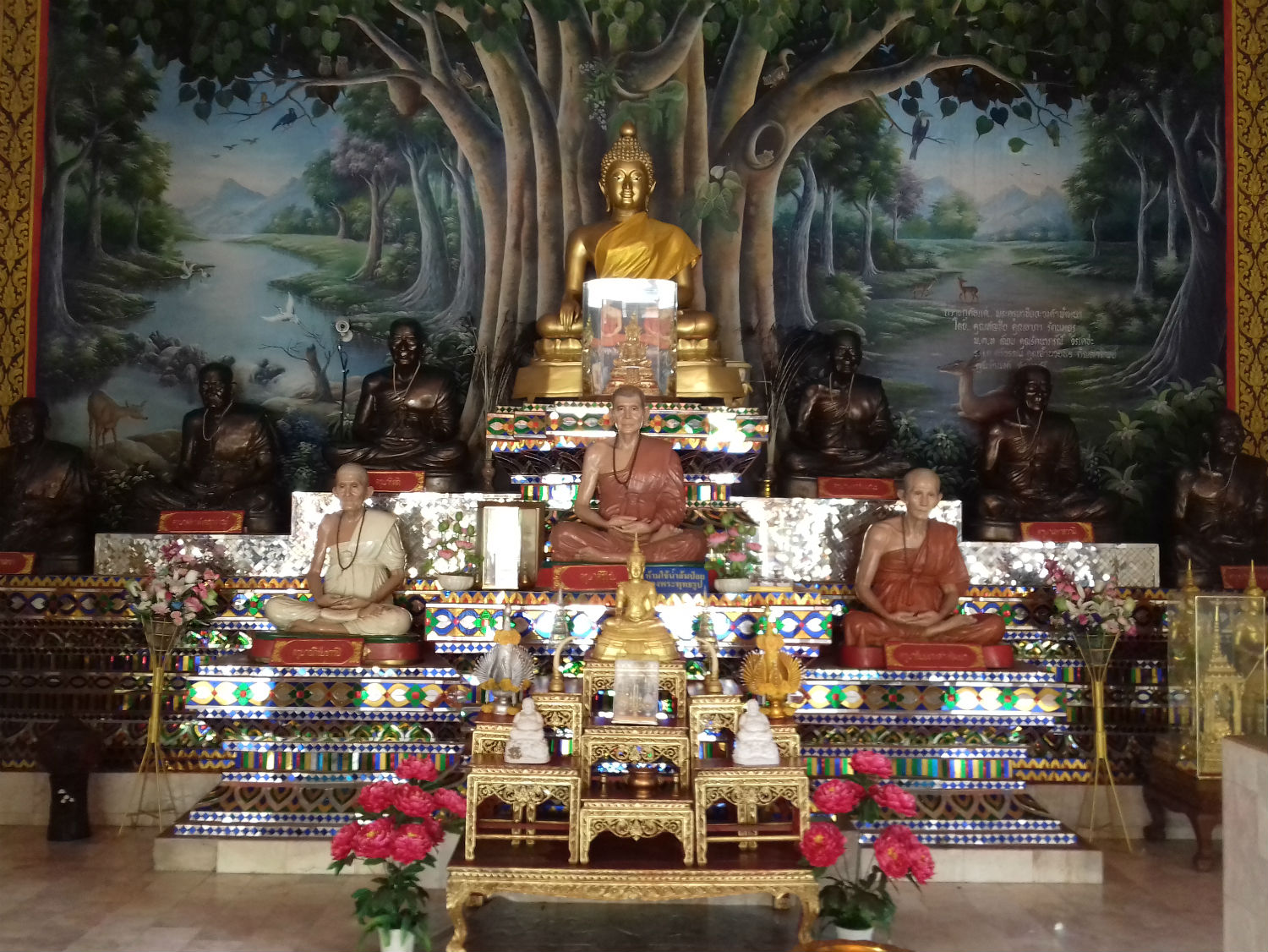
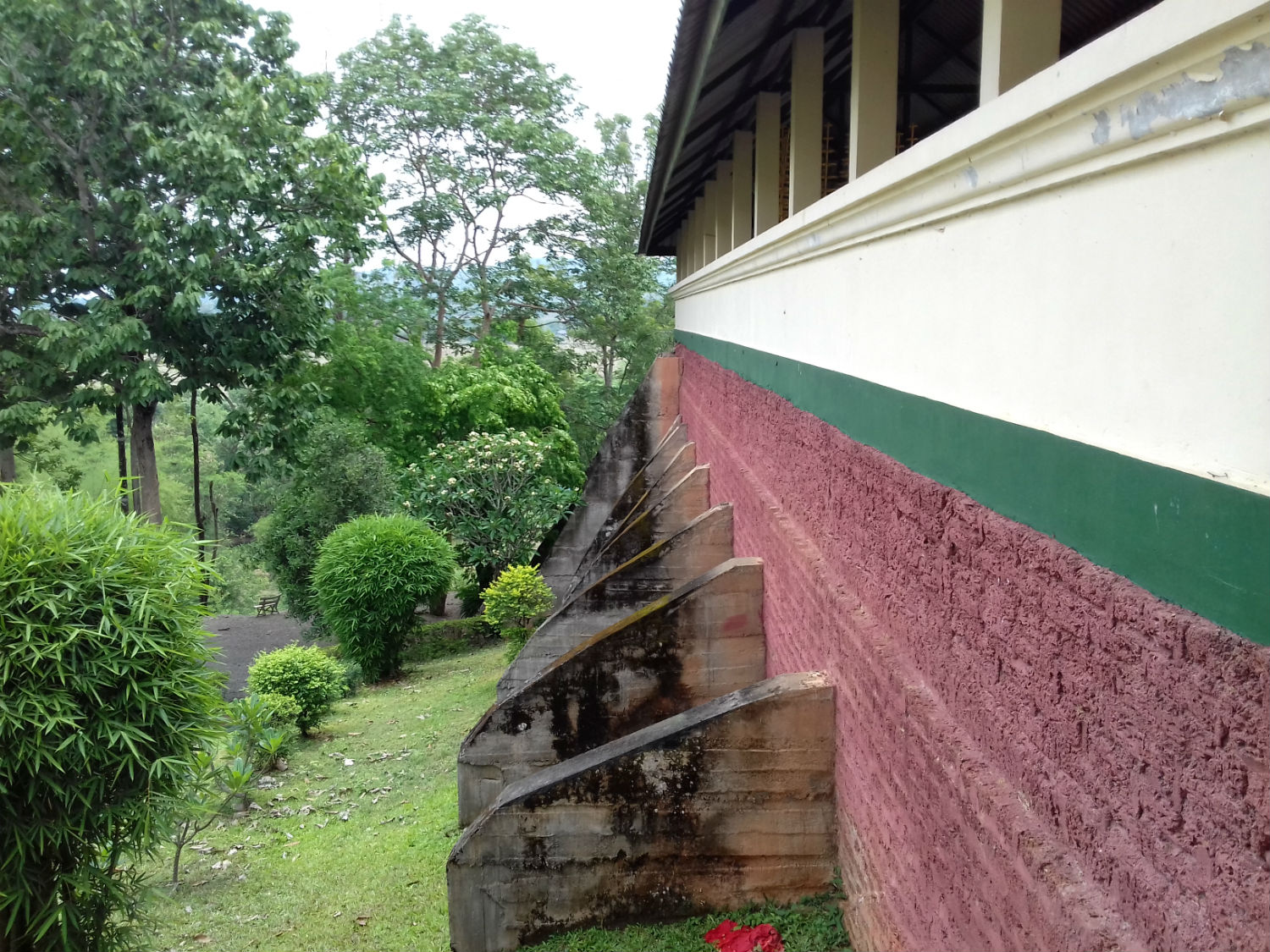
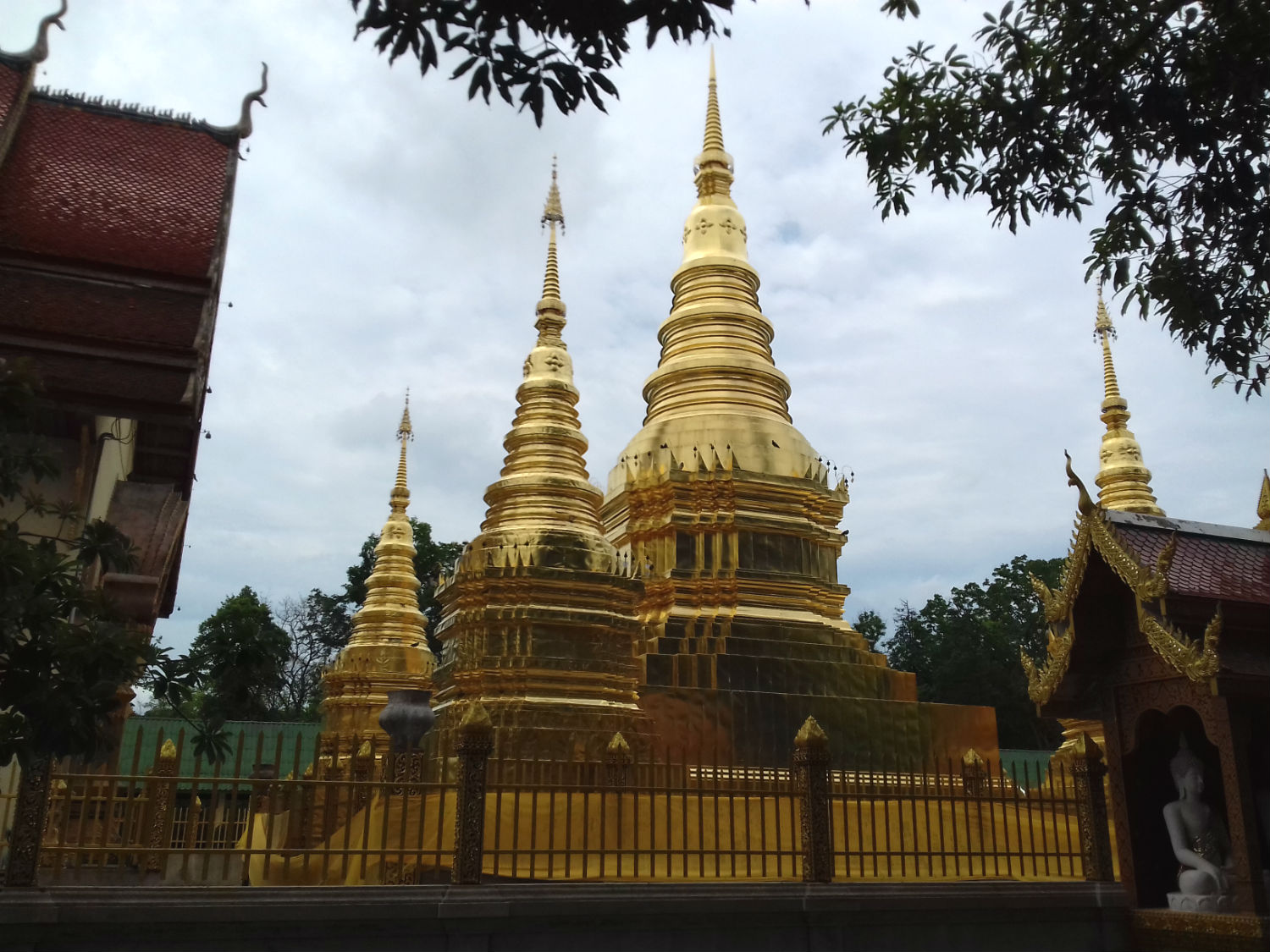
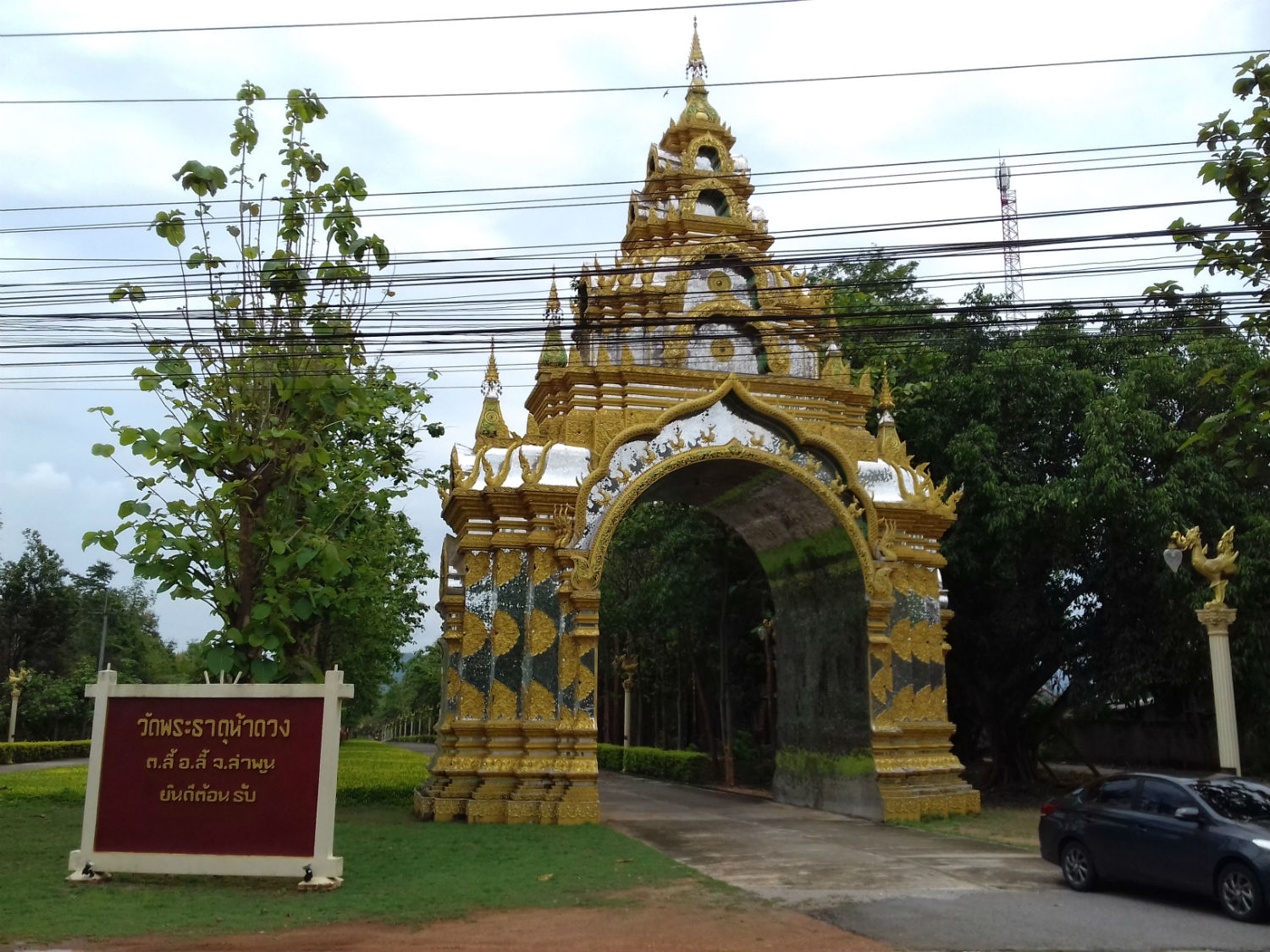 Wat Phra That Ha Duang, Li District, Lamphun Province
Wat Phra That Ha Duang, Li District, Lamphun Province
Chedi Phra Mahathat Si Wiang Chai........Further along the 106 we turn off towards tambon Na Sai locating Chedi Phra Mahathat Si Wiang Chai. With no onsite information available, I use information online which states that this temple is the largest in Li district and the temple of the hill tribe village of Phrabat Huay Tom. At the entrance is the monument of Kruba Chaiya Wongsa but the outstanding feature is the Mahathat pagoda of Sri Wiang Chai. The structure of this pagoda is similar to the Shwedagon Pagoda of Myanmar that was built in Lanna style with laterite. Its height is 64.39 metres on a 40 x 40 metre base making it the largest pagoda of Thailand. The pagoda is surrounded with 5 large statues of the Buddha and 48 small pagodas in Sri Lankan style.
For Katoon its no ordinary temple as is has significance related to her year of birth. Basically according to the Thai zodiac there is a chedi in for each and every one of us. Unfortunately for Katoon the chedi for the year of the horse is the Shwedagon Pagoda; this one is a copy.
For Katoon its no ordinary temple as is has significance related to her year of birth. Basically according to the Thai zodiac there is a chedi in for each and every one of us. Unfortunately for Katoon the chedi for the year of the horse is the Shwedagon Pagoda; this one is a copy.
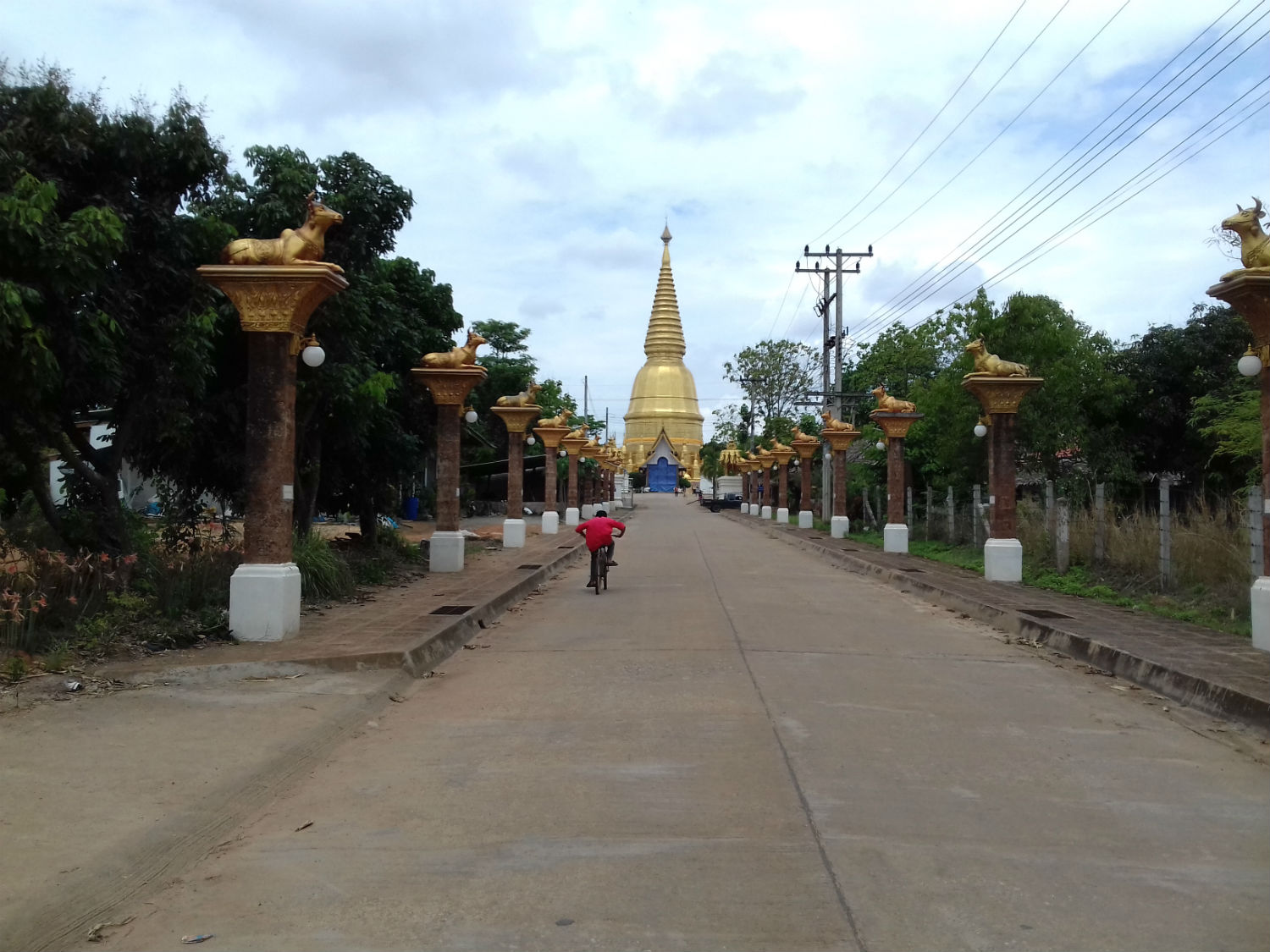
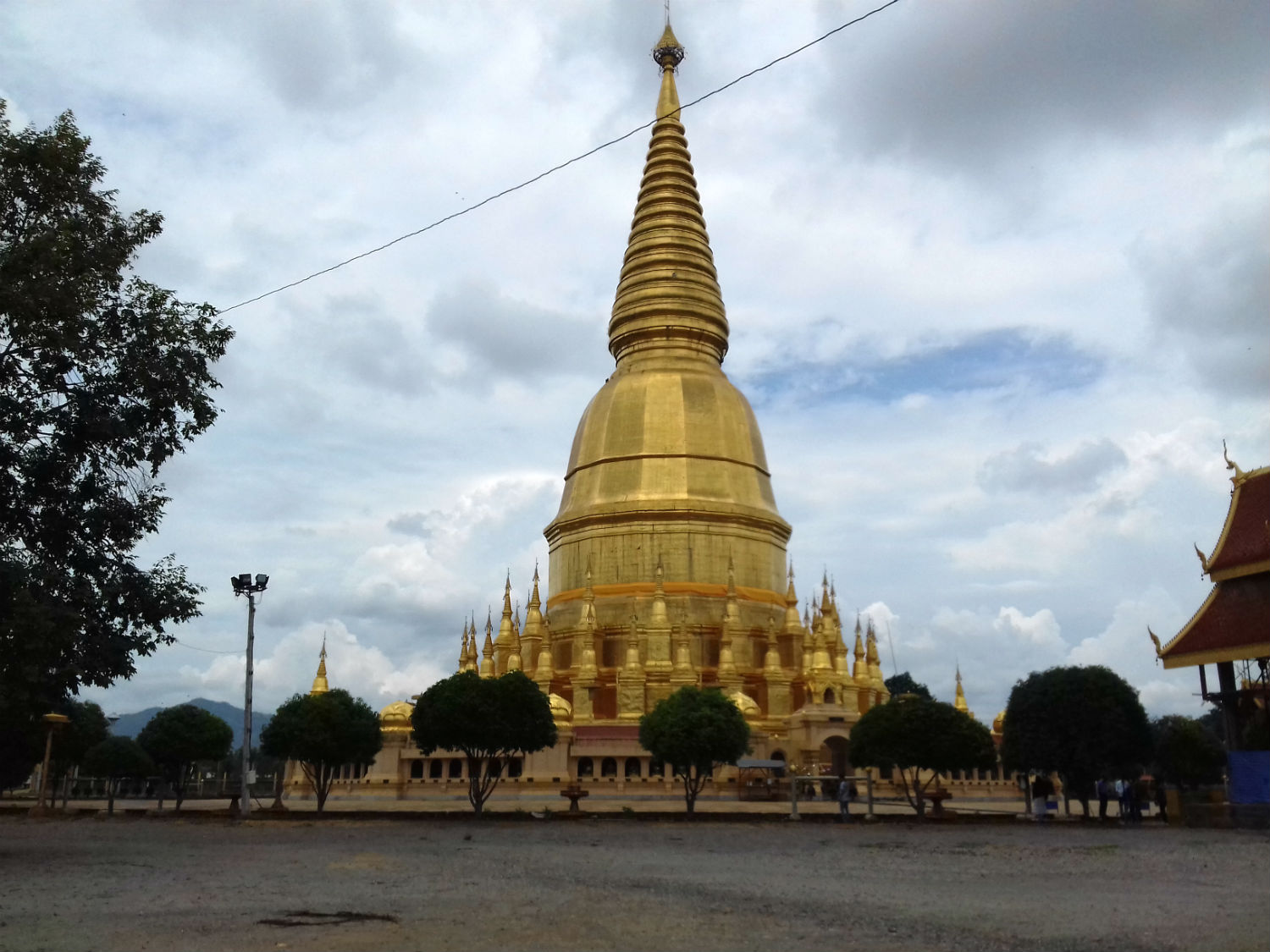
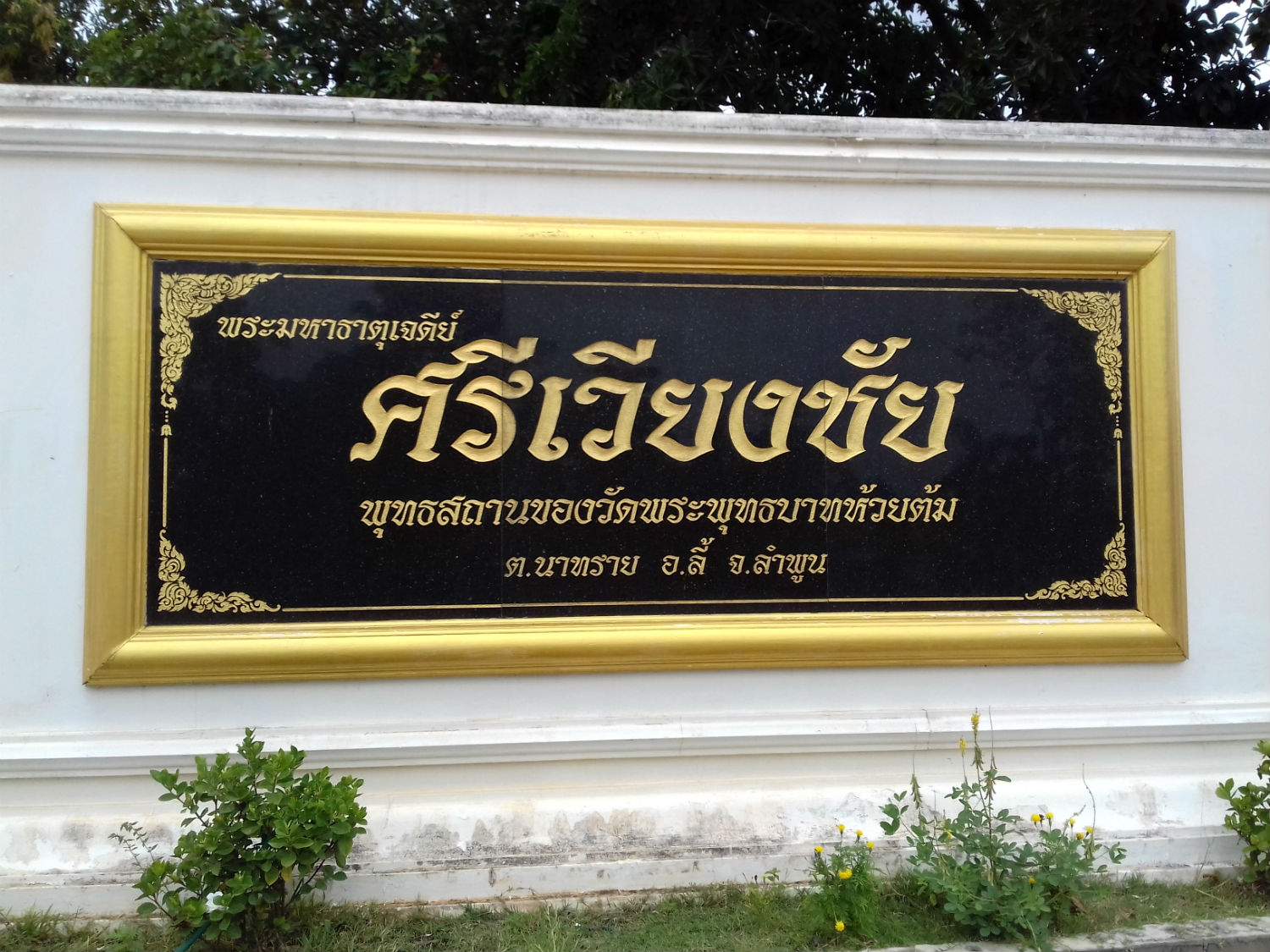 Chedi Phra Mahathat Si Wiang Chai, Li District, Lamphun Province
Chedi Phra Mahathat Si Wiang Chai, Li District, Lamphun Province
Wat Phra Bat Huai Tom........
Located not far from Chedi Phra Mahathat Si Wiang Chai, Baan Phra Bat Huai Tom was originally named ‘Baan Huai Khow Tom’, hardly a proper village, just featuring a monastery (named Luang Pu Kruba Wong Lent). In the past, Luang Pu Kruba Wong (Chaiawongsa) travelled around walking between each of the villages of Paka Kao Yo in the hills of the northern provinces of Tak, Mae Hong Son, Chiang Mai, and Lamphun. As a result, many villagers grew to respect and follow Luang Pu Kruba Wong. When he began to stay at Wat Phra Phutthabat Huai Tom, there were lots of followers from Paka Kao Yo who came to stay and settle down at Baan Phra Bat Huai Tom. Eventually, they began to eat vegetarian food just like Kruba Chaiyawongsa who pointed out the disadvantages of consuming meat and taught and inspired the people of Paka Kao Yo to change their diet. As a result, the villagers started to believe in Buddhism instead of ghosts. Phra Bat Huai Tom is another peaceful community area which has a way of life closely linked to Buddhism and the doctrines of the Buddha and was officially designated as a village in 1975.
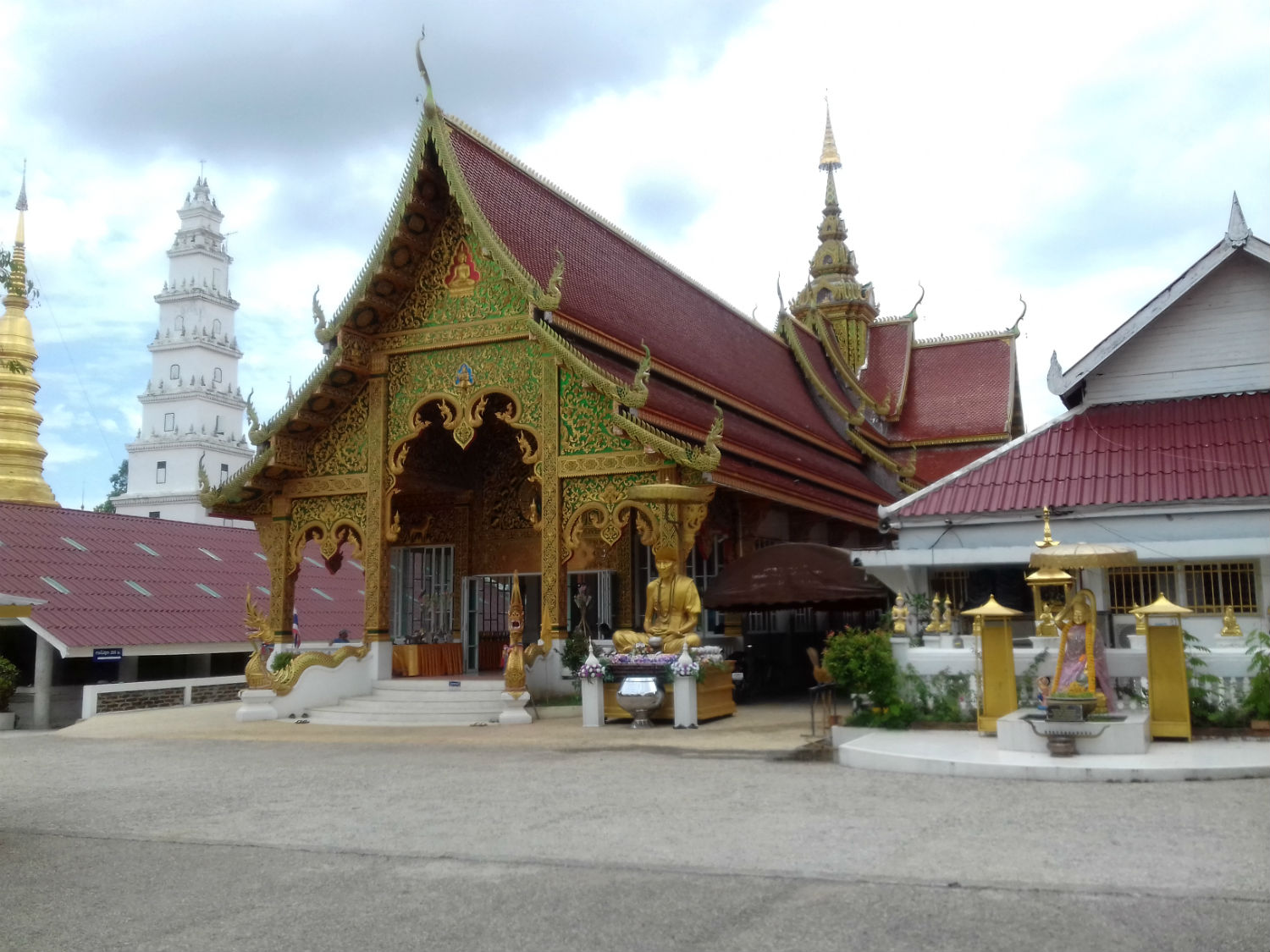
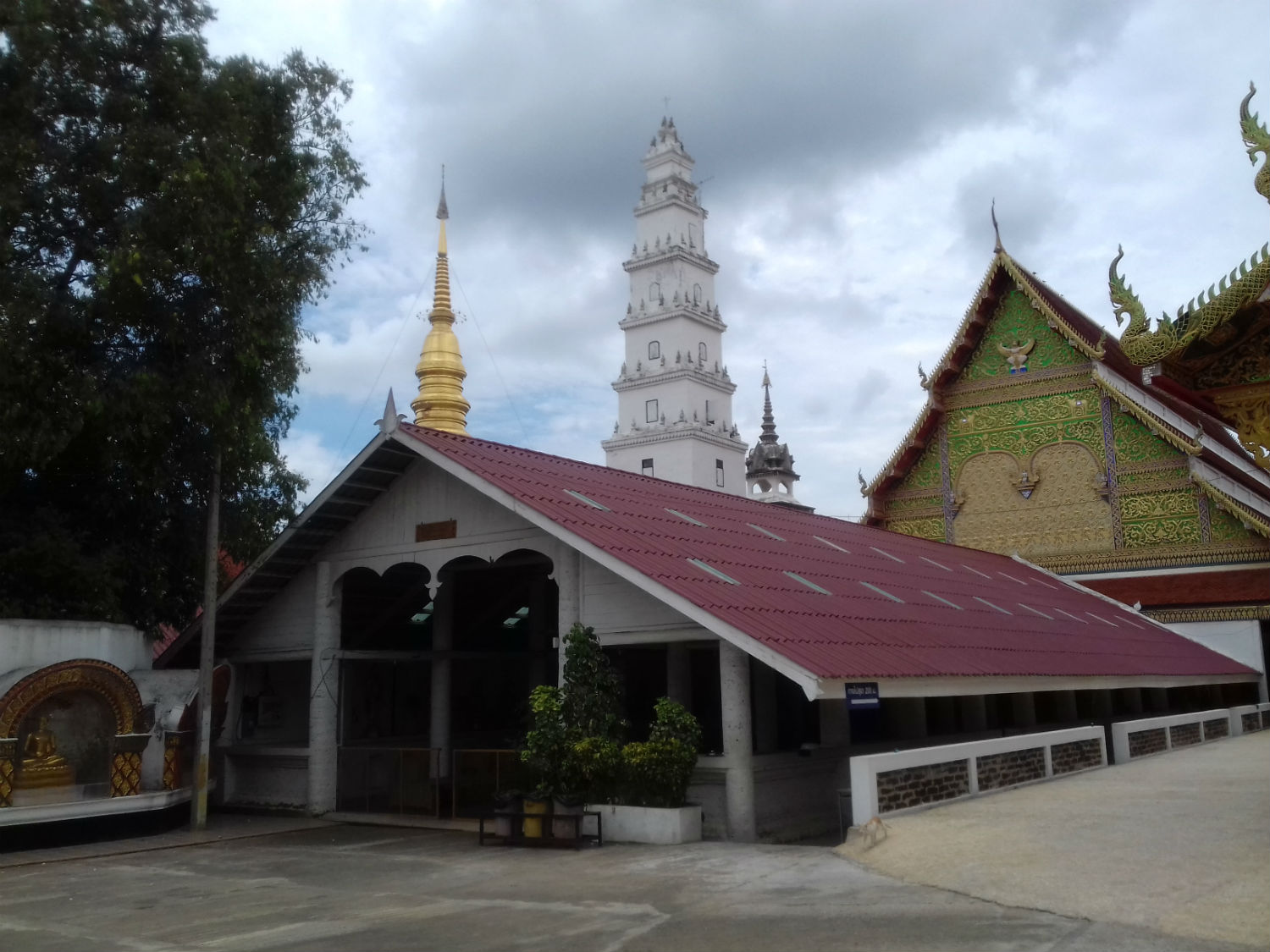
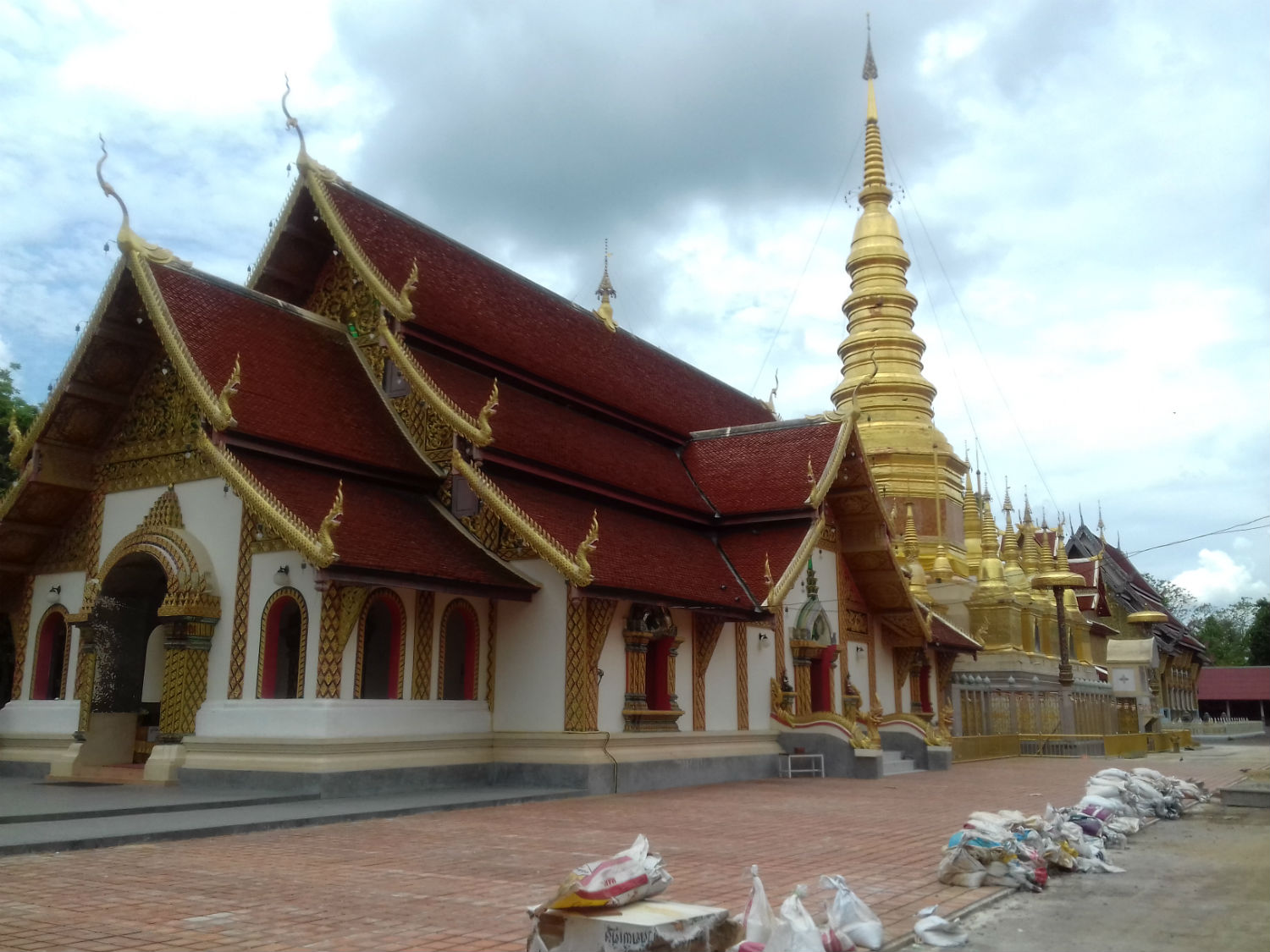
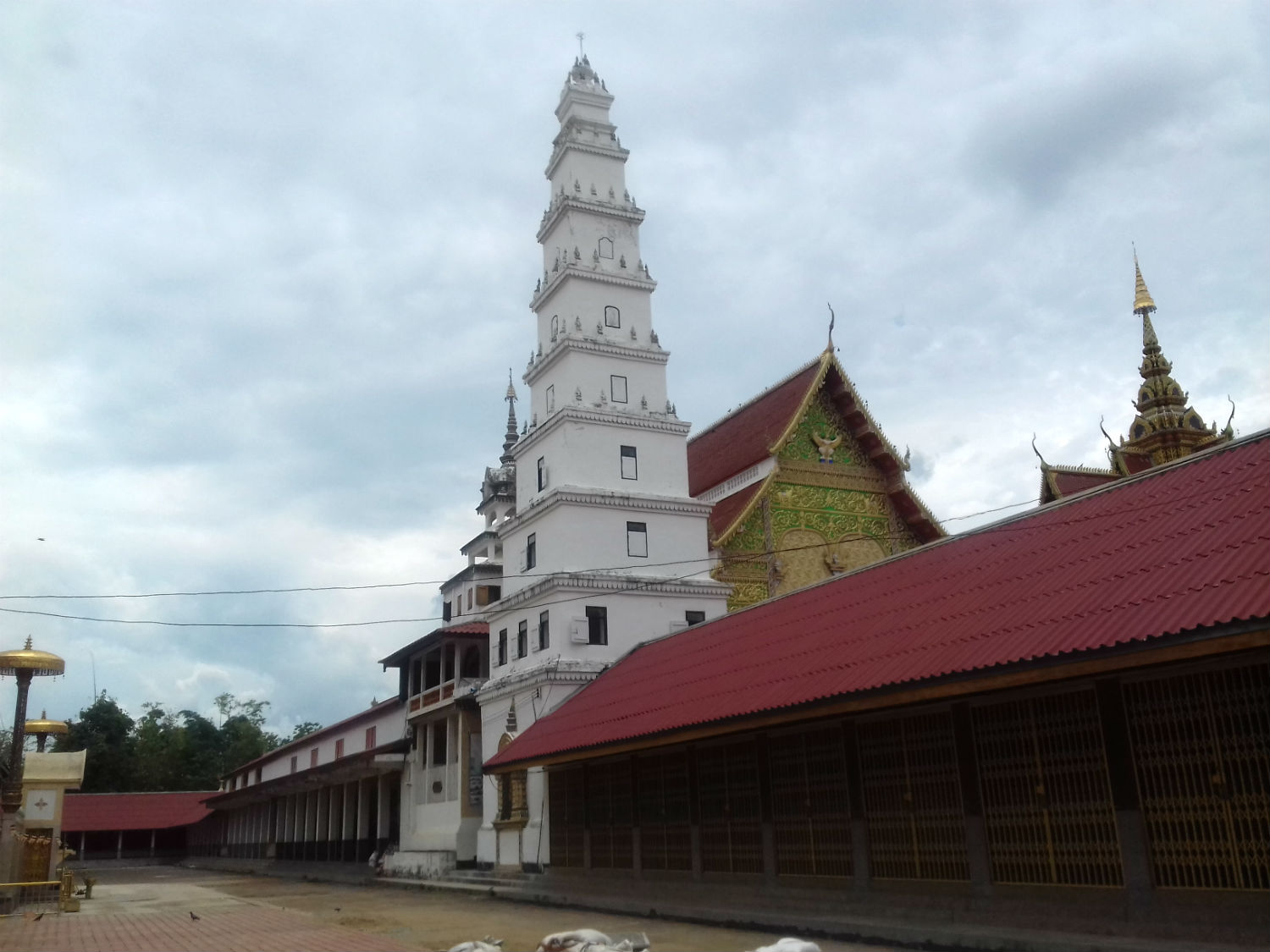
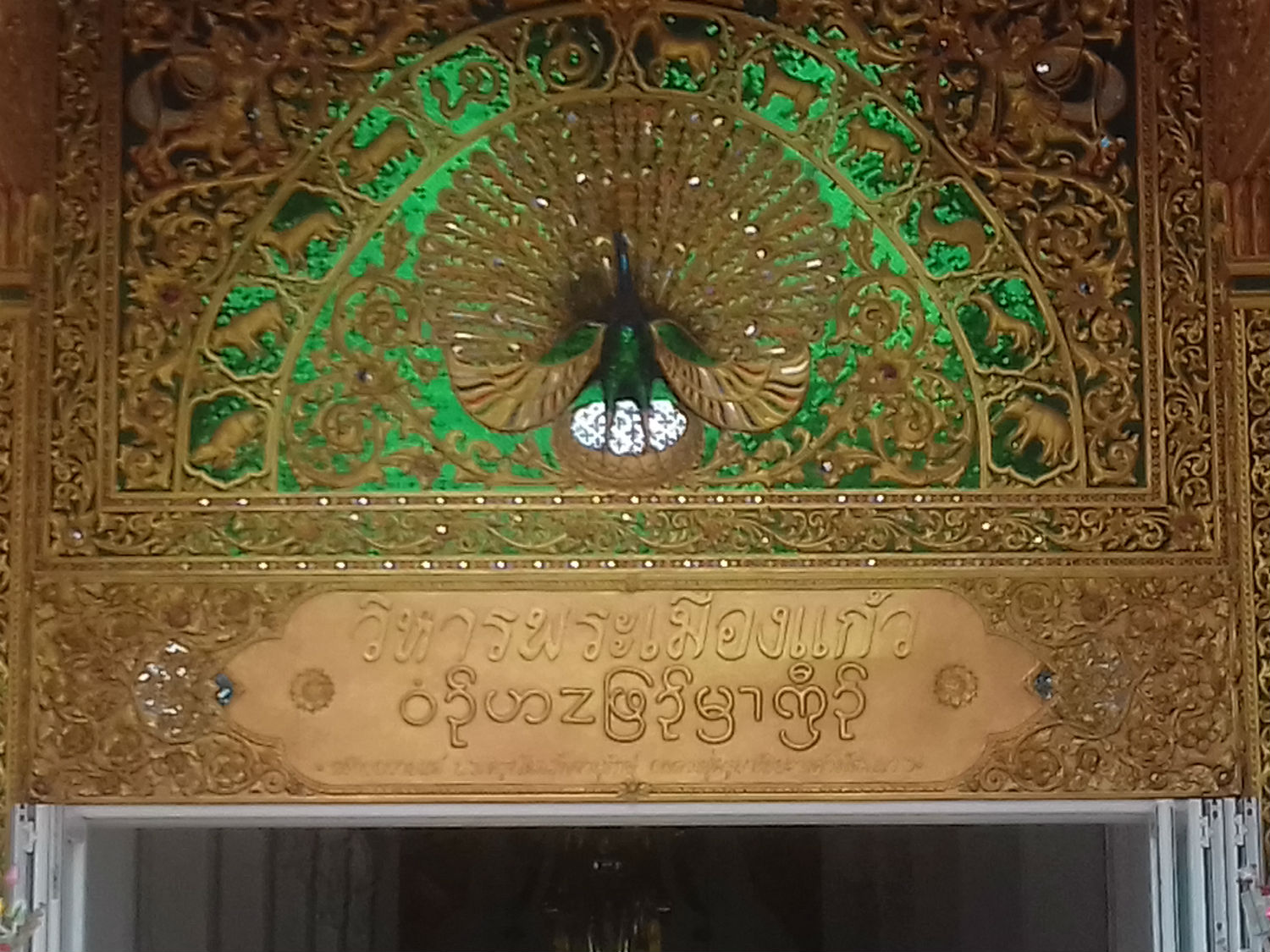
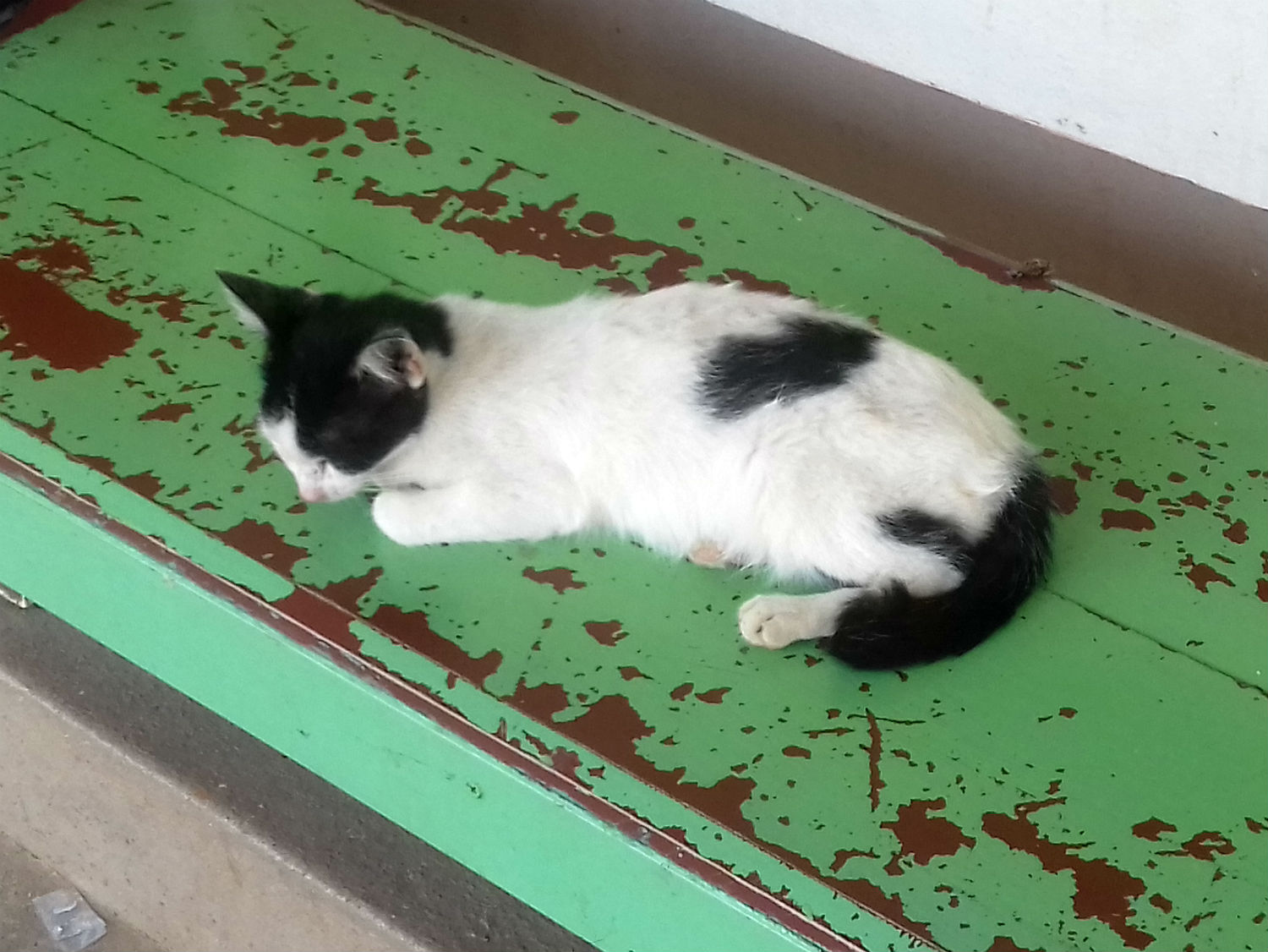
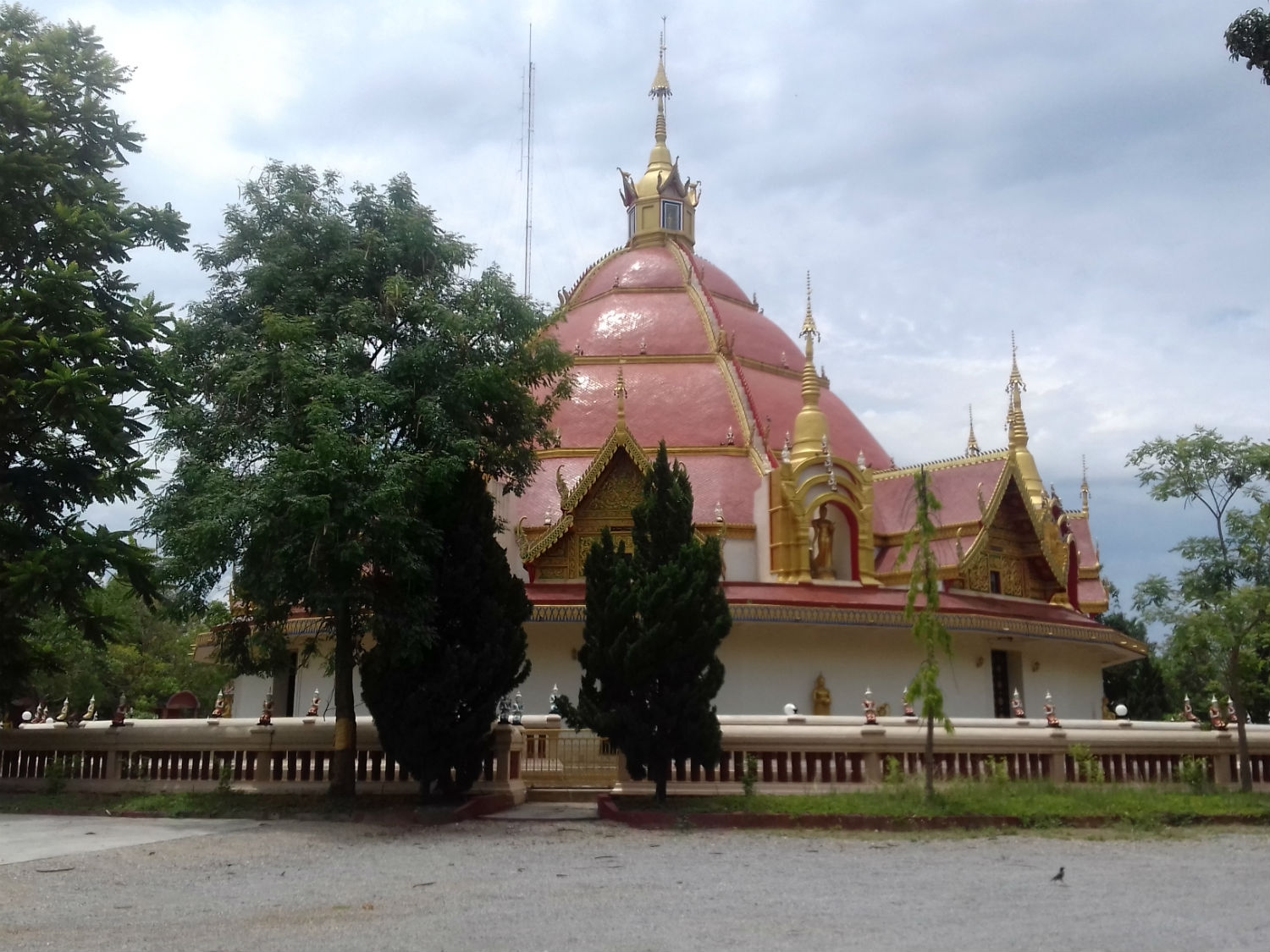
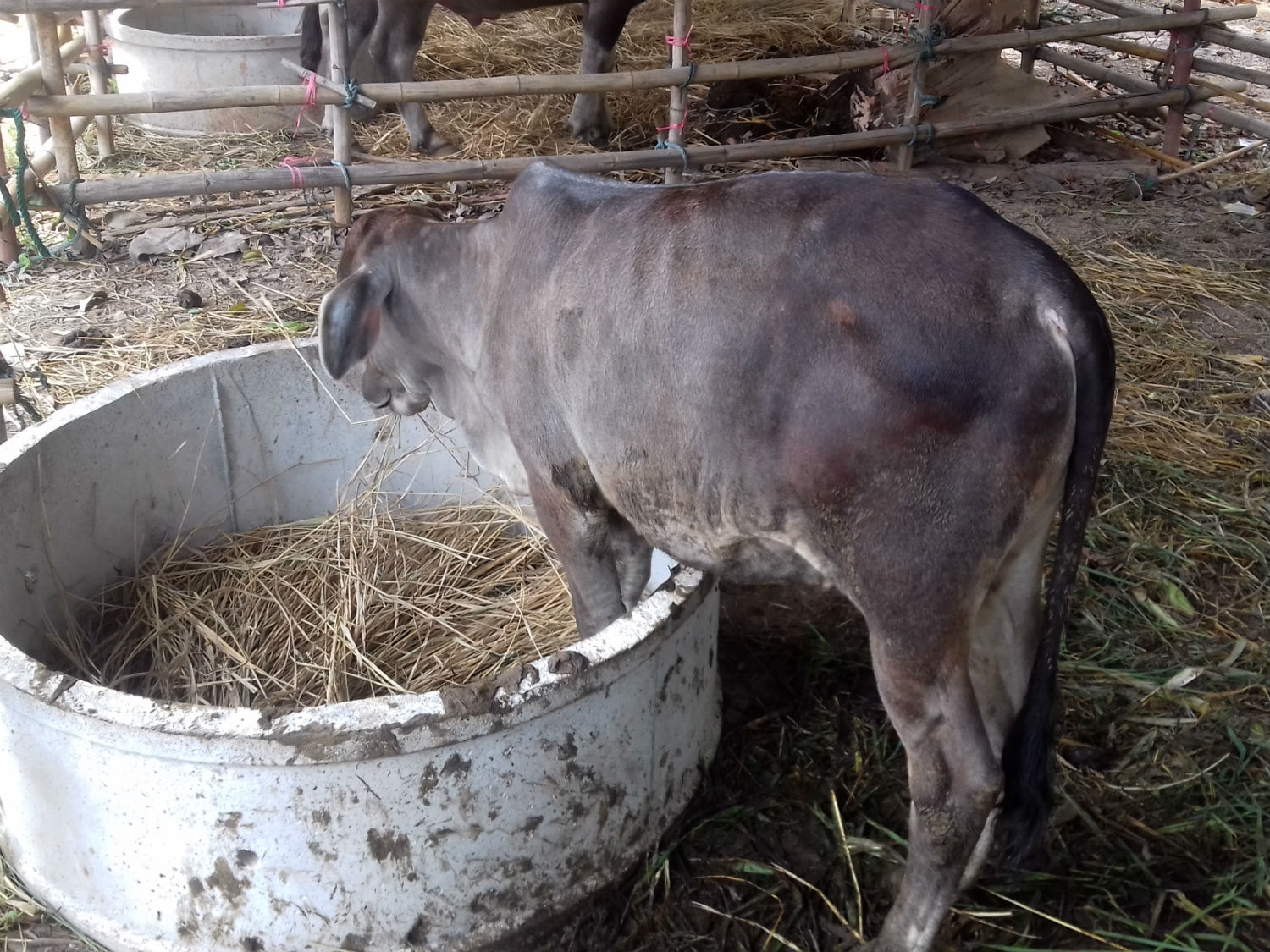
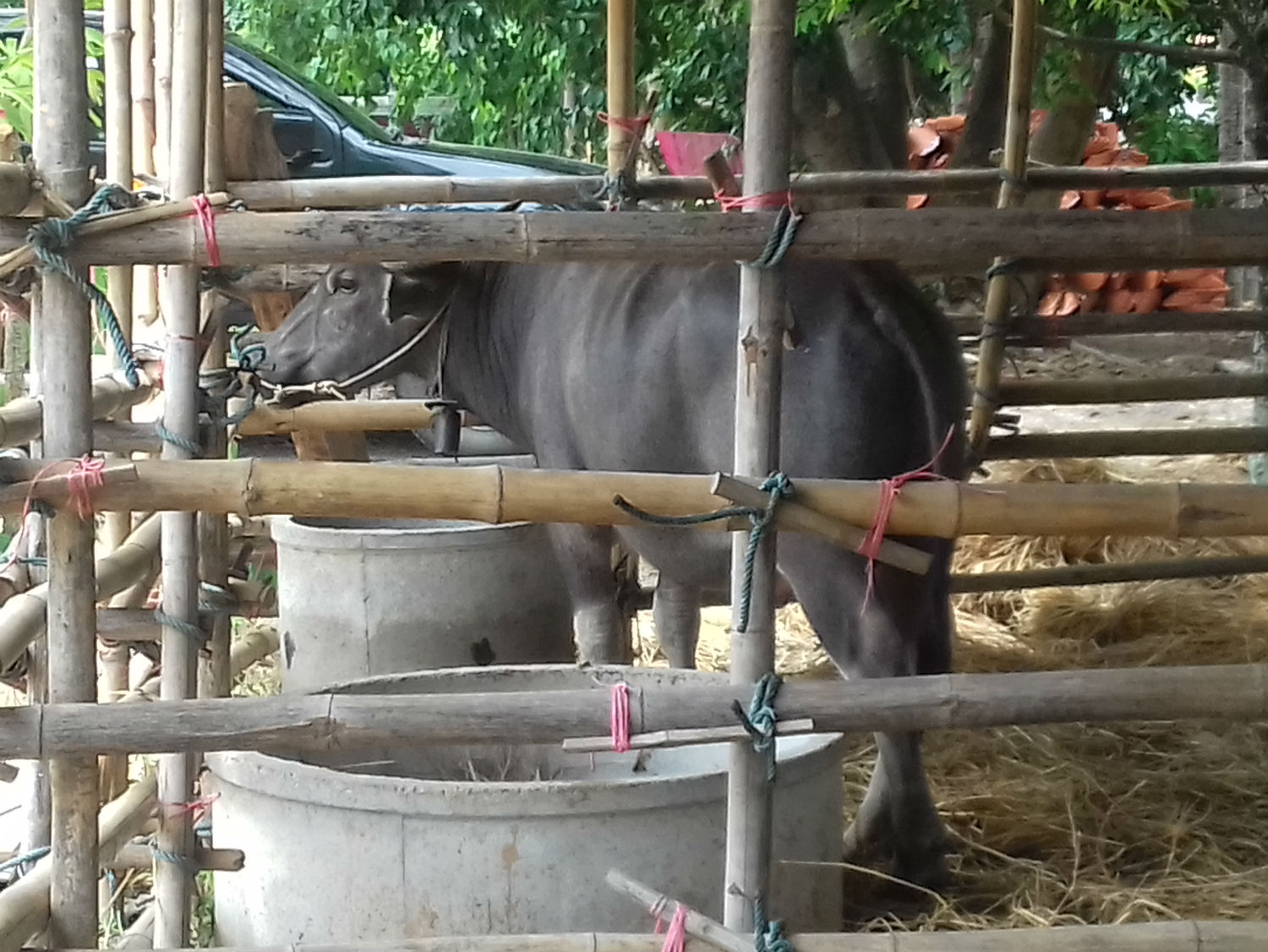 Wat Phra Bat Huai Tom, Li District, Lamphun Province
Wat Phra Bat Huai Tom, Li District, Lamphun Province
Ban Boolan (ancient village)........Still in the village, Ban Boolan is a community of 35 families who live a lifestyle unchanged for centuries. Their houses consist of materials collected from the forest, water is provided from bore holes but there is no electricity or gas. Everything needed for cooking is collected from the forest. In keeping with the rest of the community the villagers here are vegetarian.
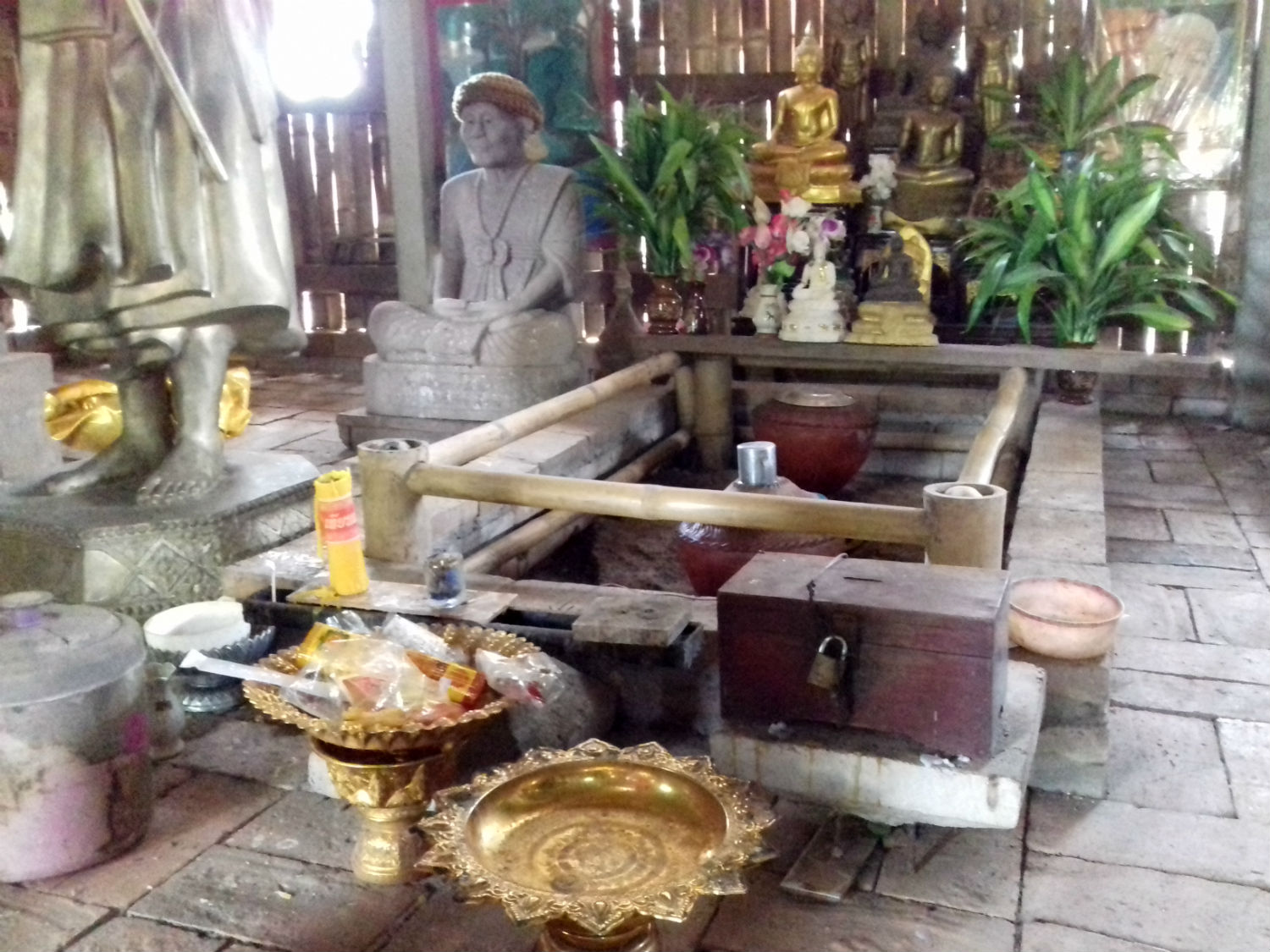
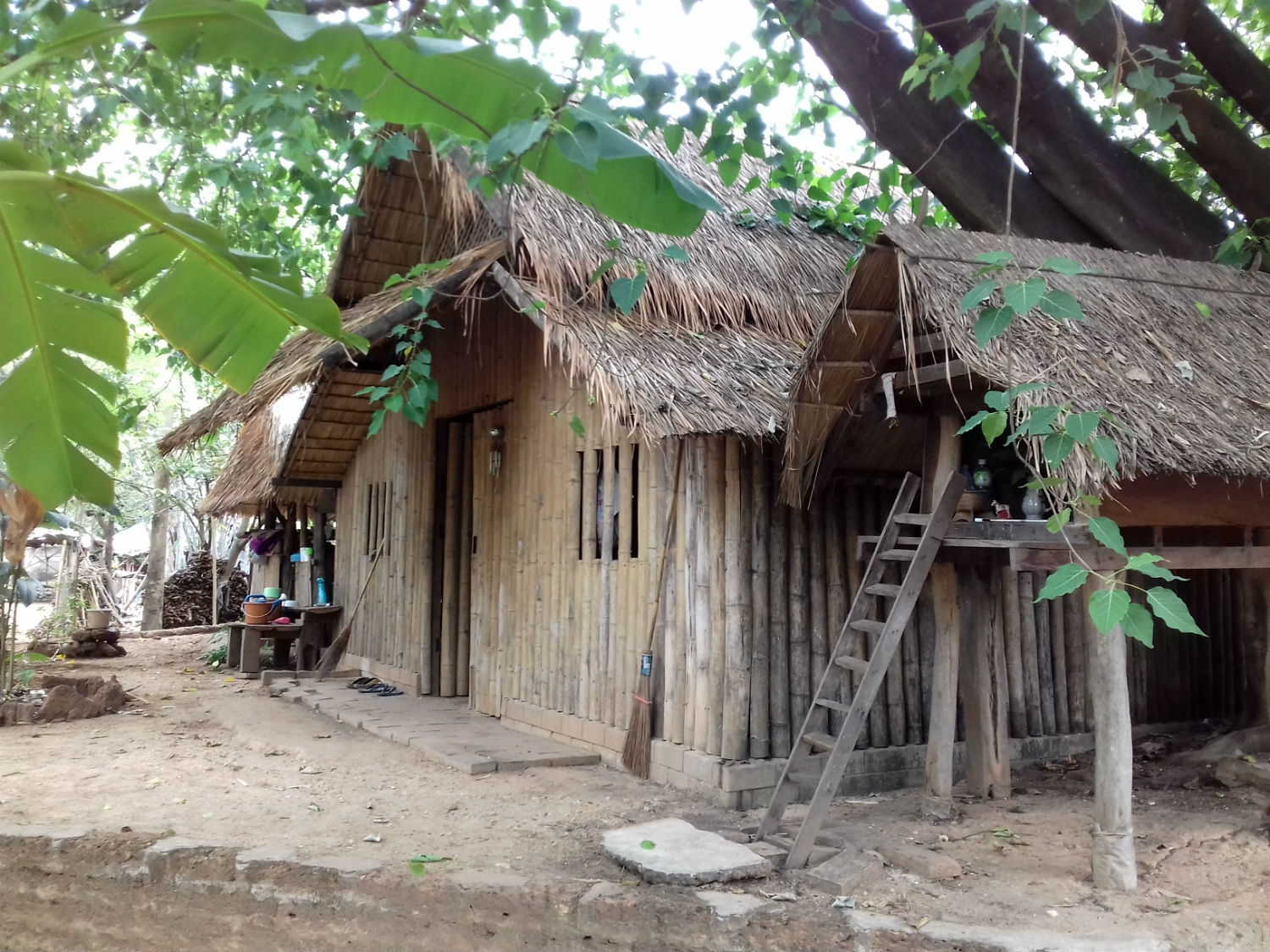
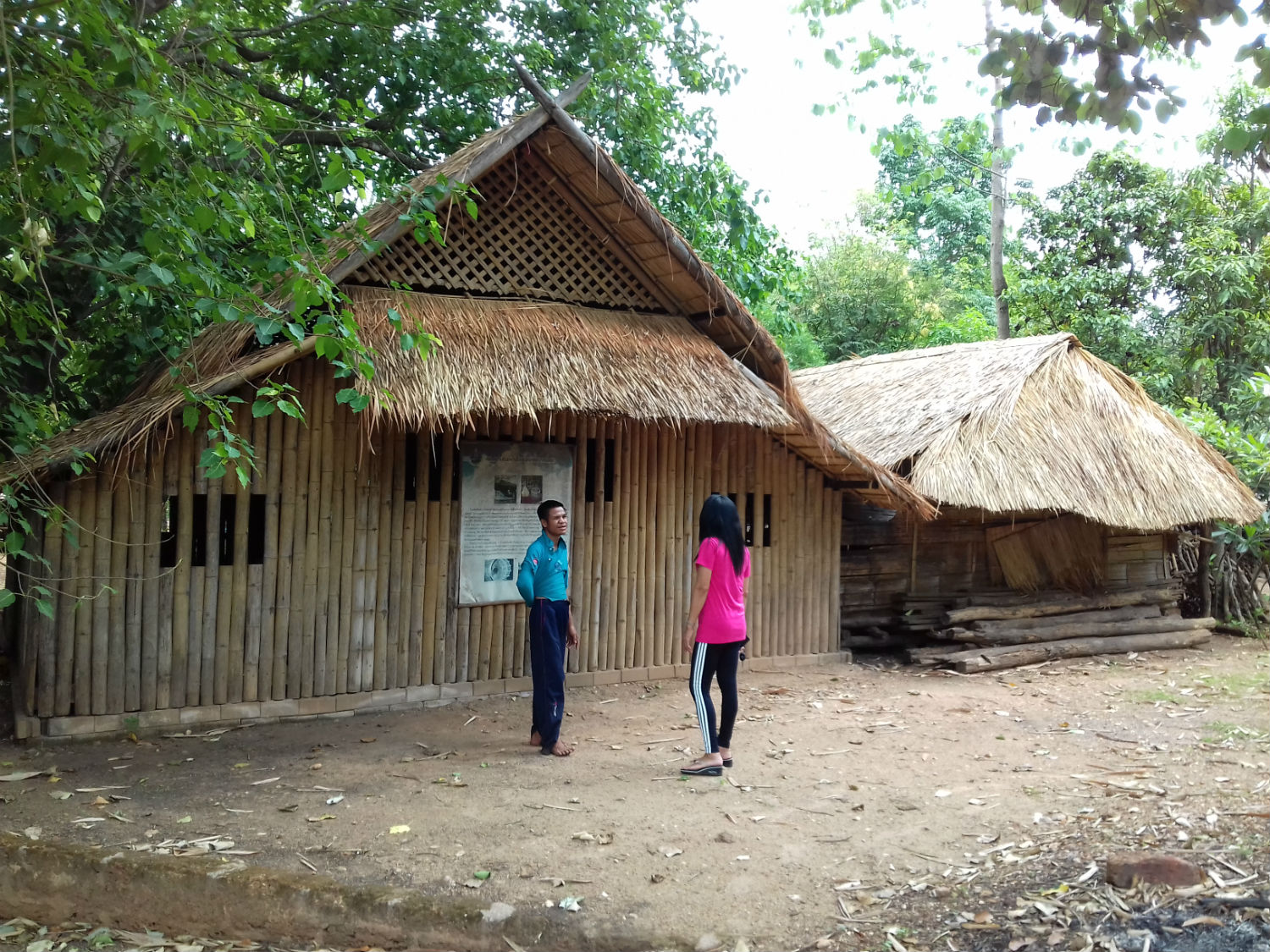
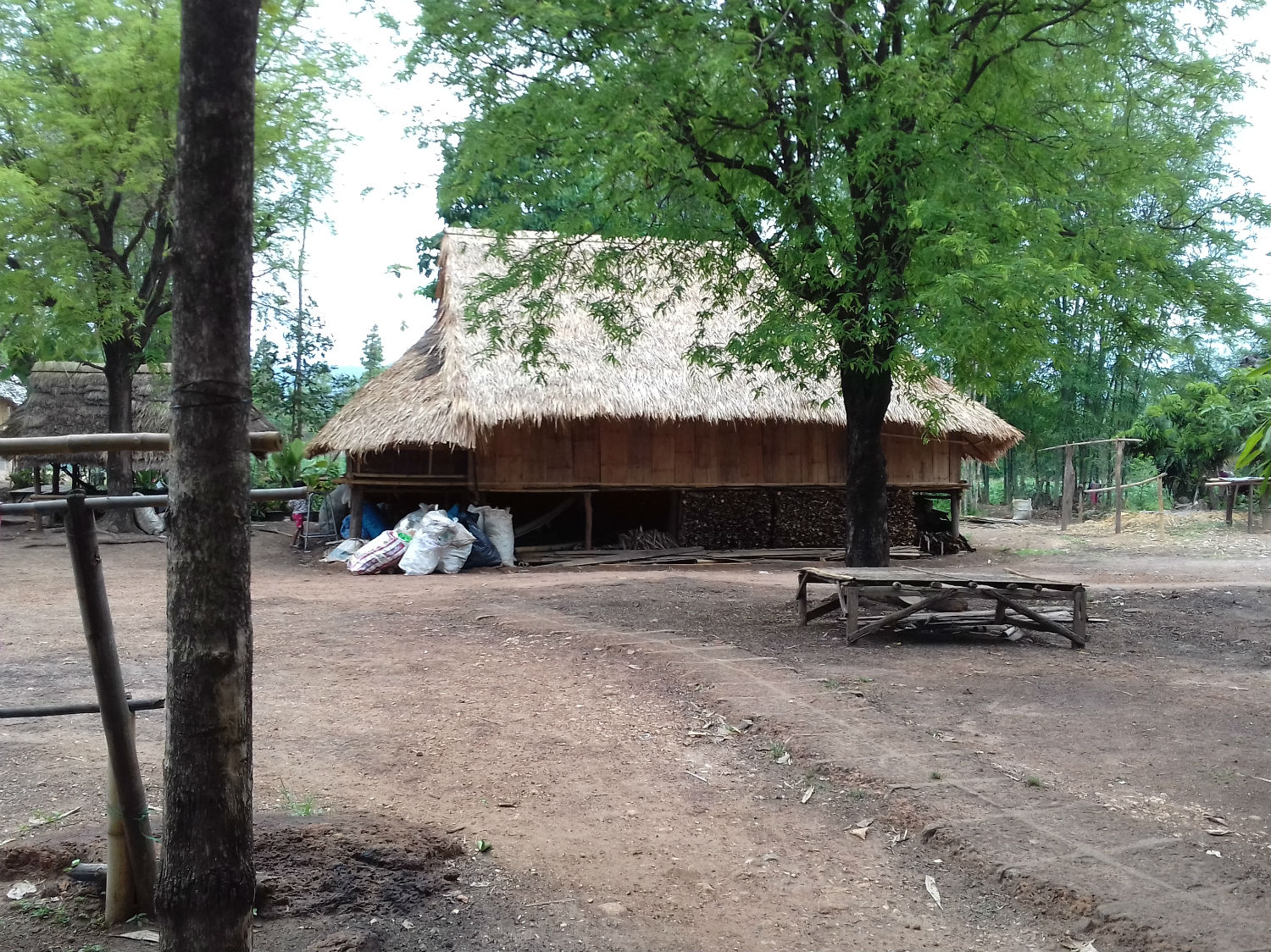
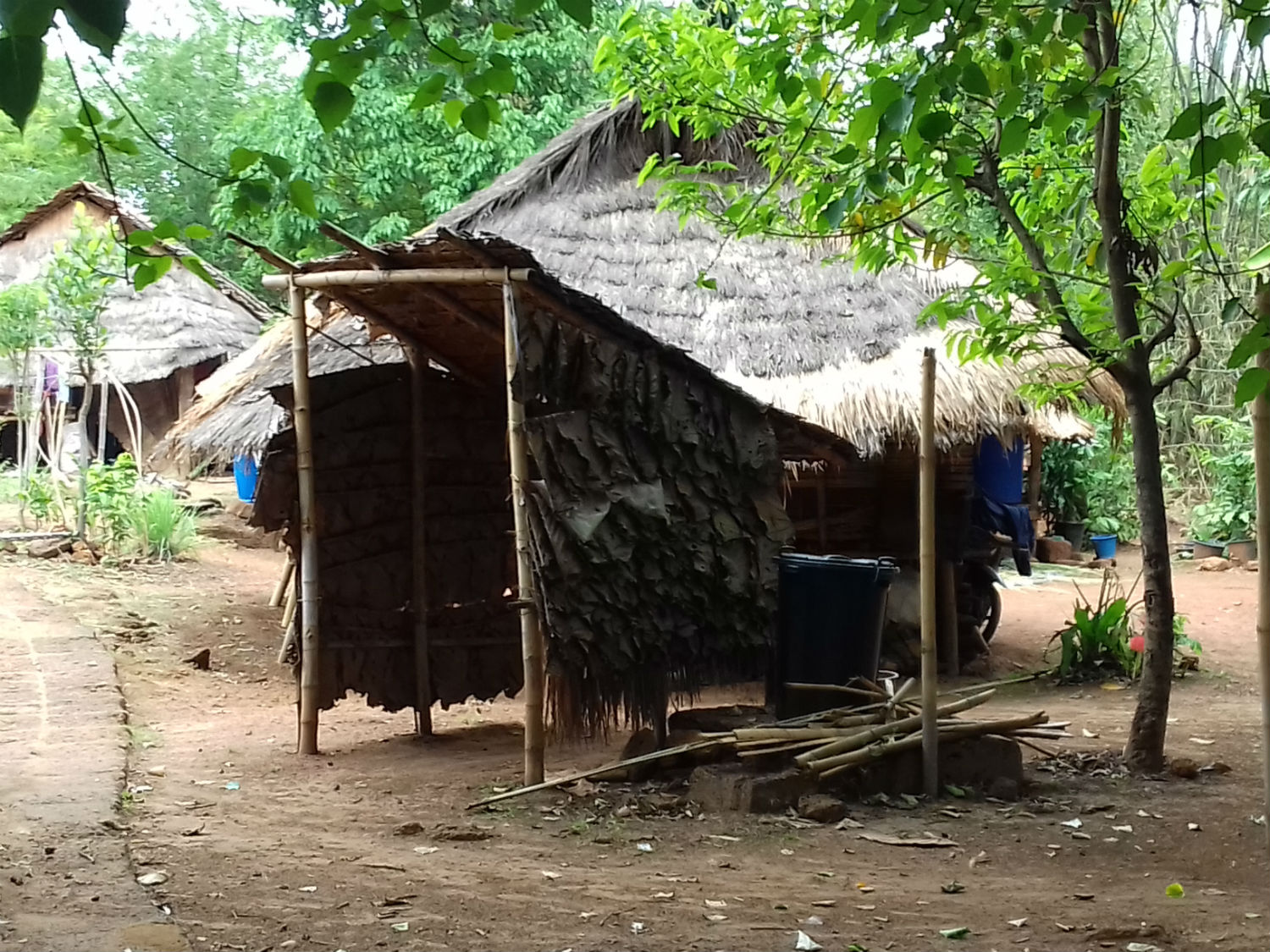
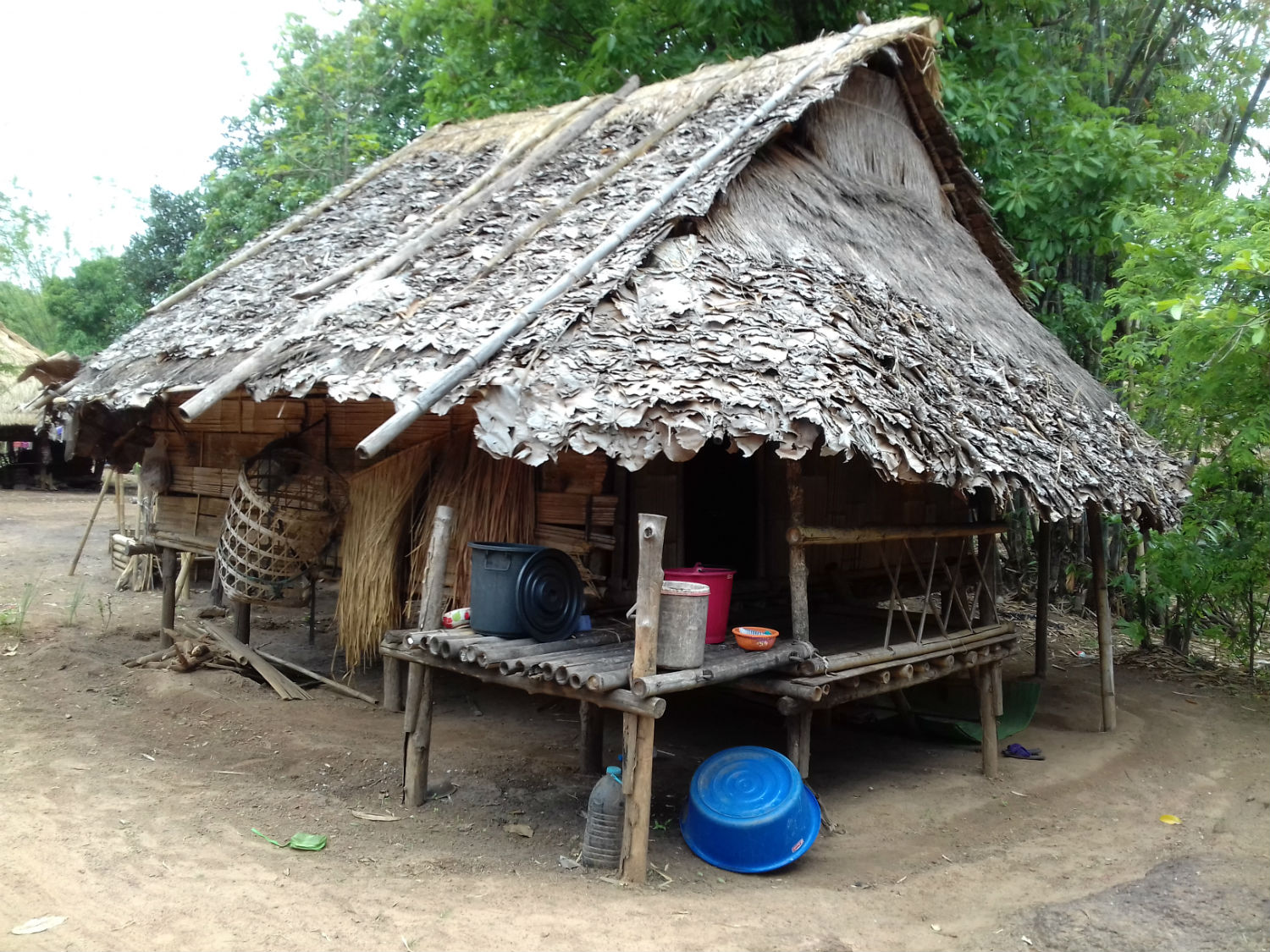
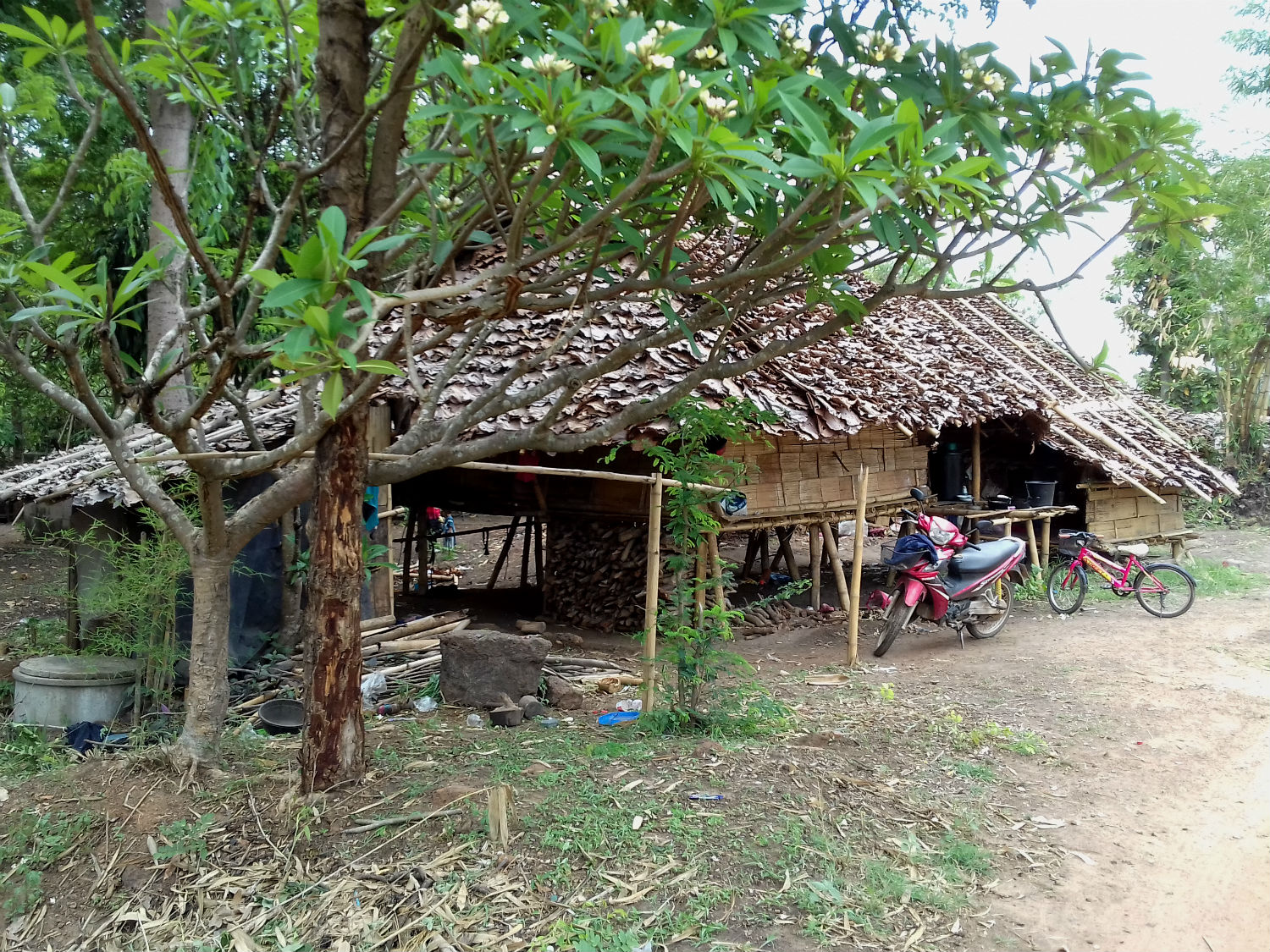
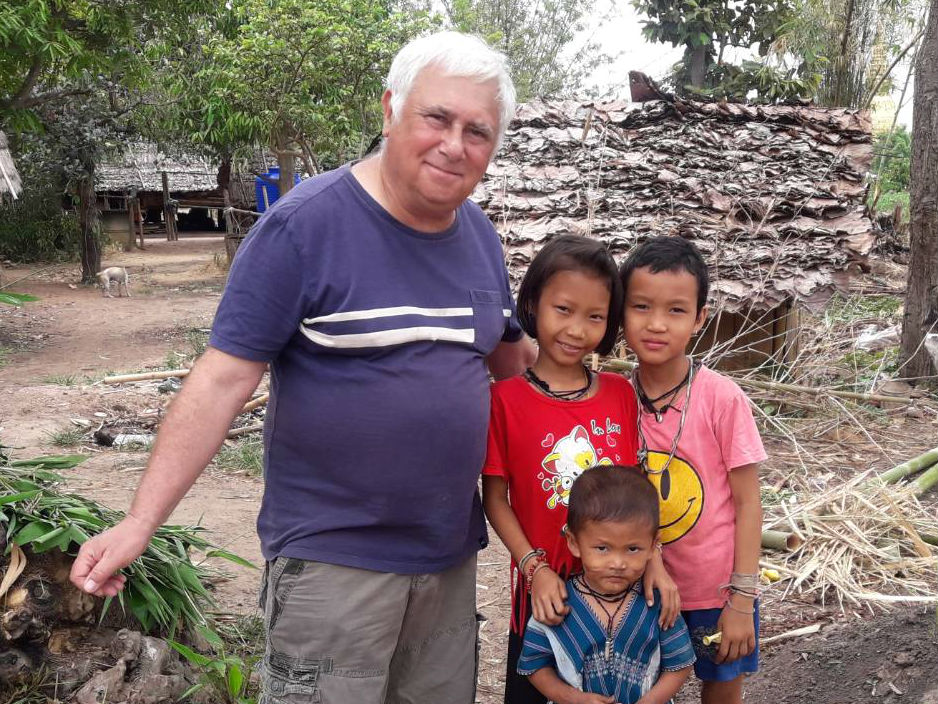
 Ban Boolan (ancient village), Li District, Lamphun Province
Ban Boolan (ancient village), Li District, Lamphun Province
Wondering and Wandering........During my wanderings around Thailand, I rarely come across a community living in such poverty. Given the amount of money needed to build the temples neaby; the spire of Chedi Phra Mahathat Si Wiang Chai can be clearly seen from Ban Boolan, there has to be a reason for this. Katoon suggests that the community may be from Myanmar so have no citizen’s rights in Thailand. It’s hardly a token of benevolence that the state allows them to stay here in these conditions, albeit free. I understand that they are not allowed to build permanent structures so don’t have the means to improve their lives. The consolation is that they would hardly be better off in the area they came from. For the province it has the potential to be a tourist attraction but there’s no evidence of that yet!
Lamphun Departure........Now well after midday it’s finally time to leave Li district and Lamphun province as Katoon continues along the 106 heading east. As we head into the mountains once more I begin to appreciate why the northern kingdoms were separated from their southern neighbours for so long. The 106 although well maintained twists and turns for a good half hour finally entering the district of Thoen in Lampang province. Joining Highway 1 in Thoen, we stock up will convenience food before I take over the driving and head south. By mid afternoon we’re across the provincial border into Tak province where near Ban Tak, I turn off and head back into the mountains once more for a grand finale.
Bhumipol Dam........In the valley of the Ping River lies the Bhumipol Dam. Located in Sam Ngao district, Tak province, this dam constructed of concrete in a huge arc shape is the largest in Southeast Asia. The late king His Majesty King Bhumipol gave his name to the dam project during a ceremony on May 17, 1964. In a quote from his speech on that day he says, ‘I agree with the Government that this first multipurpose project of Thailand would be the start of the country’s further economic development. Water is an essential part of man’s livelihood. Water and electricity help promote prosperity of the citizens. Therefore it is necessary to increase the supply of water and electricity to keep up with demands from its citizens.
Lamphun Departure........Now well after midday it’s finally time to leave Li district and Lamphun province as Katoon continues along the 106 heading east. As we head into the mountains once more I begin to appreciate why the northern kingdoms were separated from their southern neighbours for so long. The 106 although well maintained twists and turns for a good half hour finally entering the district of Thoen in Lampang province. Joining Highway 1 in Thoen, we stock up will convenience food before I take over the driving and head south. By mid afternoon we’re across the provincial border into Tak province where near Ban Tak, I turn off and head back into the mountains once more for a grand finale.
Bhumipol Dam........In the valley of the Ping River lies the Bhumipol Dam. Located in Sam Ngao district, Tak province, this dam constructed of concrete in a huge arc shape is the largest in Southeast Asia. The late king His Majesty King Bhumipol gave his name to the dam project during a ceremony on May 17, 1964. In a quote from his speech on that day he says, ‘I agree with the Government that this first multipurpose project of Thailand would be the start of the country’s further economic development. Water is an essential part of man’s livelihood. Water and electricity help promote prosperity of the citizens. Therefore it is necessary to increase the supply of water and electricity to keep up with demands from its citizens.
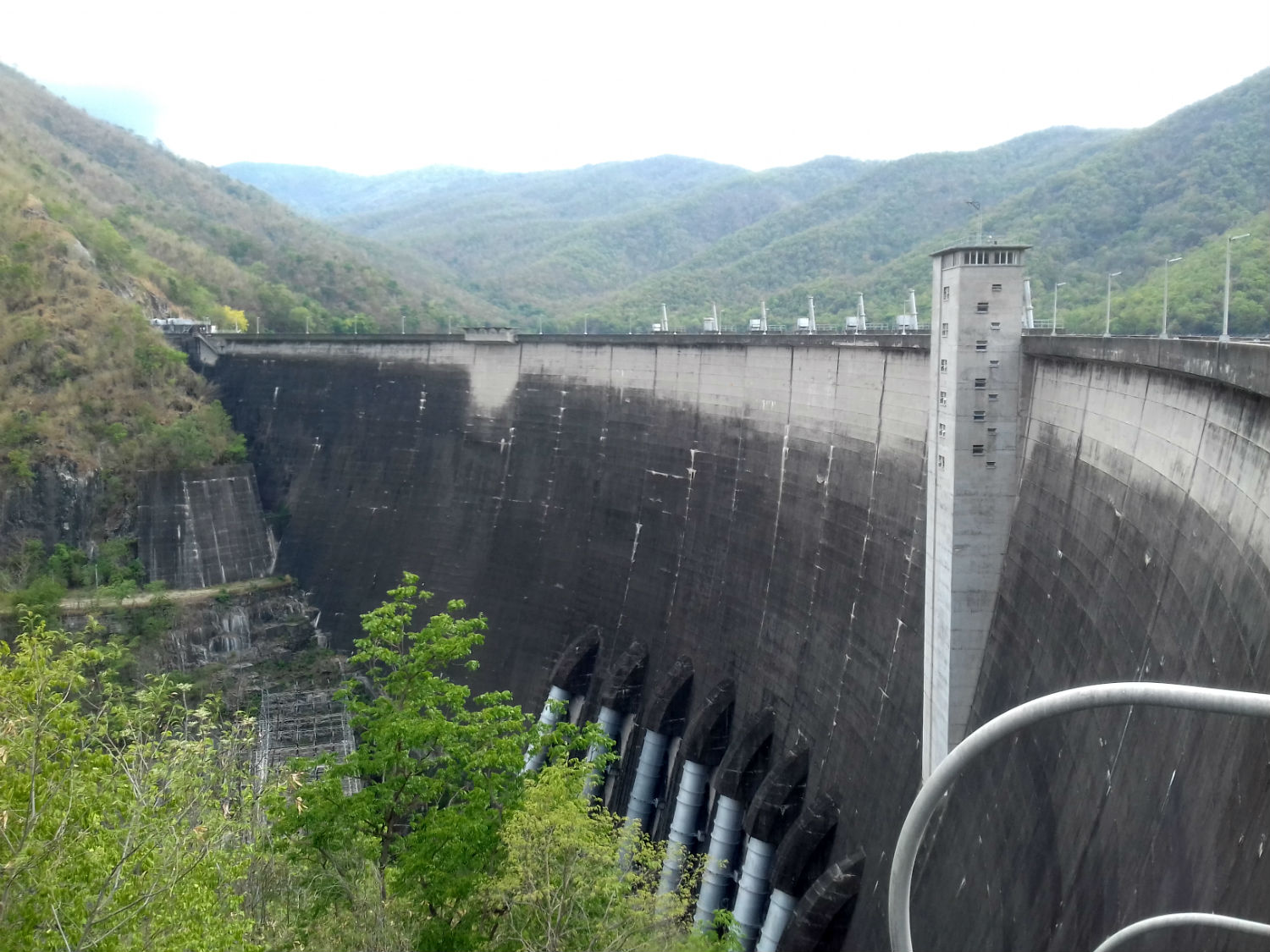
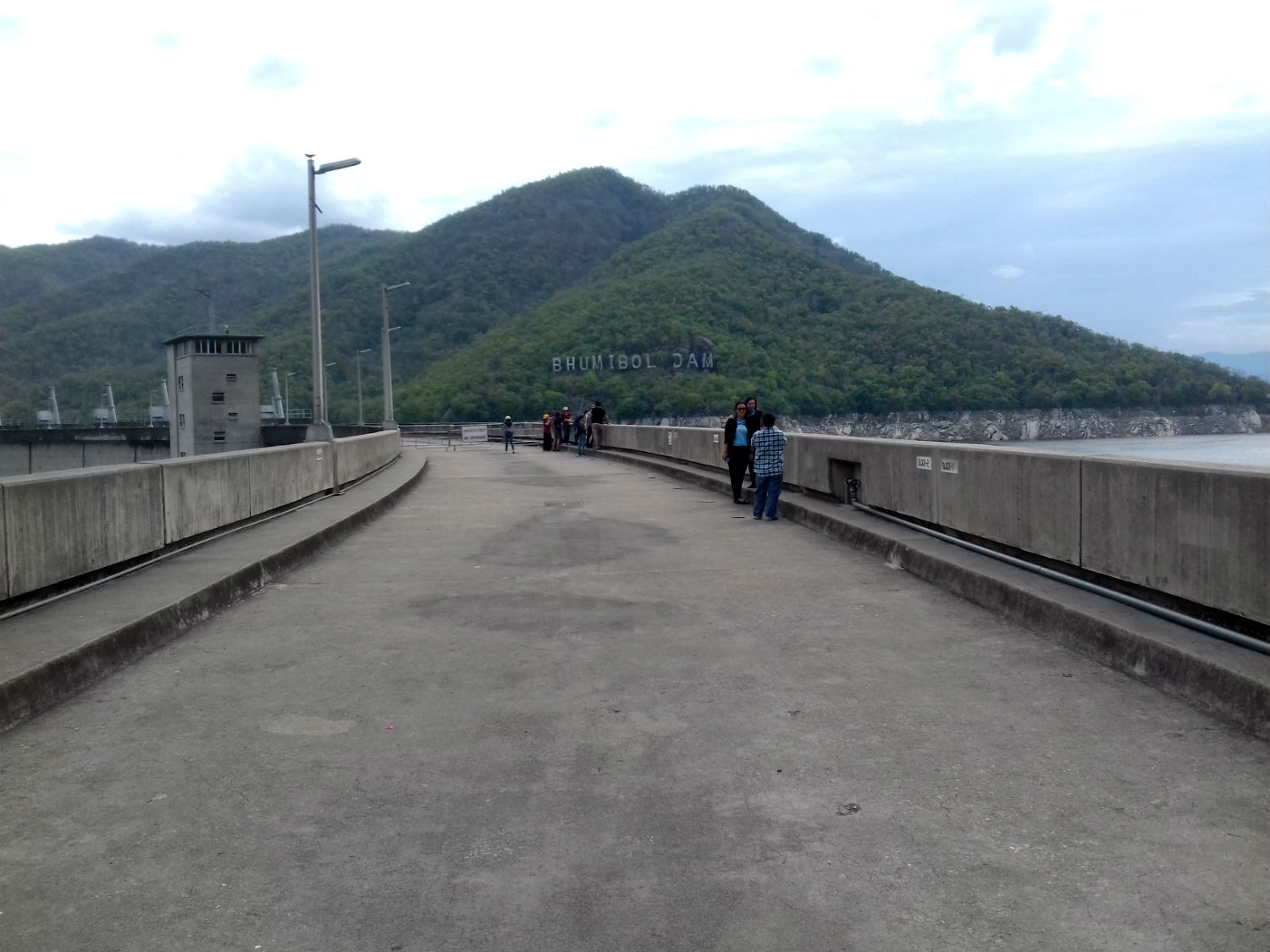
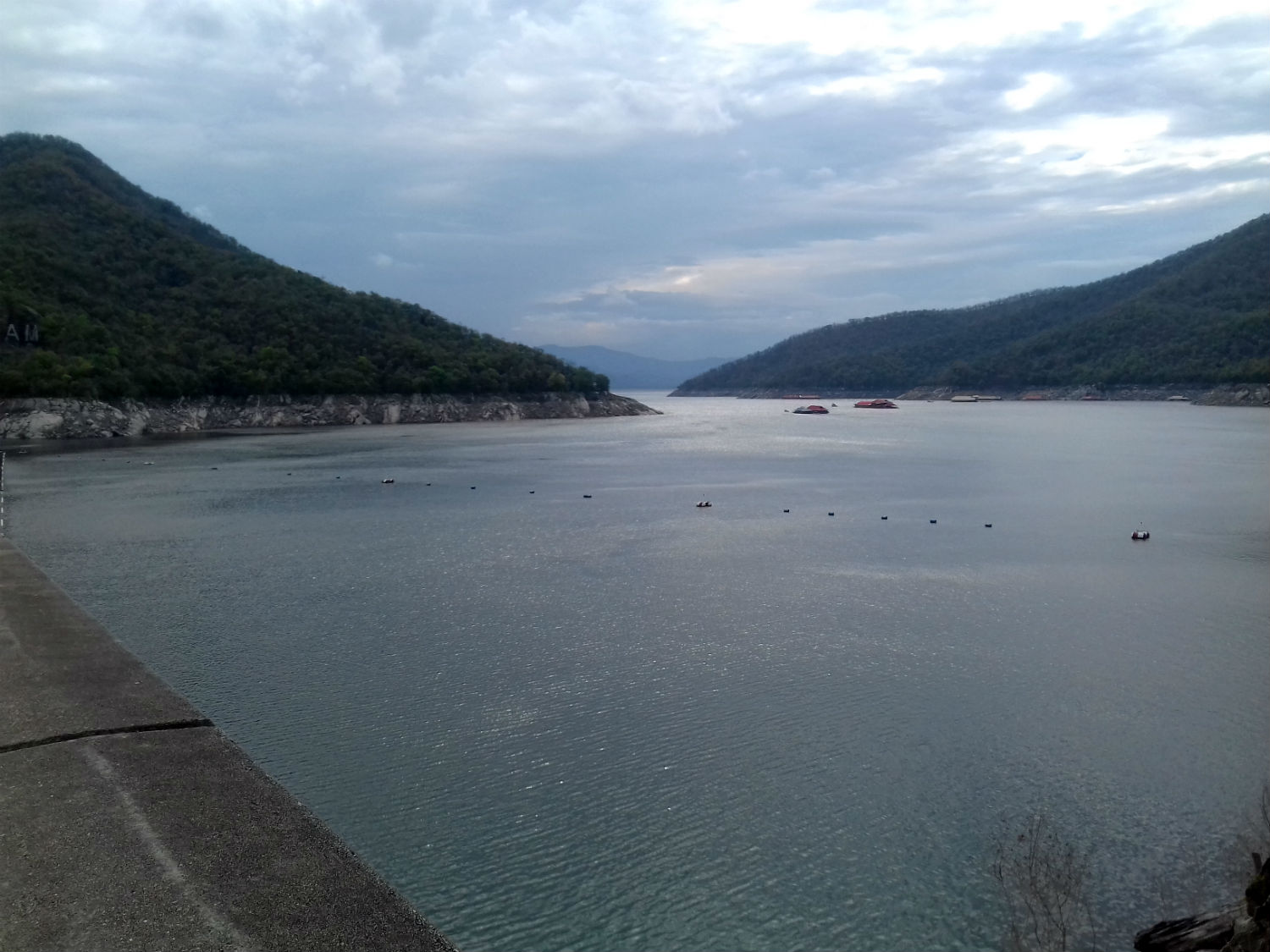
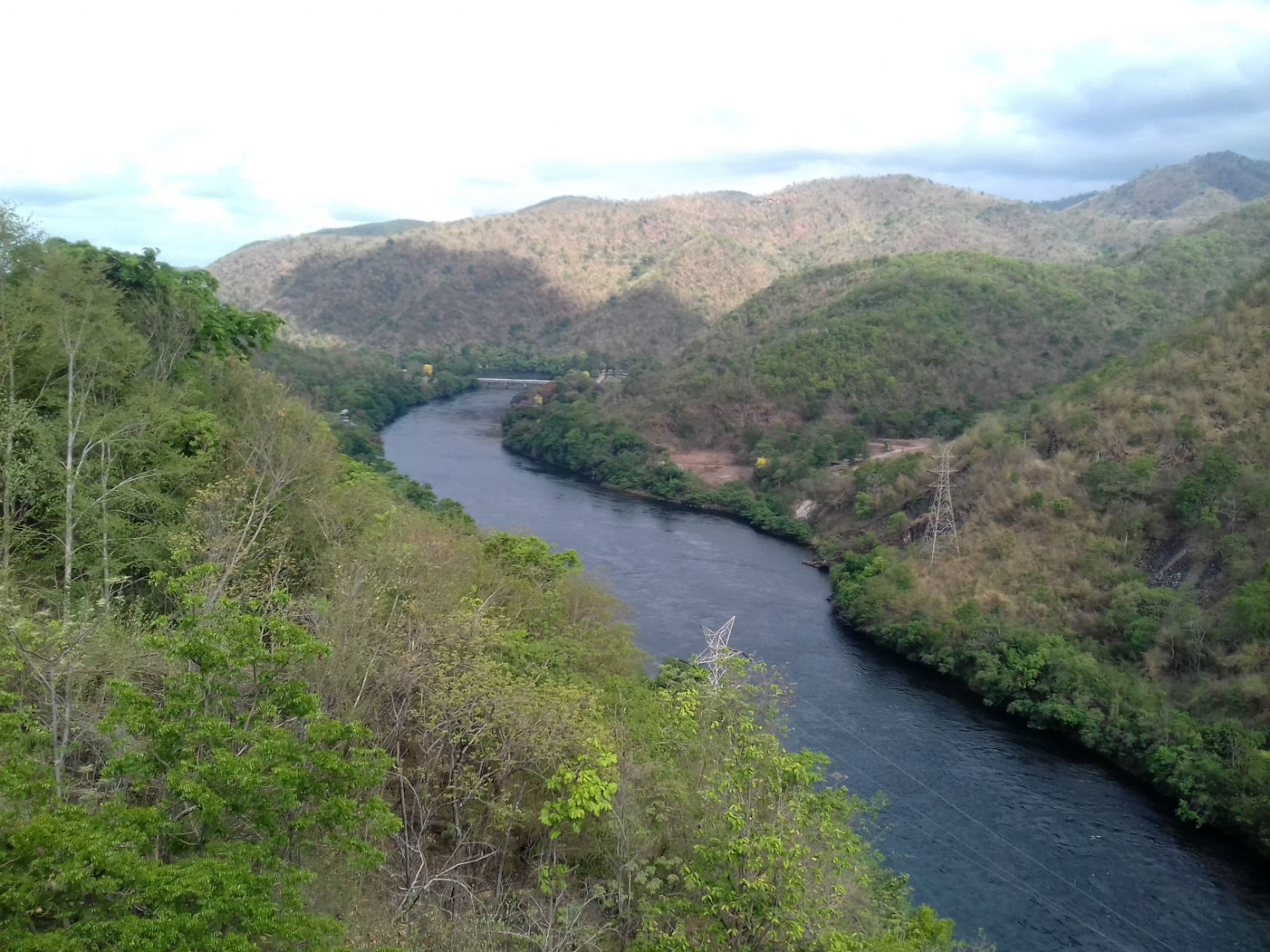
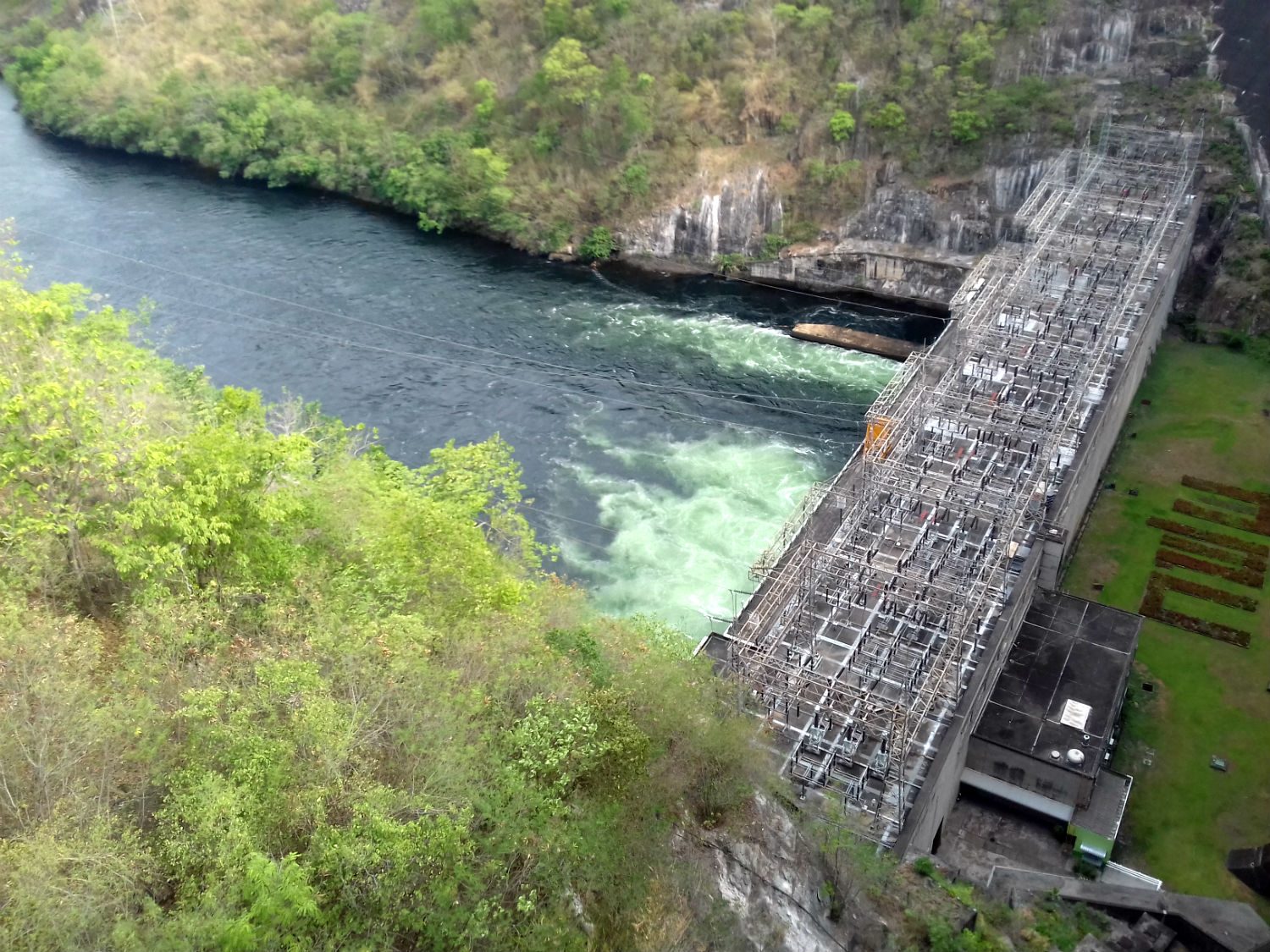
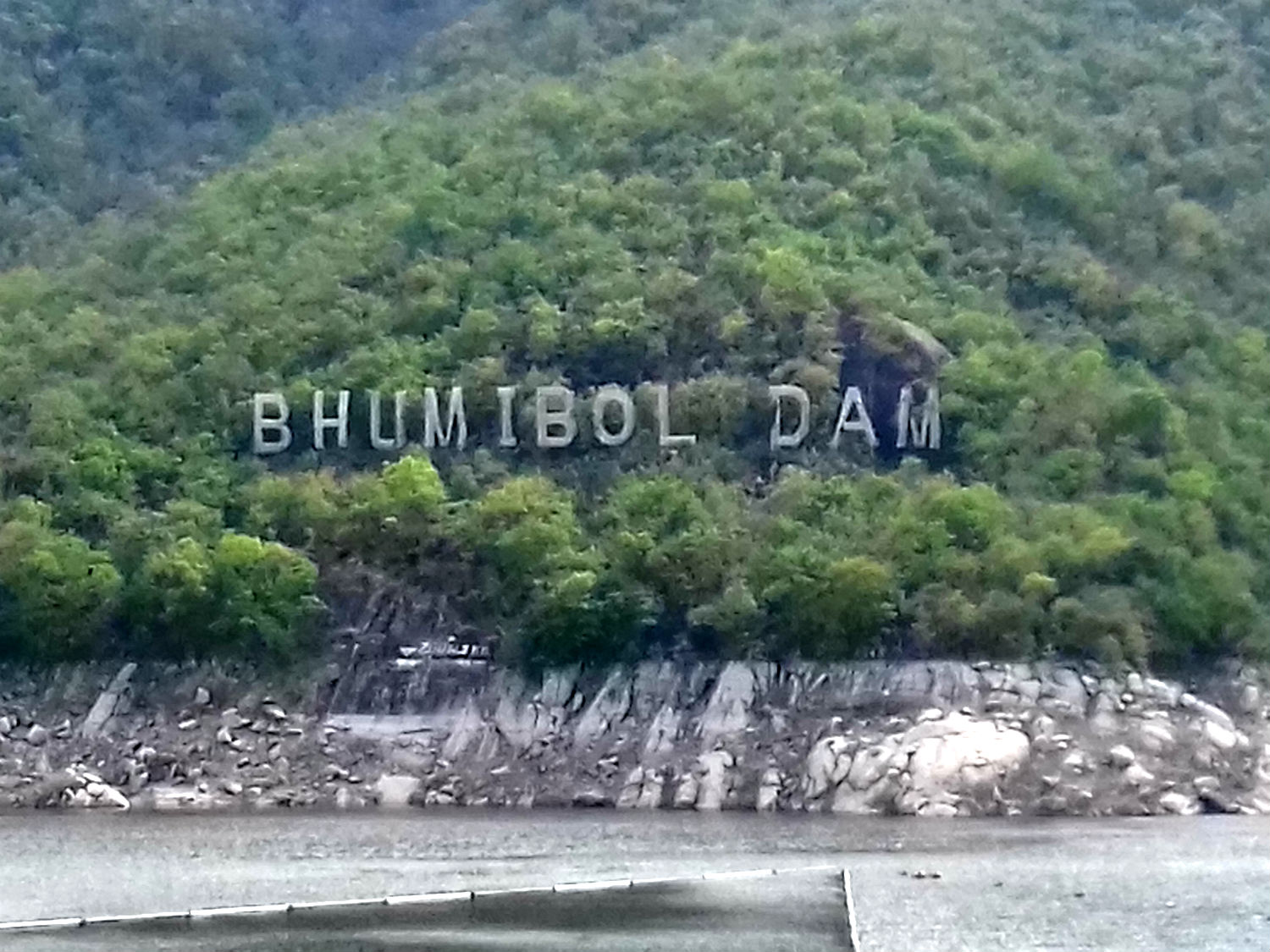
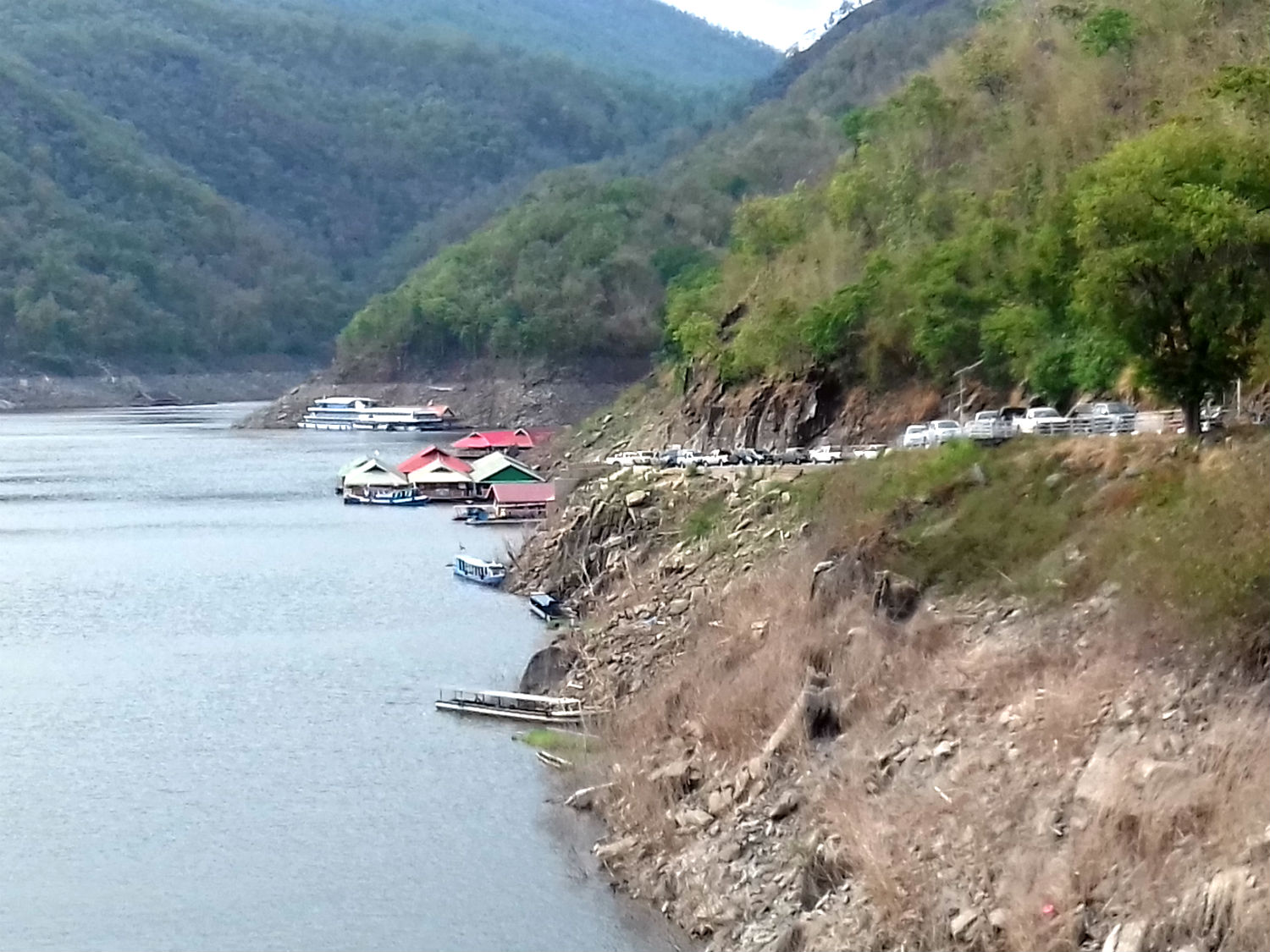
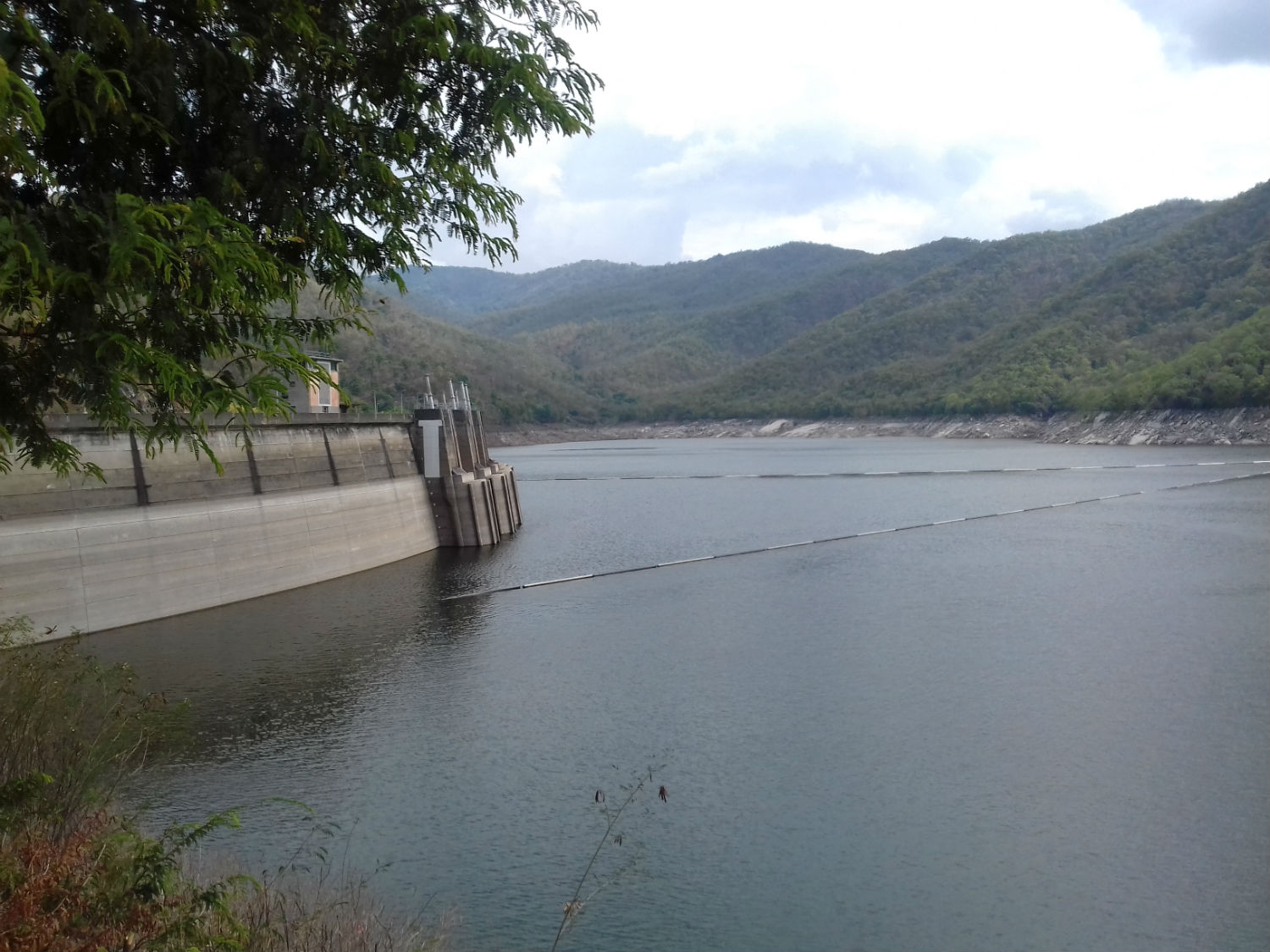
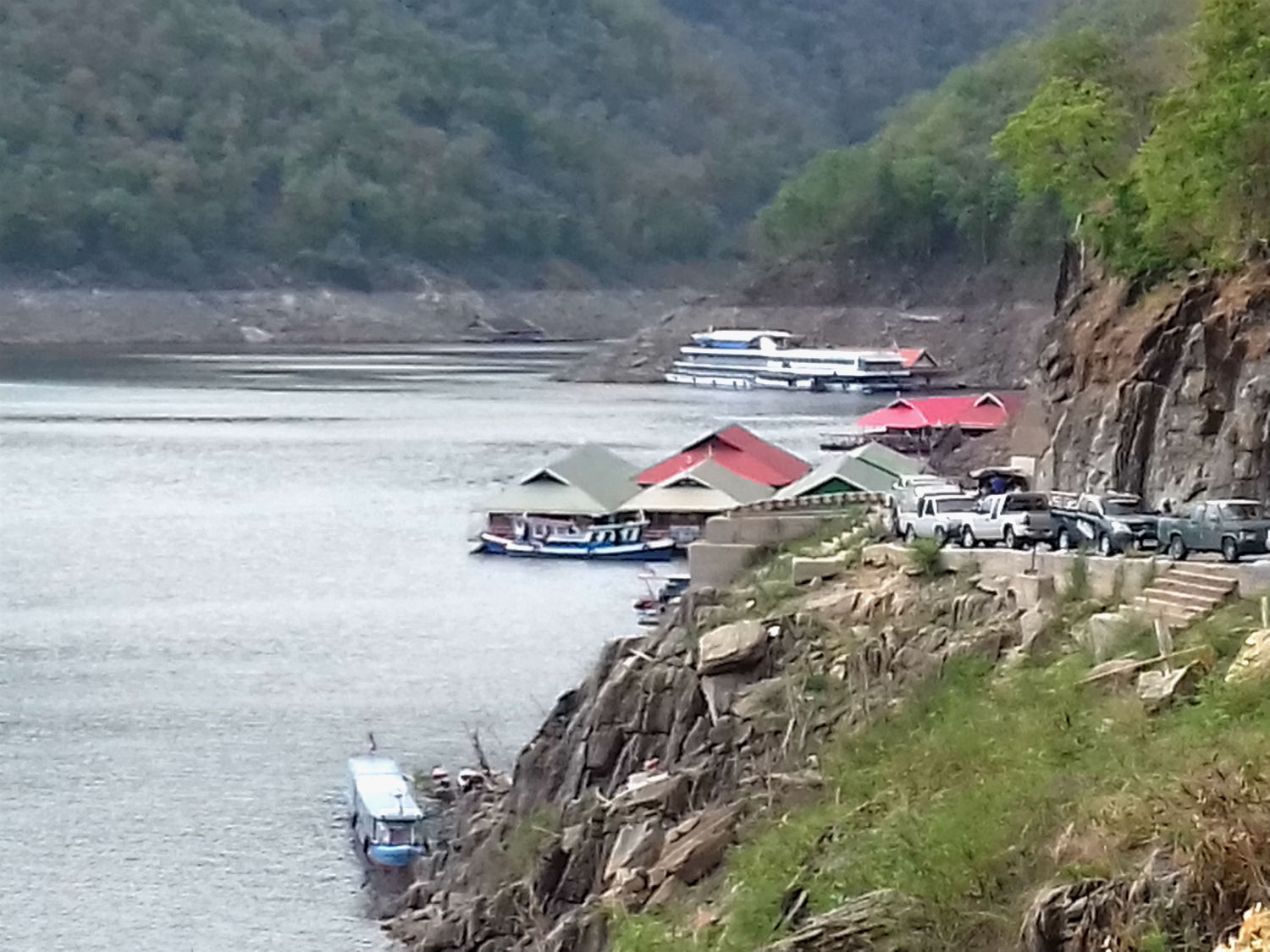
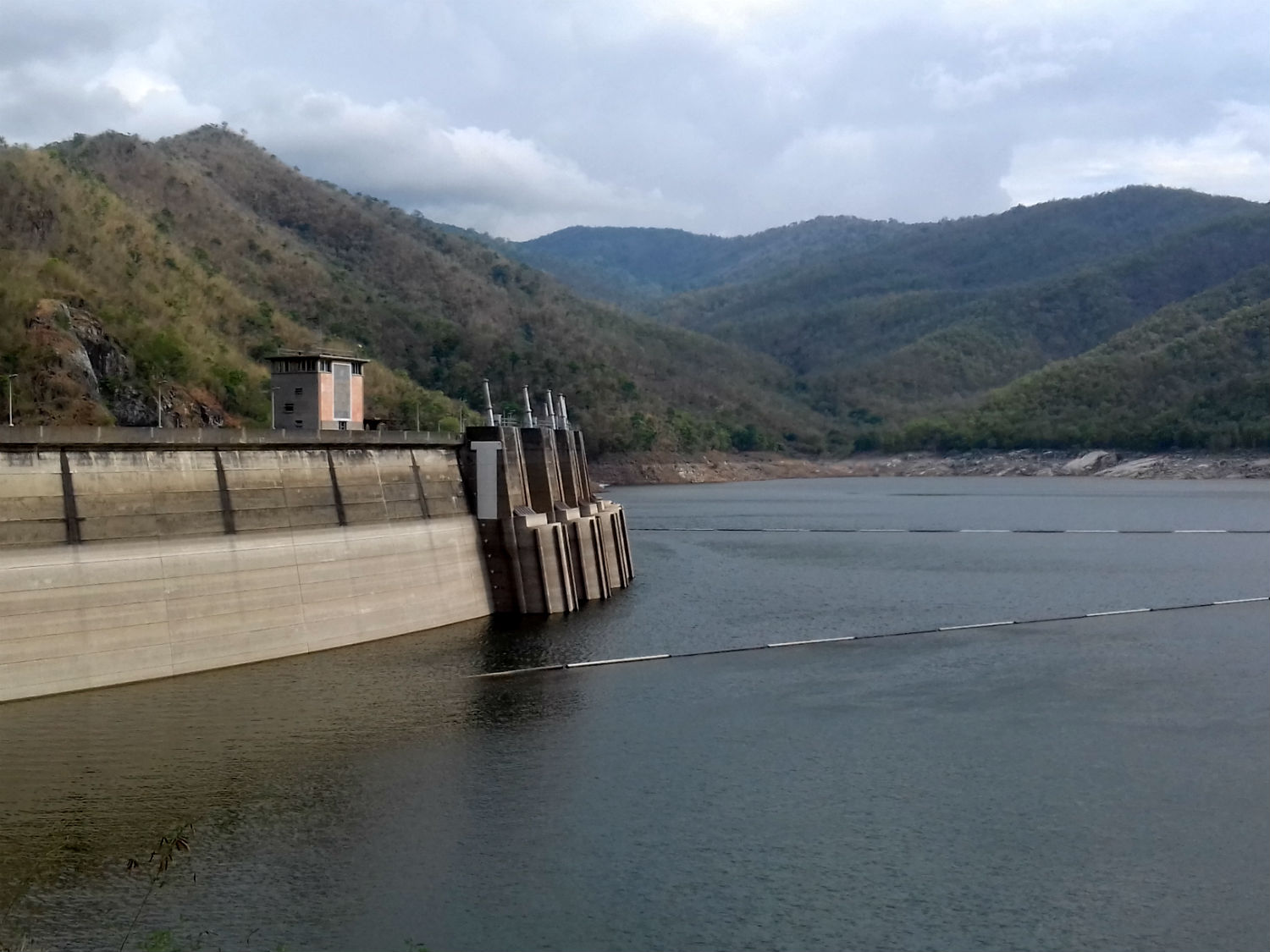
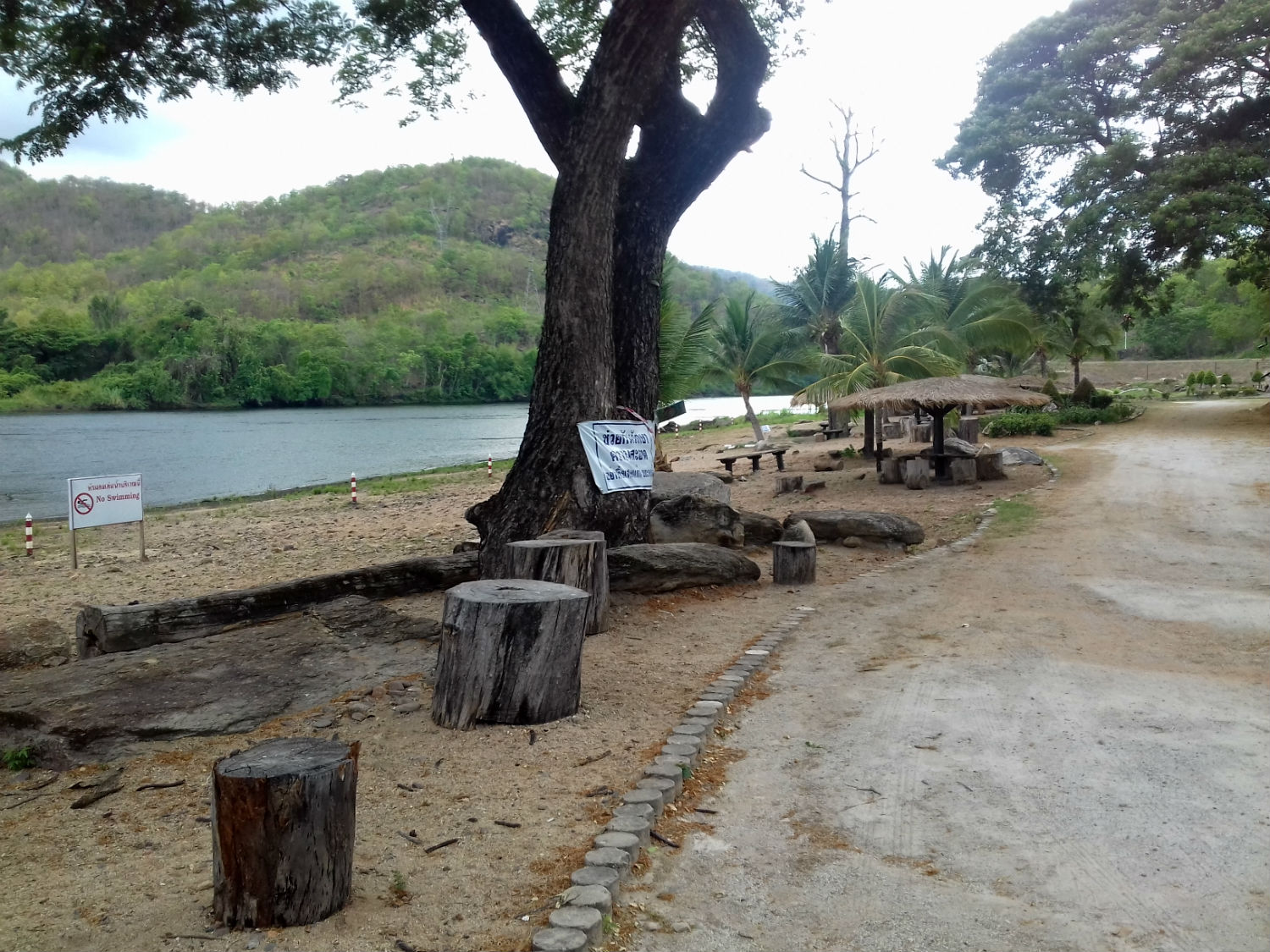
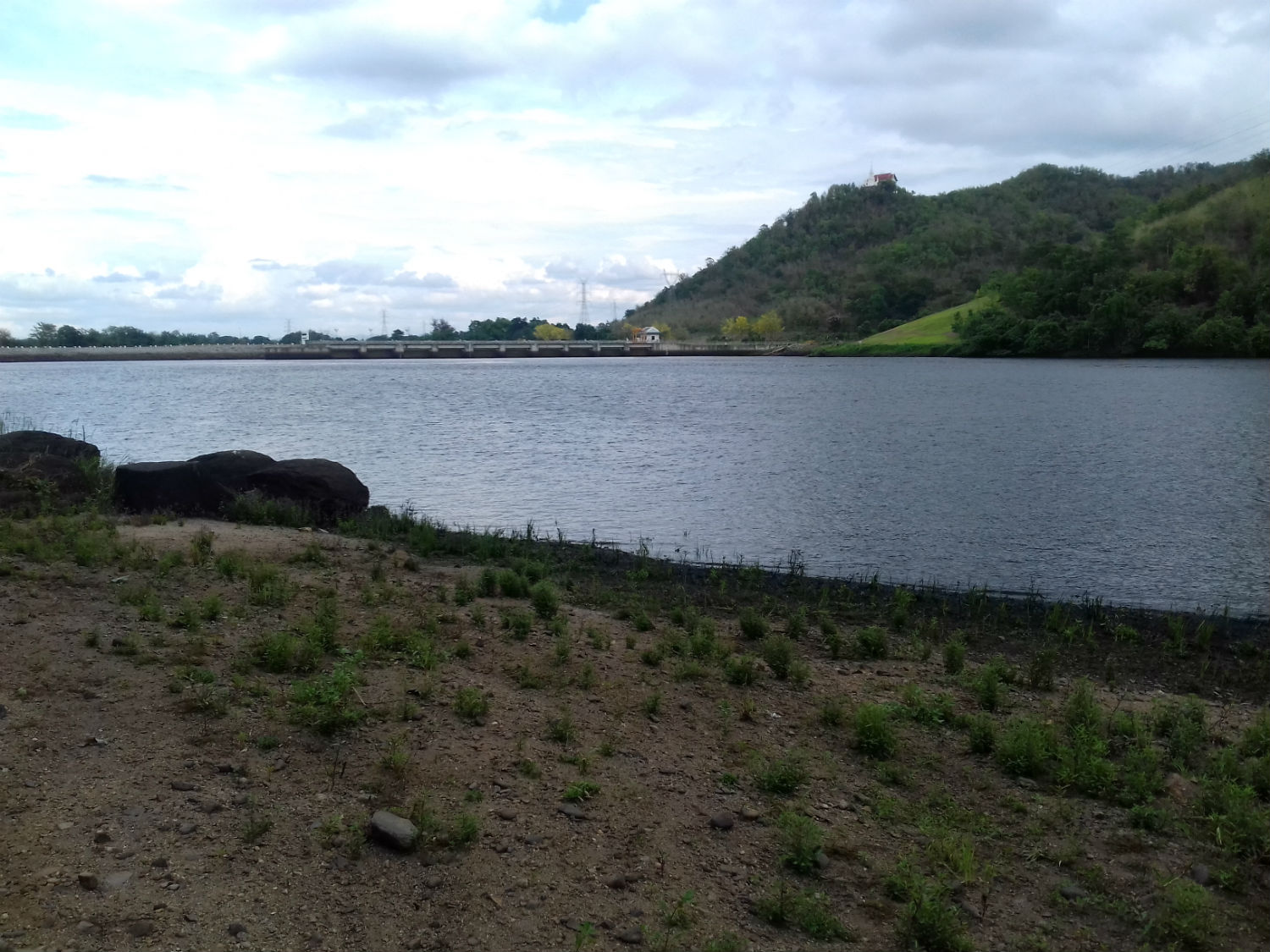 Bhumipol Dam, Tak Province
Bhumipol Dam, Tak Province
His Majesty would also have been aware that in addition the dam functions to regulate the supply of water by holding back water in the rainy season to prevent flooding of farmland and releasing more in the dry season to aid irrigation. There would also be a boost to the local economy in providing a natural source of fish as well as from tourism. Not for the first time this week, I note houseboats on the water: In fact as we are at the dam a group of tourists arrive by passenger van. They will be staying in the houseboats tonight.
Arriving at the dam much later than expected has left not too much time to enjoy the wonderful scenery but apart from that we can make our way to the city of Tak where our accommodation has been reserved.
Ban Tak........The city of Tak hasn’t had a great deal of time to build up a history. It was created when King Maha Thammaracha of Ayutthaya moved the old city to its present location in the 16th century: Prior to that Ban Tak (the old city) had been a frontier town on the west bank of the Ping River. Inevitably signs of the province’s ancient history would be found here. Lying north of Tak City it lies on our direction of travel.
Wat Phra Borommathat........Wat Phra Borommathat lies on the western bank of the Ping River in Ban Tak. The main feature of this temple is the Burmese style pagoda, replica of the Shwedagon Pagoda in Myanmar. The pagoda is 23 metres high and stands on a base 63 metres square. It is surrounded by 16 small pagodas, each 7.16 metres high. There are also 12 large and 6 small mondrops around the base for storing Buddha images. The present temple was built by Phra Thong Yoo Suriyo (1907-1974) the head monk, after his pilgrimage to the Shwedagon Pagoda. The site itself is very old, located on a hill called Doi Mahiyoungka. According to history the temple was built in 51 B.C. when a kingdom was known to exist much earlier than the kingdoms of Lawo (Lopburi) and Hariphunchai (Lamphun).
Arriving at the dam much later than expected has left not too much time to enjoy the wonderful scenery but apart from that we can make our way to the city of Tak where our accommodation has been reserved.
Ban Tak........The city of Tak hasn’t had a great deal of time to build up a history. It was created when King Maha Thammaracha of Ayutthaya moved the old city to its present location in the 16th century: Prior to that Ban Tak (the old city) had been a frontier town on the west bank of the Ping River. Inevitably signs of the province’s ancient history would be found here. Lying north of Tak City it lies on our direction of travel.
Wat Phra Borommathat........Wat Phra Borommathat lies on the western bank of the Ping River in Ban Tak. The main feature of this temple is the Burmese style pagoda, replica of the Shwedagon Pagoda in Myanmar. The pagoda is 23 metres high and stands on a base 63 metres square. It is surrounded by 16 small pagodas, each 7.16 metres high. There are also 12 large and 6 small mondrops around the base for storing Buddha images. The present temple was built by Phra Thong Yoo Suriyo (1907-1974) the head monk, after his pilgrimage to the Shwedagon Pagoda. The site itself is very old, located on a hill called Doi Mahiyoungka. According to history the temple was built in 51 B.C. when a kingdom was known to exist much earlier than the kingdoms of Lawo (Lopburi) and Hariphunchai (Lamphun).
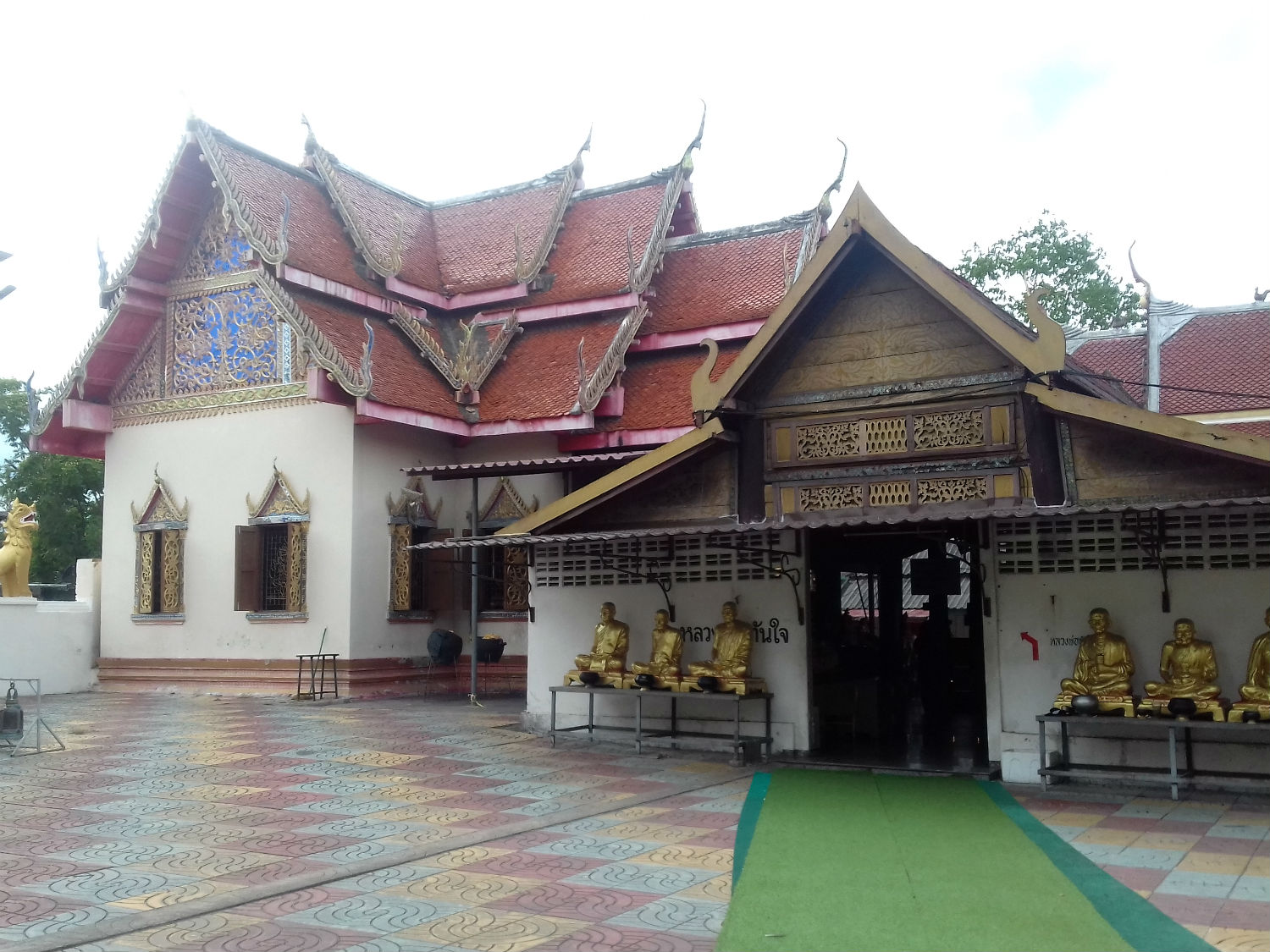
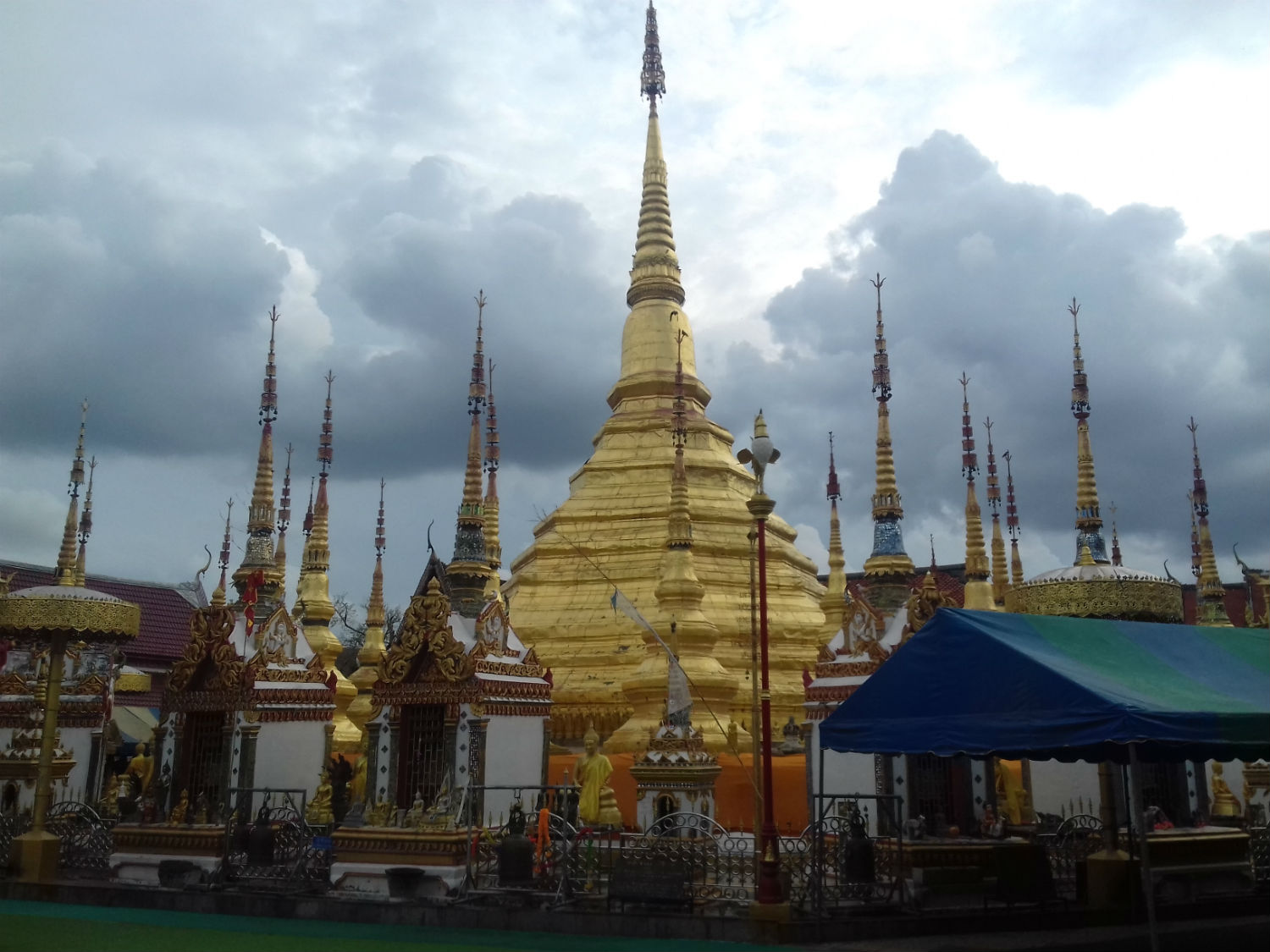
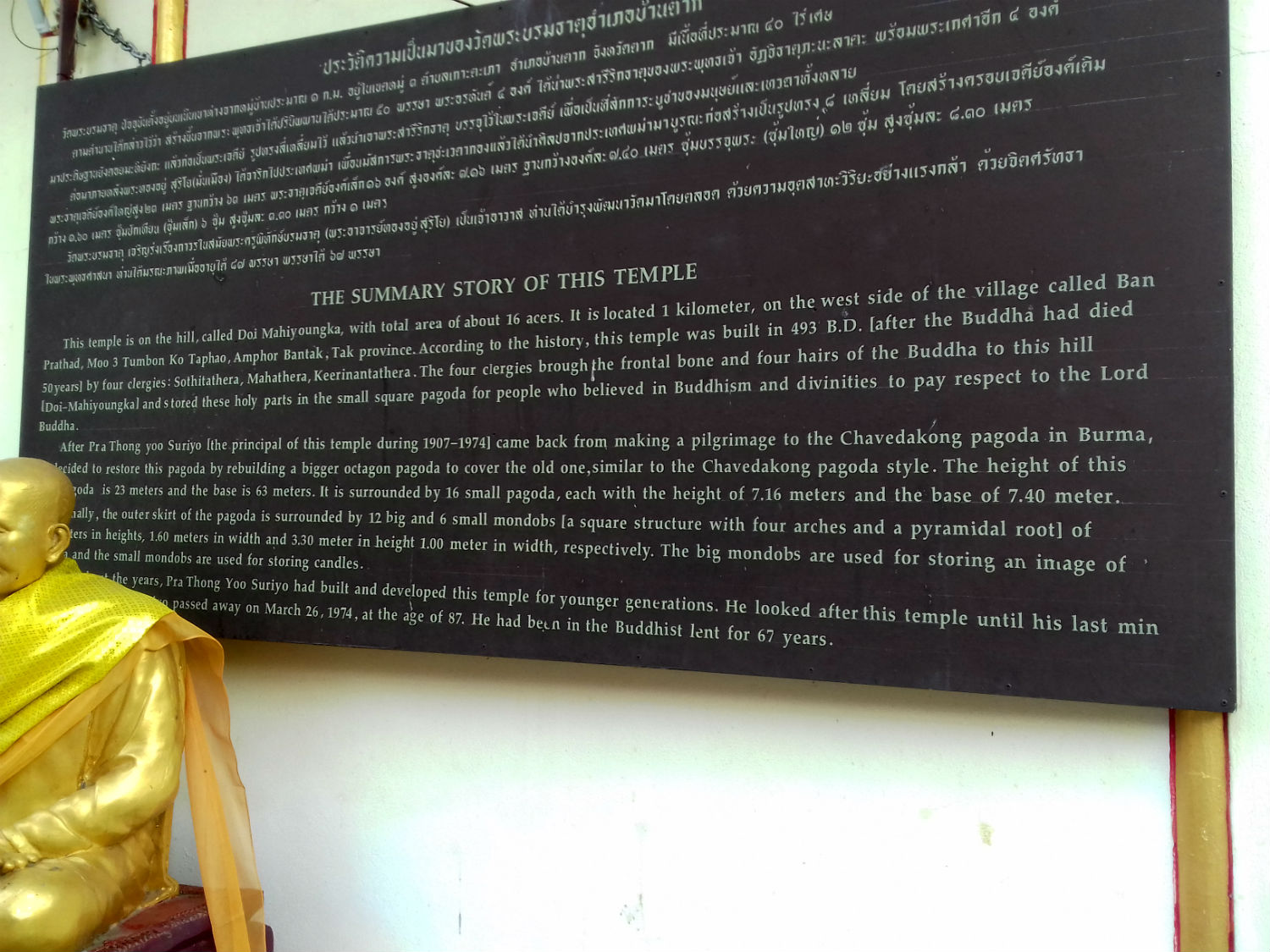 Wat Phra Borommathat, Ban Tak, Tak Province
Wat Phra Borommathat, Ban Tak, Tak Province
Tak Andaman Resort........Tak Andaman Resort is located on the west bank of the Ping River just one kilometer from the Ping River Bridge (Highway 1). Approaching from the north or west there is an awkward U-turn involving a change of direction. The resort itself is an older style building but lies secluded among lush vegetation with ponds and trees. The rooms are spacious and completely functional with traditional hardwood furnishings. A basic breakfast is included, coffee, toast and rice soup (American breakfast extra).
Realising this resort is a bit far from the city we take the car out and stock up at Big C hypermarket in the city. With dinner taken care of I don’t make much progress with my notes, preferring to listen to commentary of Hereford FC’s last Southern League game at St Ives. It’s another win but we are already champions. Next Page.
Realising this resort is a bit far from the city we take the car out and stock up at Big C hypermarket in the city. With dinner taken care of I don’t make much progress with my notes, preferring to listen to commentary of Hereford FC’s last Southern League game at St Ives. It’s another win but we are already champions. Next Page.
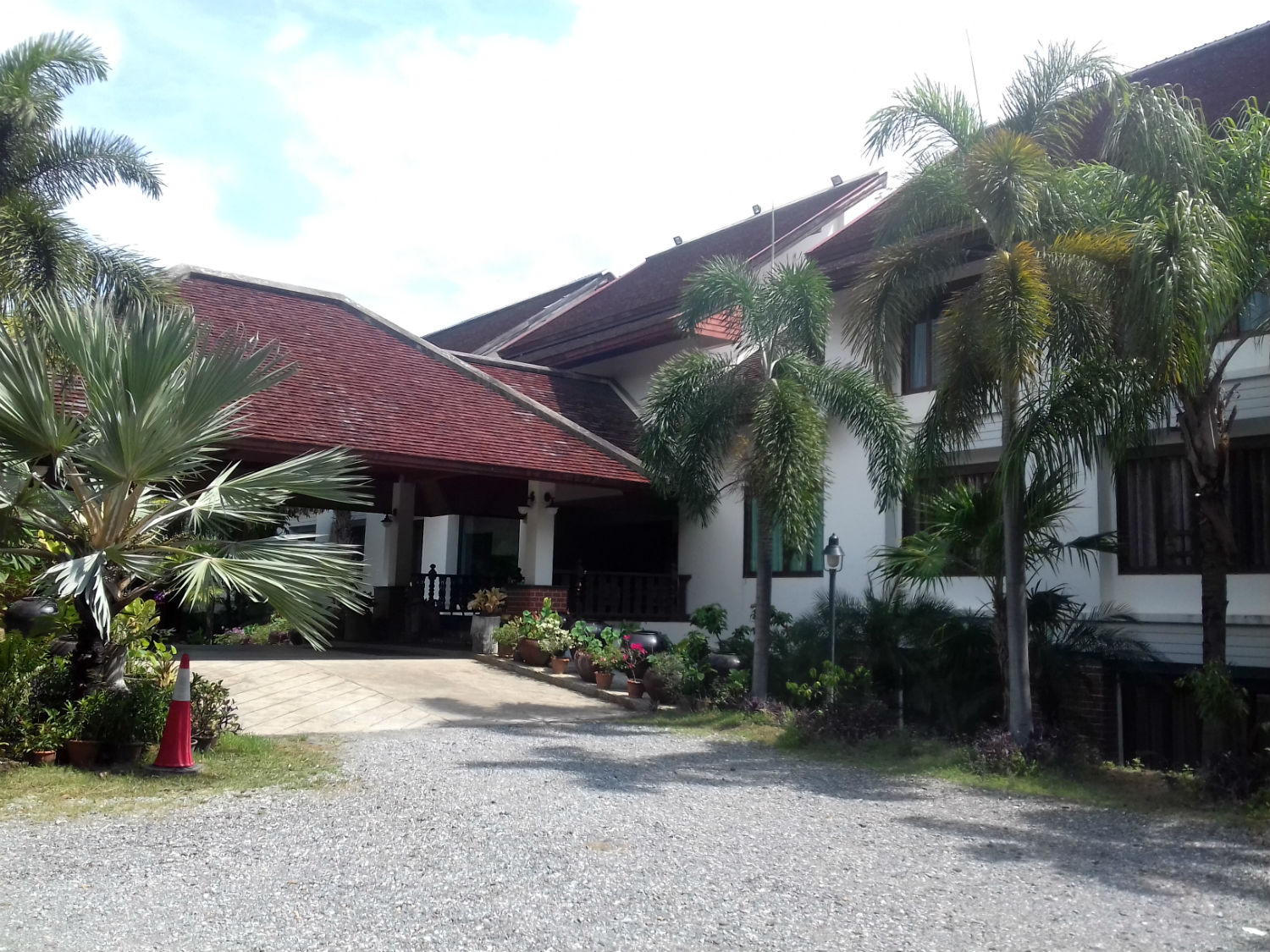
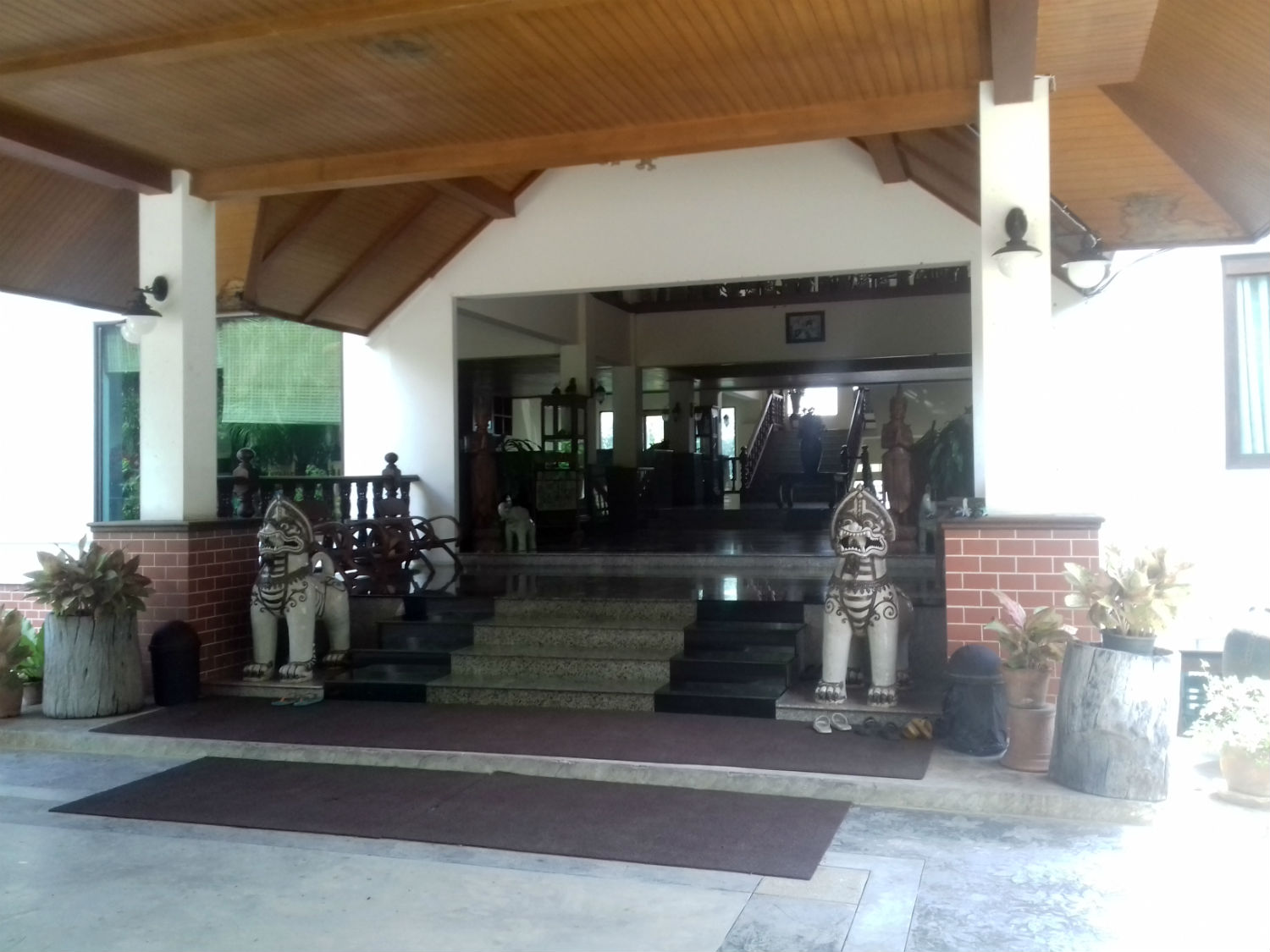
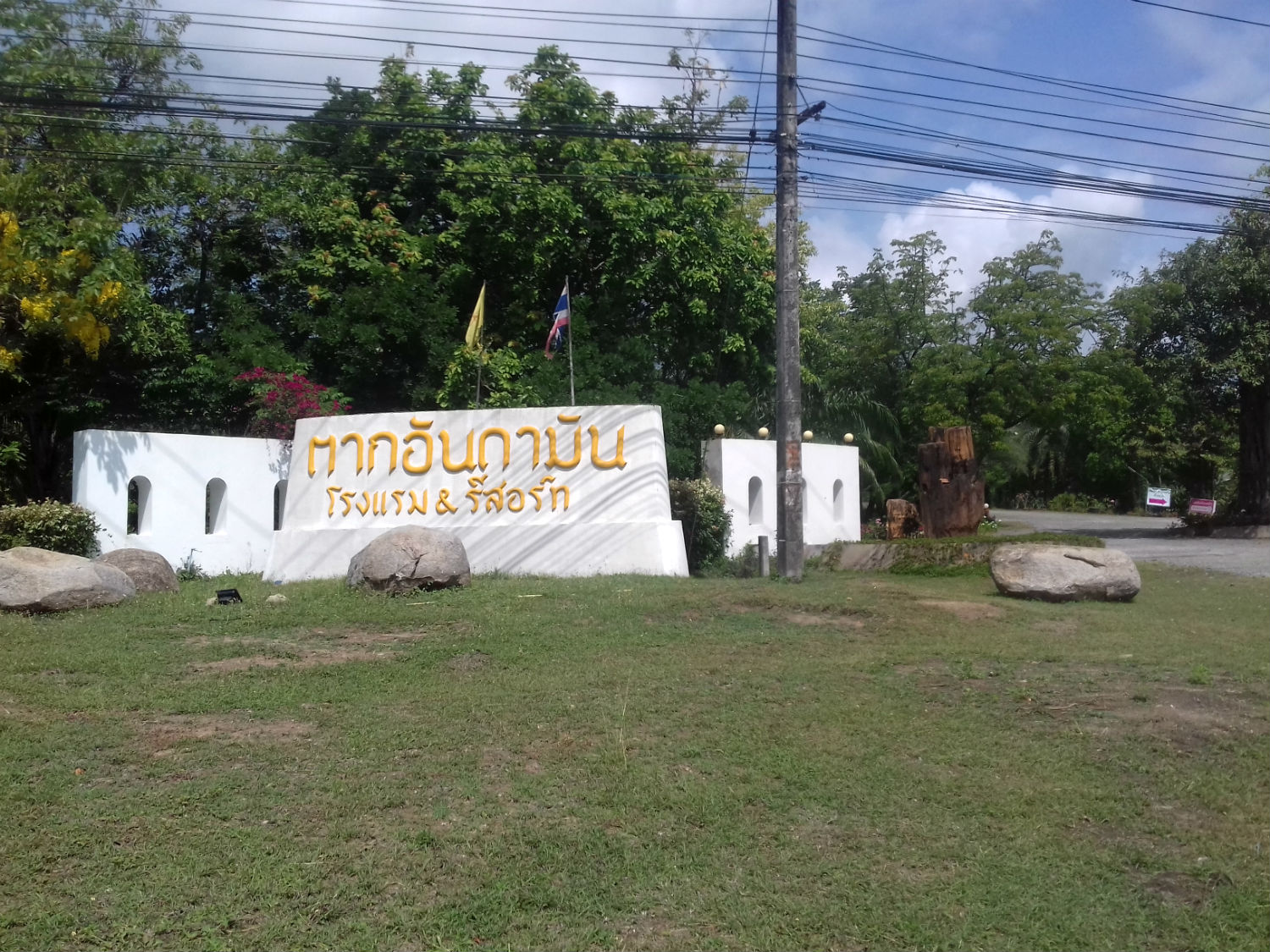 Tak Andaman Resort, Tak
Tak Andaman Resort, Tak